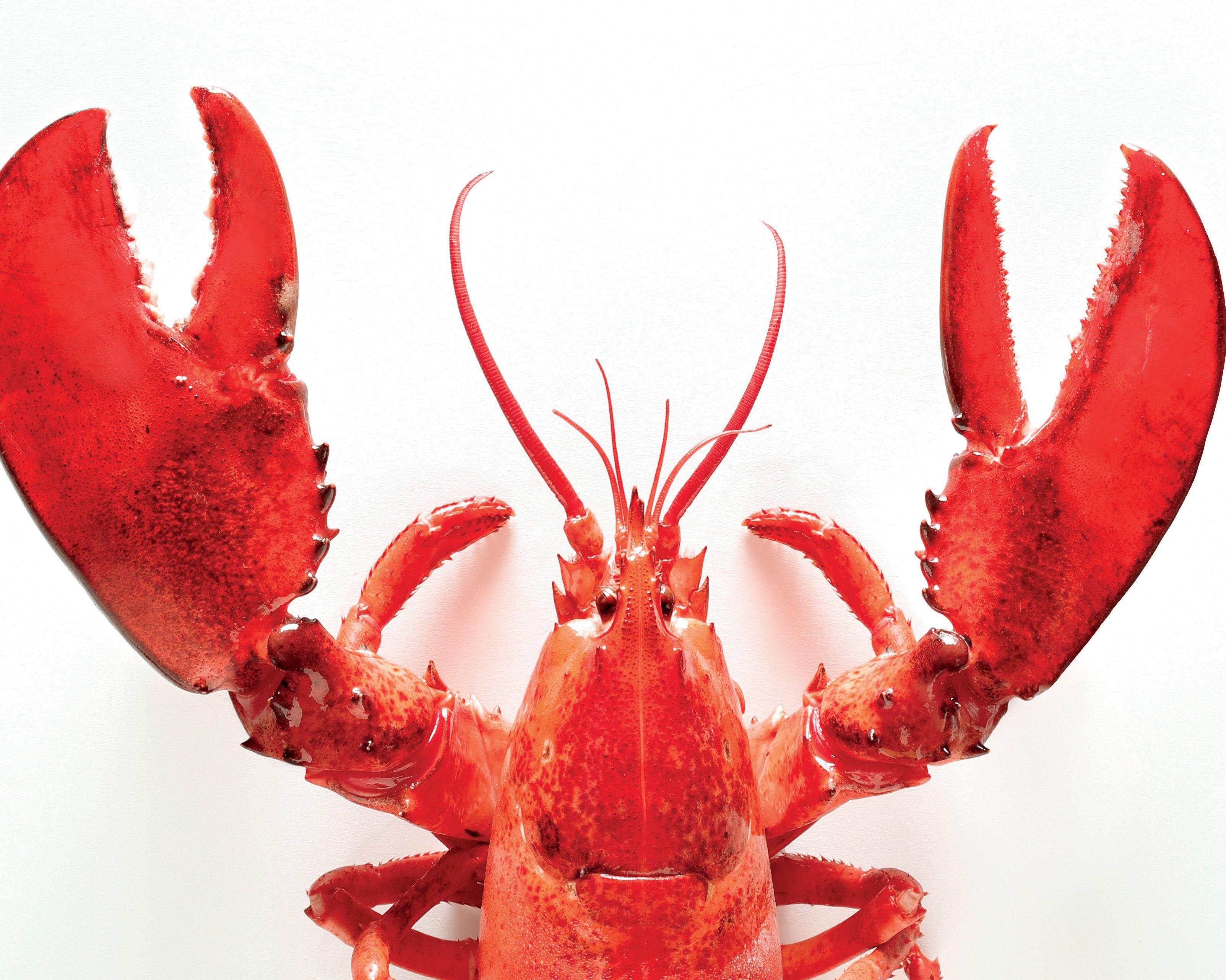





YOUR ON-THE-GO GUIDE TO CANAD A’ S EAST COAST saltscapes.com/travel 2023 ISSUE Sinkyour c l aws into Atlantic Canad a WATERFALLS, A WALK IN MI’KMAW SHOES, FRENCH SHORE TAPESTRY, YOUNG CHEFS, 8 ALTERNATIVE GOLF COURSES, SCIENCE AND
NIGHT CANOEING,
LLAMA WALKING
SPIRITS,
AND


























Visit NovaScotia.com to discover Your Ocean Playground. With breathtaking scenery, rich history, and friendly locals, Nova Scotia offers something for everyone. Of course, no trip is complete without taking in the majestic views of Cape Breton’s world-famous Cabot Trail. Franey Trail, Cape Breton Highlands National Park. YOUR ANTIDOTE TO ORDINARY.

NEW BRUNSWICK
Moncton dine around Surprising culinary experiences in the Hub city
A walk in Mi’kmaw shoes Fishing, feasting, and sleeping in Metepenagiag
Science and spirits Fredericton’s Science Centre is both educational and a little creepy
Roots and rocks, bears and fox Mountain biking in Kouchiboguac
Port City energy Here’s to Saint John’s new swagger and a nifty waterfront container village
Fun with a twist Night kayaking, llama walking and more in New Brunswick NEWFOUNDLAND AND LABRADOR 24 Of U-boats and fish cakes What to do (and eat) on Bell Island, Newfoundland and Labrador 26 The town that labour built A visit to Port Union
Older than the pyramids Experience Indigenous heritage in Newfoundland and Labrador 30 War, wireless and whales Signal Hill is a must-visit
History in Embroidered form The French Shore Tapestry of Conche, N.L. rivals the famed Bayeaux Tapestry NOVA SCOTIA 34 Annapolis Valley terroir Getting to know Nova Scotia’s wine region
A rare encounter How to be one of only 400 annual visitors to Sable Island
The middle of a much longer story 10 national historic sites to visit in Nova Scotia 48 Picnics and lobsters Enjoying local delights in Atlantic Canada
From fresh bread to fine art The new LaHave PRINCE EDWARD ISLAND
Paddling through a tunnel Kayaking at Nature Space Eco Resort contents
6
8
11
14
17
20
28
32
38
42
52
55
Your staycation plans start here! NEW BRUNSWICK TOURISM/BRIAN
ATKINSON
3 YOUR ON-THE-GO GUIDE TO CANADA’S EAST COAST
A Mi’kmaw woman with traditional baskets.
Publisher
Fred Fiander • ffiander@saltscapes.com
Editor-in-Chief
Crystal Murray • cmurray@saltscapes.com
Senior Editor
Jodi DeLong • jdelong@saltscapes.com
Senior Editor/Copy Chief
Trevor J. Adams • tadams@metroguide.ca
Vice President of Business Development
Linda Gourlay • lgourlay@saltscapes.com
Account Executives
Susan Giffin • sgiffin@saltscapes.com

Pam Hancock • phancock@saltscapes.com
Senior Director Creative Design and Production
Shawn Dalton • sdalton@saltscapes.com
Production Coordinator
Nicole McNeil • nmcneil@metroguide.ca
Production and Design Assistant
Kathleen Hoang • khoang@metroguide.ca
Designers
Roxanna Boers • rboers@saltscapes.com
Andrezza Nascimento • anascimento@metroguide.ca
Zoey Zsingor • zoey@acgstudio.com
Saltscapes is published seven times annually by: Metro Guide Publishing, a division of Advocate Printing & Publishing Company Ltd. 2882 Gottingen St., Halifax, N.S. B3K 3E2

Tel: (902) 464-7258, Sales Toll Free: 1-877-311-5877
Contents copyright: No portion of this publication may be reprinted without the consent of the publisher.
Saltscapes can assume no responsibility for unsolicited manuscripts, photographs or other materials and cannot return same unless accompanied by S.A.S.E. Publisher cannot warranty claims made in advertisements. Saltscapes is committed to Atlantic Canada’s unique people, their culture, their heritage, and their values.
Subscription Services
Enquiries please contact: Toll Free: 1-877-885-6344 subscriptions@saltscapes.com
PO Box 190 Pictou, N.S. B0K 1H0
Subscriptions: Canada, one year (7 issues) $29.95, two years (14 issues) $48.95 (plus applicable tax) U.S. one year C$29.95 plus $17.00 shipping Overseas one year C$29.95 plus $29.00 shipping Subscriptions are non-refundable. If a subscription needs to be cancelled, where applicable, credits can be applied to other Metro Guide Publishing titles. Please note that each circumstance is unique and election to make an offer in one instance does not create obligation to do so in another.
We acknowledge the financial support of the Government of Canada.
Canada Post Publications Mail Agreement No. 40064799 ISSN 1492-3351
Return undeliverable Canadian addresses to: Saltscapes Subscriptions, PO Box 190 Pictou, NS B0K 1H0 E-mail: subscriptions@saltscapes.com
Printed by: Advocate Printing & Publishing, Pictou, N.S., Canada
On our cover
Saltscapes: Photography by Steve Smith, VisionFire Sobeys: GettyImages/Saddako
Bay Ferries & Northumberland Ferries: Photography by Steve Smith, VisionFire
Saltscapes is a member of:
Canadian Magazine Publishers Association CMCA AUDITED

58 Will that be Cabernet or Merlot Sleeping in P.E.I.’s floating wine barrels 62 A Canadian pilgrimage Enjoying P.E.I.’s Camino de la Isla MAGDALEN ISLANDS 66 Into the Washing Machine Caving the Magdalen Islands 68 From boar to bagoose Bring your sense of culinary adventure to the Magdalen Islands ATLANTIC PROVINCES 72 Other people’s gardens Inspire your green thumbs by visiting great public and private gardens 76 Young, talented, and hungry Atlantic Canada’s up-andcoming chefs 79 High forces Dramatic waterfalls of the East Coast 84 Great golf games Enjoy good courses without breaking the bank 88 ADVERTISING: 10 Reasons to travel by ferry in 2023 From sea views to saved time, Bay Ferries and Northumberland Ferries offers great fun for all RECIPES 7 Sugar Pie 10 Bread on a Stick (Luskinikn) 25 Newfoundland Fish Cakes 40 Lobster Stuffed Digby Scallops 53 Molly Bars 67 Madelinot Pot-en-Pot 69 Cranberry Pie 77 Korean Sticky Soy Bits KIM SHIPP
2023 issue
Memorial University Botanical Gardens
BRADY MCCLOSKY Green Gables Golf Club 4 YOUR ON-THE-GO GUIDE TO CANADA’S EAST COAST
YOUR ON-THE-GO GUIDE TO CANADA’S EAST COAST
Hotel North

The
•Newly Renovated Rooms
•Free Wifi
1-877-996-9301
1-709-896-9301 HOTEL
1-888-892-5505
•Mariner’s Galley on Site Restaurant
•Smoke Free Pet Free
•Jungle Jim’s On Site Restaurant
•Conference & Banquet Facility
•Free Wifi
•Smoke Free Pet Free
•Newly Renovated Rooms
•Free Wifi
1-855-454-3300
•Jungle Jim’s on Site Restaurant
•Smoke Free Pet Free
•Newly Renovated Rooms
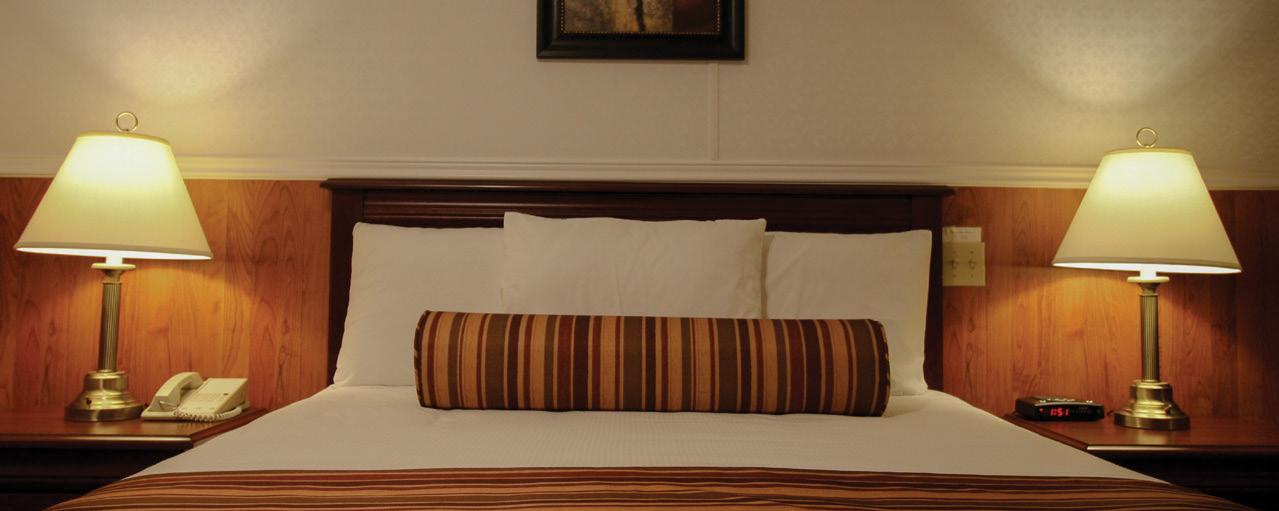

•Free Wifi
North Sydney, NS 39 Forrest St
1-800-561-8585
1-902-794-8581 MOTEL

1-877-996-9301
1-709-896-9301
C: 1-709-897-5745
•Conference & Banquet Facility
•Smoke Free Pet Friendly
•Mariners Galley on Site Restaurant

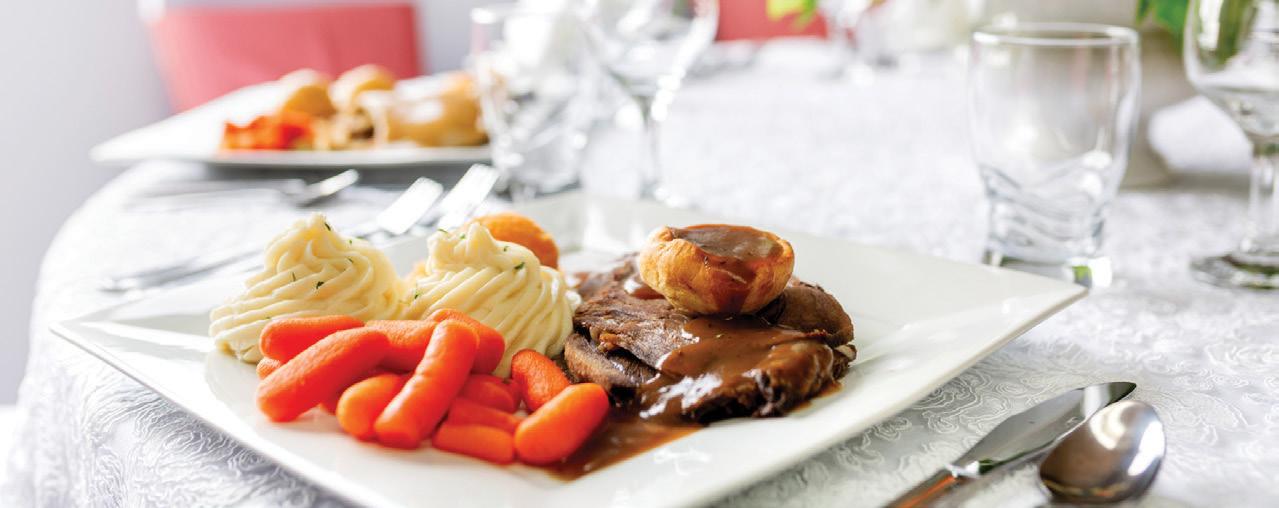
•1 & 2 Bedroom efficiency Units
•Laundry Facility
•Smoke Free Pet Free
•Free Wifi
•NWR Beach in walking distance
www.hotelnorth.ca
to stay
place
while you are away
Happy Valley-Goose Bay, NL • St. Anthony, NL • North Sydney, NS • North West River, NL
NORTH
HOTEL
Happy Valley-Goose Bay, NL 25 Loring Dr
NORTH TWO
Happy Valley-Goose Bay, NL 382 Hamilton River Rd
NORTH ST ANTHONY
1-709-896-3398 HOTEL
St. Anthony, NL 31-51 West St
NORTH SYDNEY
1-709-454-3300 HOTEL NORTH,
NORTH
North West River, NL 13 Paddon Rd
Icould be in Paris. My waiter, who introduces himself as Frederique, assembles the Windjammer’s classic 14-ingredient Caesar salad at his cart next to my table. Dressed in a sharp suit, Frederique grates fresh parmesan over torn romaine sprinkled with anchovies and croutons, then tosses with lemony Caesar dressing.
The presentation and Frederique’s accent say Paris, a feeling borne out by the menu’s many French-inspired dishes: steak tartare, oysters on the half shell with mignonette sauce, baked escargot, seared duck breast, Chateaubriand, and for dessert, crème brûlée.
Classic white-tablecloth dining at the Windjammer inside the Delta Beauséjour Moncton has anchored an unexpected and thriving culinary scene in New Brunswick’s largest city for decades. Still, the chefs at Windjammer work to stay current with fine dining trends, recently adding wagyu, possibly the world’s most prized and expensive steak, along with local snow crab cakes, yellowfin tuna, and Atlantic salmon.
Moncton Dine Around
Surprising culinary experiences in the Hub City
BY DARCY RHYNO
French fine dining is doing just fine in Canada’s only officially bilingual province, but if Moncton’s culinary scene has a theme, it’s variety.


I could have easily gone with the global vegetarian menu at Calactus, a casual eatery beloved for burritos, enchiladas, and nachos. Calactus spices up its varied menu with Indian pakoras, Italian cannelloni, and Middle Eastern falafel. Other Moncton restaurants add to the international flavours available around town, such as at the Vietnamese-inspired Red Satay Grille and the Tunisian, Lebanese, and Moroccan-influenced Blue Olive.
The Pump House Brewpub is a New Brunswick craft beer pioneer and a Moncton fixture since 1999. It’s as much a mainstay as Windjammer, although at the opposite end of the culinary spectrum. Along with Picaroons in Fredericton, Pump House kickstarted what is today a provincewide industry. Just around the corner from Windjammers, Pump House pours signature beers like Cadian Cream
and Blueberry Ale. From the wood-fired oven, it turns out unique pizzas like the Smoke-Show, topped with smoked brisket, pulled pork, roasted red peppers, red onion, pepper jack cheese, and barbecue sauce made with the Fire Chief’s Red Ale.
Within a stone’s throw of both Windjammer and Pump House, things are always buzzing at the Tide & Boar Gastropub, popular for its contemporary spin on classic pub food. It’s Funky Burger Fridays and I’m chilling with a craft beer brewed on site. The grilled burger changes weekly. The aroma pulls pedestrians in from the sidewalk.
To fully enjoy this creative kitchen, it’s best to toss aside the menu and rely on the specials: Korean barbecue brisket tacos
DARCY RHYNO
DARCY RHYNO 6 NEW BRUNSWICK
or blackened salmon with pineapple salsa and black bean, corn succotash, or French beef dip with crispy onions.

After all these mains, it’s time for dessert. At Halo Donuts, fans of The Simpsons will chuckle at the D’Oh-nut called the Homer — the pink frosting and rainbow sprinkles bring to mind that character’s favourite food. Made either from raised dough or cake batter, these all-original, house-made dunkers can be light and fluffy for classic toppings or dense and sweet for favourite flavourings like cinnamon and sour cream.
At Tony’s Bistro and Patisserie near Moncton university, a short drive from downtown, the mains are delicate and delicious, but it is the pastries and desserts that make it a Moncton must. Colourful Parisian-style macarons often decorate tarts, cakes, and pies. With opera cakes, mille feuille, and éclairs, Tony’s echoes the European flair found at Windjammer. Fans of The Great British Baking Show will admire the artistic touch on each and every sumptuous dessert.
Perhaps most unexpectedly, there’s now a winery in Moncton. Magnetic Hill Winery overlooks the city from its namesake quirky tourist attraction, the slope that seems to pull cars uphill. Just above the giant slides and swimming pools at Magic Mountain, the Everett family renovated a rundown farmhouse and built a winery. In 2005, they started selling wines made with grapes, berries and rhubarb, some grown on site.
The family is continuing to hone their winemaking skills, but on a tasting tour with Zach Everett, I discover that Magnetic Hill wines have matured quickly. They now age reds in oak barrels and practice traditional sparkling wine techniques. Downstairs in the barrel room, Everett uncorks a few vintages for sampling.
The first is named Illusions, named for the gravity defying hill. It’s a crisp, medium white with a citrusy finish that would recommend it as a seafood pairing. Everett reveals the name’s full meaning when he shares it’s made not from grapes, but from rhubarb. Next up is the sparkling


Sugar Pie
This recipe for sugar pie topped with whipped cream and berries is courtesy of Tony’s Bistro & Pâtisserie in Moncton.
Ingredients
9-inch pie shell
½ cup (100 mL) heavy cream

1 ¾ cups (400 mL) brown sugar
1 ½ tbsp (25 g) unsalted butter
1 ½ tbsp (25 g) all purpose flour
2 eggs
Instructions
Bring cream, sugar and butter to a boil. Sift in flour and bring back to a boil. Let the temperature cool to 122°F (50°C) and add eggs. Whisk until well blended. Pour mixture into the pie shell and bake at 325°F (163°C) for 35 minutes. Serve with whipped cream and your favourite berries.
Resurgo Rosé, which pours a frothy red. It’s a semi-dry that again surprises for its rhubarb and berry base.

Finally, Everett takes samples from a wooden barrel and distributes small tastes of a deep, amber wine. This is an intense, sweet, but complex vintage with a mysterious, smoky finish. Everett explains that we’re sampling Maple Swish, a dessert wine made from maple syrup aged in Kentucky bourbon barrels. His perfectly descriptive name for this rare treat is “oaky, smoky whiskey maple.”
I hold my glass to the light, savouring this winery’s finest, both for the intensity of its colour and the unexpected maple smokiness of its flavour. It’s the perfect drink to toast the surprising city down the hill for all its variety. I chuckle to myself as I think, this wine is so good, I could be in Paris.
NEW BRUNSWICK TOURISM/ EMILIE IGGIOTTI
DARCY RHYNO
The wine cellar, Magnetic Hill Winery, Moncton, N.B.
A beautiful steak at the Windjammer.
WINDJAMMER –DELTA HOTELS BY MARRIOTT BEAUSÉJOUR
Tide & Boar Gastropub, Moncton.
TIDE & BOAR
GASTROPUB
7 NEW BRUNSWICK
Tide & Boar Gastropub, Moncton.
A walk in Mi’kmaw shoes
Fishing, feasting, and sleeping in Metepenagiag
Steve Paul imagines a time when millions of salmon would’ve been going upriver.
“The riverbank was full of tipis and thousands of people just bustling and hustling, preparing food for the community to survive the winter,” he says.
Paul and I drift in kayaks with the gentle current of the Little Southwest Miramichi River past Oxbow National Historic Site in New Brunswick. If he hadn’t pointed it out, I would have admired the site as a lovely wooded area, nothing more. The community wishes to respect the integrity of the site, so there’s not even a plaque. Yet as Paul describes a typical day here some 3,000 years ago, I can imagine the summer fishing camp crammed with tipis and dotted with fires where families smoked salmon and sturgeon.

“It’s a truly sacred, spiritual place for us,” says Paul. He and his wife Florence recently started First Nations Tourism on the Metepenagiag Mi’kmaq Nation, a community of 500 in New Brunswick, to teach people about this sacred heritage.
Adjacent to Oxbow is a second national
historic site. The Augustine Mound dates back 2,500 years. It’s a burial ground where artifacts discovered here in the 1970s link the Mi’kmaq to the Adena culture of the Ohio River Valley. The Ohio fireclay pipes, ornaments of Lake Superior native copper, stone tools, and textiles might have been lost forever to a gravel pit development, if not for Joseph Augustine, a former chief of

the Metepenagiag nation who discovered the burial mound.
I paddle with Paul to a quiet inlet in the forest. We nose our kayaks into the weeds. Paul points to the top of the tallest tree and whispers, “See the nest?” Atop the pine sits a stack of sticks that must be a metre deep. A bald eagle peers over the edge and I think, it’s no wonder Paul speaks of this as a
The area is a sacred place for the Mi’kmaq, says Steve Paul.
Oxbow National Historic Site, Metepenagiag Heritage Park.
8 NEW BRUNSWICK
STORY AND PHOTOGRAPHY BY DARCY RHYNO
spiritual place, a settlement with 3,000 years of continuous Mi’kmaw presence.



In the afternoon, Paul takes me fly fishing, teaching me what his father taught him. “My dad was a guide for over 40 years to all the camps around here,” he says. “He had a love for the outdoors, and he passed that on to me.”

Paul selects a fly he tied himself, hands me the rod, and guides me to a good position in the river. He teaches me to flick the fly to the precise spot in the current where’s he’s hooked many a fish and encourages me to relax, to get into a rhythm.
“Fishing gives you a chance to disconnect,” he says. “You just listen to the
 Top: Canoe inside Metepenagiag Cultural Centre.
Above: The glamping tipi at Metepenagiag Heritage Park.
Top: Canoe inside Metepenagiag Cultural Centre.
Above: The glamping tipi at Metepenagiag Heritage Park.
www.heritagepathtour.com Welcome to Welcome to (506) 521-0308 www.heritagepathtour.com Welcome to ELSIPOGTOG MI'KMAQ CULTURAL CENTRE Heritage Path Tour & Artisan Gift Shop 9 NEW BRUNSWICK
Bread on a Stick (Luskinikn)

Ingredients
1 cup (250 mL) flour
1 ½ tsp (7 mL) baking powder pinch of salt few drops of oil water
Directions

Mix the flour, baking powder, and salt in a bowl. Add the oil and enough water to make a dough. Don’t overwork. Roll the dough into a snake of about an inch in diameter. Spiral it around a freshly cut maple stick, making sure the dough will not fall off. Bake over an open fire, turning often to lightly and evenly brown. Serve with butter and jam.
water, pushing against you. You might see ducks or beaver, a deer crossing the river.”
As I practise my cast, it occurs to me that the act of fishing is itself the goal, rather than the catch. It’s a quiet, contemplative sport, almost meditative. Fishing with others fosters reflection and thoughtful conversation.
“Fishing also allows me to reconnect with who I am as an Indigenous person,” says Paul, “doing things on the land and sharing that with others. We’re striving to break down barriers and build relationships. We’ve been doing this since the arrival of people from other parts of the world to our lands. We welcomed them and shared with them our gifts. I want to continue that journey.”
I don’t land a salmon, but a cookout is on the itinerary. Paul tells me how his people share fish and other resources with each other regardless of their ability to contribute, as they have for millennia. In the spring, he and Florence gather hundreds of pounds of fiddleheads (the edible shoots of the ostrich fern), freeze what they need, and give the rest away.


“We just put a bin on our front lawn and send a message on Facebook that we have fiddleheads,” says Florence. “Just bring your own bag and take what you want.”
After a meal of planked salmon marinated in maple syrup with a side of fiddleheads, Paul shows me how to make dessert: an unleavened bread called luskinikn that he snakes around a maple branch, roasts before the fire, and slathers with butter and blueberry jam. Paul calls this version “bread on a stick.” It’s slightly smoky, crispy on the outside, and steaming inside.
As the fire burns low, the Pauls send me off to my accommodations with leftovers and gifts to take home to my family. A few minutes later, I arrive at Metepenagiag Heritage Park, overlooking the Oxbow and Augustine Mound National Historic Sites, to discover that my night in a tipi is actually a night of glamping. Inside, I find a comfortable queen-sized bed, electrical outlets, and Wi-Fi.
After dark, I head outside to take a few photos of the wildlife paintings decorating my tipi, which is lit from within. The only other light comes from the night sky overhead. Looking up, I am humbled by the thought that I’m peering at the same constellations that generations of Mi’kmaq have pondered from this very bend in the river for the past 3,000 years.
Steve Paul wrapping luskinikn dough, a simple bread, on a maple branch.
10 NEW BRUNSWICK
Planking salmon.
Science and Spirits
Fredericton’s Science Centre is both educational and a little creepy
STORY AND PHOTOGRAPHY BY DARCY RHYNO
I’m standing in a space so tight, I can barely turn around, yet reflections of myself surround me. They recede into the distance. I ponder the illusion. How do a few mirrors in a circle create infinity?

Such are the mind-bending thoughts and questions that arise inside the Infinity Exhibit at Science East, Fredericton’s science centre. The exhibit is simple and effective. For spokesperson Lieff Salonius, it’s exactly the kind of exhibit that makes Science East stand out in a world of giant, flashy science centres. Even more remarkable is the building’s history as a jail.
“This is one of the more interesting examples of adaptive reuse in architecture in Canada,” says Salonius. “We are, as far as we know, the only science centre in the world in a former prison. The structure of the building binds itself into the design of our actual exhibits … Science centre exhibits are often massive things. They think bigger is better.”
Not at Science East. The outside walls are a metre thick and the inside partitions are almost 50 centimetres. Heavy, barred doors are still affixed to some of the doorways. The exhibition space is a series of small rooms, so Salonius and her colleagues have to be creative.
When it comes to customizing the kinds of exhibits normally found in science centres that help kids understand scientific concepts, designers at Science East discovered that, when it comes to kids, smaller is smarter. Downsized exhibits don’t overwhelm the little ones. Buttons and handles are in easy reach. While I had to squeeze into the Infinity Exhibit, kids pop in and out. There are 150 exhibits to explore in this relatively small building.
Kids shoot lasers, fire air cannons at each other, see themselves in infrared, and leave their shadow behind. In keeping with the “smaller is smarter” approach, kids get super excited at the insectarium, where

creepy crawlies like hissing cockroaches and giant stick bugs do their thing. Science East also finds ways to interpret big concepts with small exhibits: there’s a tabletop exhibit where kids can create an earthquake, a corner to make a mini tornado, and an exhibit explaining climate change.

Into the dungeon
The upper floors are only half the story. Downstairs in the basement, which staff nicknamed the Dungeon, notorious criminals survived on bread and water, often in solitary confinement.
Built between 1840 and 1842, the York
Small displays, and plenty of them, will entertain children for hours.
11 NEW BRUNSWICK
Infrared display at Science East.
Top family experiences in Fredericton

Kingswood Entertainment Centre
Kids will never want to leave this gigantic indoor playground, with 30 bowling lanes, 30 arcade games, an inflatable obstacle course, laser tag corner, and a gymnastics facility. There’s also golf for parents. kingswoodpark.ca/entertainment
Mactaquac Provincial Park
On the aerial adventure course by TreeGo Mactaquac, kids can safely try progressively challenging activities while enjoying the surprises along the way. Down below, there’s swimming at the beach. parcsnbparks.info/en/parks/10/ mactaquac-provincial-park

Hartt Island RV Resort & Water Park
It’s indeed all about the water, here — a giant twister slide, racing slide, whirlpool, and water sprays. Take the kids out in a rental kayak, paddleboard, or canoe. harttisland.ca
Kings Landing
At this replica 19th-century village, kids can roam among the farm animals, sign up for day-long blacksmithing camps, and rent a period costume. If you have more time, consider overnight programs. kingslanding.nb.ca
Quillis Family Fun Factory
There’s indoor and outdoor fun for kids here in Woolastook Park with a giant floating obstacle course and a whole lot of inflatable bouncy slides. quilli.ca
Hiking, Cycling Trails
Rent some bikes or e-scooters or just head out on foot along some of Fredericton’s many trails. Especially fun is a walk across the river on the former train bridge. fredericton.ca/en/roads-parking/ active-transportation/trails
Calithumpians
This theatre troupe offers terrific family fun in the form of summer theatre, music, silliness, and skits. In the fall, dare sign up for the Haunted Hike.
calithumpians.com

Unplugged: A Board Games Café
It’s a blast from the past of board games around the family table. Upstairs, the fun continues with escape rooms, including one designed for kids. unpluggedgamescafe.com
Clay Café
Paint your own pottery at this downtown favourite. claycafefredericton.com
New Brunswick Sports Hall of Fame
For sports-oriented kids, here’s a chance to learn about the province’s greatest athletes and their incredible feats. Fun activities such as the sports simulator make this more than a museum. nbsportshalloffame.com
12 NEW BRUNSWICK
County Jail held convicts for more than a century, closing in 1996. Before electricity, this was indeed a cold, dark dungeon, relying on candlelight and a single fireplace. However, for much of its working history, the jailer and his family lived here, caring and cooking for prisoners.

As I tour the tiny, gloomy rooms, I hear surprisingly entertaining and educational stories. Salonius tells me about a prisoner who escaped every night to visit a girlfriend, then broke back into his cell before anyone noticed he was missing. In another anecdote, a couple of the most dangerous characters in the prison’s history were musicians, so the jailers bought them guitar strings and joined in singalongs.
One basement exhibit fills a prison cell. Here, kids and grownups learn about forensic sciences such as the use of DNA evidence in trials and convictions.

“It’s part of what makes the jail interesting,” says Salonius. “I think crime scene investigations and technologies
are interesting to people because it’s a mystery. People love puzzles. We’re trying to reconstruct reality using science.”
The site’s criminal history adds a mysterious ambiance. Workers tell stories of strange energies, flashing lights, and unexplained sounds. It’s no wonder Salonius says the youngest kids are hesitant to descend, double daring each other down the stairs.

“It’s a bit of a rite of passage to come down here,” she says. “By the time they hit 10, they’re super curious, and they just run down. It’s nothing to them.”



For over 150 years, these thick walls and small rooms housed the convicted. Today, the building’s construction and history make for one of the world’s most unique science centres. When I ask about the jail’s future, Salonius gives a typically thought-provoking answer: “Who knows whether it will be the science centre forever? I will leave what it could be in 200 years to your imagination.”
 The Door of No Return in the basement.
The Door of No Return in the basement.
Visit us at lakewayhouseboats.com Mactaquac, New Brunswick Email: lakewayhouseboats@gmail.com Phone # 888-452-5392 Luxury houseboat rentals Houseboats available to accommodate 6, 10, and 14 from May to October 13 NEW BRUNSWICK
Thick walls and barred windows still characterize the former jail that houses Science East.
Roots and rocks, bears and fox
Mountain biking in Kouchibouguac
STORY AND PHOTOGRAPHY
BY DARCY RHYNO
Getting into a flow is difficult with so much water on the trail, but I find myself in a rhythm anyway, snaking through gnarly rock gardens and hopping over tree roots, at times riding so loose, I fear I’ll crash. But of course, riding on the edge is part of the thrill of mountain biking.
Last night, a wild storm knocked out power here along New Brunswick’s Acadian Coast. The wind-downed trees and heavy rains filled rivers and streams to flood levels. When I started out for Kouchibouguac National Park this morning, I wasn’t sure if the conditions would make for a hard ride or if perhaps they would prevent me from riding at all.
I parked at the information centre near the entrance and rode the three kilometre gravel trail just past Petit-Large where the one-way Major Kollock Creek Trail made for mountain biking begins. About a kilometre in, the trail crosses and follows the creek for the remaining five kilometres through the middle of the park to the coast where it ends at a bridge over a paved road. Because it follows the creek, the entire trail is all gentle downside.
Some 60 kilometres of cycling trails wind through the park, but this is the wildest trail and the only one designated specifically for mountain biking. The other cycling trails are on some variety of smooth road bed. This is not a groomed trail, so all the features are natural. There are no berms carved into corners, no step-down or step-up jumps, except for those that naturally pop out of the landscape.
As I ride alone through the Acadian mixed forest to the intersection with the creek, I discover that parts of the trail, including long sections of narrow “north shore” (mountain bike slang for wooden boardwalks on trails) are completely under water. Rather than putting me off, I’m stoked for the additional challenge. The storm has added water features to all these natural rock and root obstacles.

Along the way, I’m reminded many times that I’m cycling in true wilderness. Fresh scat tells me black bears are about, gorging on late summer berries. I make a mental note to remain alert, to avoid getting so carried away with the flow of the ride that I fail to spot the wildlife that calls Kouchibouguac home.
It’s an exhilarating ride to the trail end, but it’s just the beginning of a great day. From here, I cycle back to the boardwalk that leads out to Kellys Beach, the mid-point of an incredible 25-kilometre series of barrier dunes that protect the shoreline and create large, shallow lagoons where wildlife thrives. I lock my bike, grab a burger at the canteen and head for the beach to refuel.

14 NEW BRUNSWICK
Chanterelles on a trail in Kouchibouguac National Park.
On the walk out, I suddenly freeze in my tracks with utter disbelief as a red fox trots up from the beach and onto the boardwalk, passing me on its way to the mainland without so much as a sideways glance. Admiring its boldness (or is the fox just absolutely certain of its own safety in a national park?) I give the fox a nod in recognition that I am a visitor in its territory.

Back on the bike, I plan my return route to my starting point at the interpretive centre. The route takes me along the coast before heading back through the forest on gravel roads. Just 200 metres into my ride, I stop to read an interpretive sign at a spot that overlooks the barrier islands, when I experience a second close encounter with wildlife. A bald eagle appears from around a tree, gliding at eye level barely three metres in front of me. There’s no time to reach for my phone to snap a photo. There’s barely time to breathe and it’s gone.
Continuing on, I wonder what’s next in the cavalcade of wildlife. For the next six kilometres, I ride the road that hugs the Kouchibouguac River. When I arrive at a

Best places in New Brunswick for mountain biking
• Trails in and around Fredericton: tourismfredericton.ca/en/blog/202204/fredericton-a-cyclists-dream
• Mountain bike skills park and Millenium Falcon Trail, Saint John: rockwoodpark.ca/trails
• Sugarloaf Bike Park, Campbellton: parcsugarloafpark.ca/bikepark
• The Pumptrack, Fundy National Park, Alma: pc.gc.ca/en/pn-np/nb/fundy
• White Rock Recreational Area, Hillsborough: villageofhillsborough.ca/white-rock-recreational-area
• Woolastook, Kingsclear: rivervalleycycling.com/trails/woolastook
• Minto Trail Network, Minto: mtbminto.com
• Madawaska Trails, Edmunston: en.sentiersmadawaska.ca
• Poley Mountain, Sussex: poleymountain.com
 Interpretative panel, Kouchibouguac Lagoon.
Interpretative panel, Kouchibouguac Lagoon.
15 NEW BRUNSWICK
Sharing the boardwalk to Kellys Beach with a wild fox.
fork in the road, I have a choice to make. If I continue on, I can follow the river almost the entire way back to my vehicle. If I turn left, I cut through the forest and ride four kilometres back to the start of the mountain bike trail. The routes are close to the same length and on equally good gravel roads.
As I’m contemplating the last leg of my journey, I look up from the map to see an animal at the edge of the road straight ahead. It’s a black bear, about half grown, grazing on berries. I remember the signs I saw on the creek-side trail. The bear munches, galumphs along to another patch of berries, munches again.



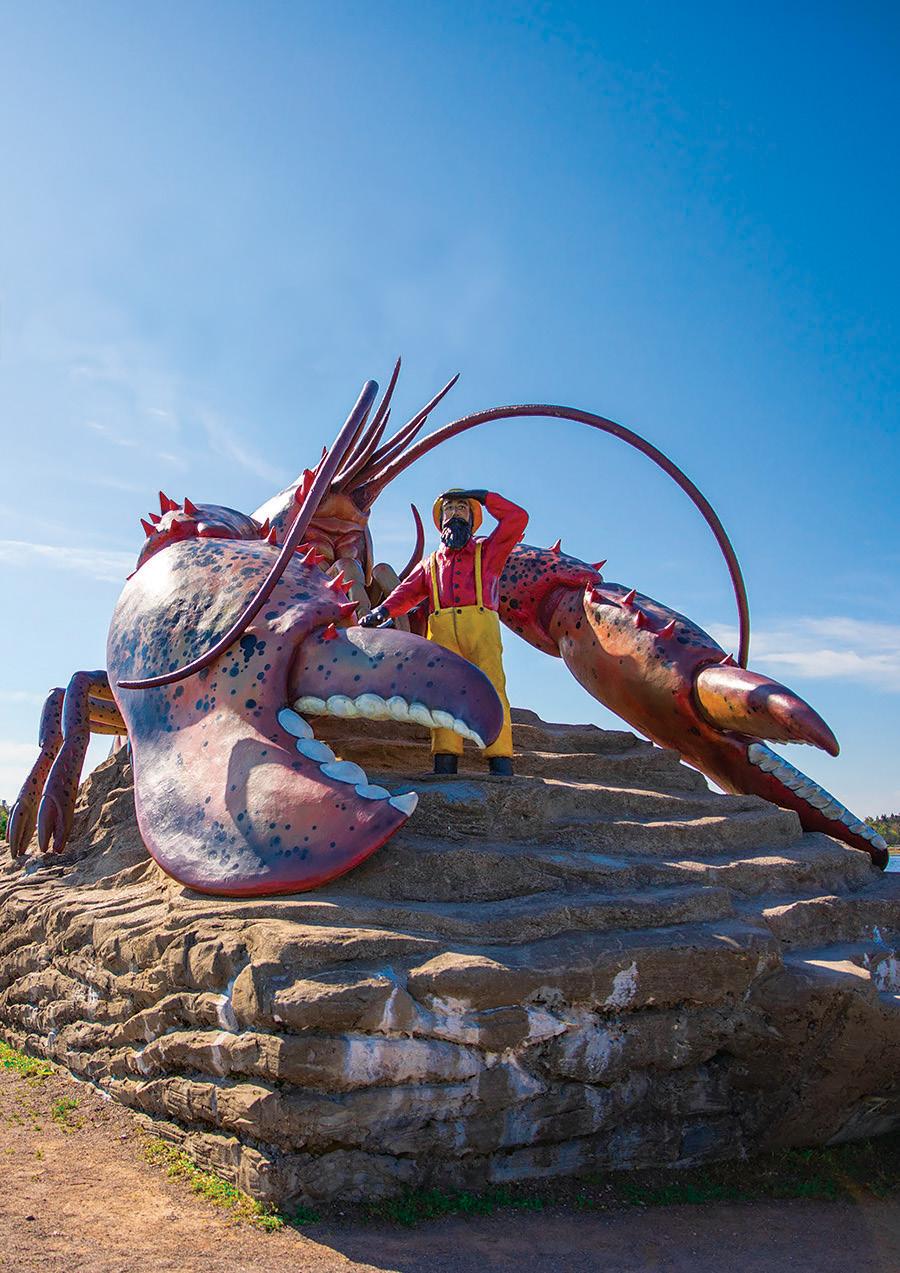

I’m sure it would run off into the woods if I shouted or rode closer, but, remembering the fox and the eagle, I consider who lives here and who is just visiting. Hopping back on the saddle, I turn my bike and head into the forest, leaving the bear to enjoy its lunch. As I ride, I count myself lucky to have scored a third wildlife sighting in a single day, a rare privilege that confirms Kouchibouguac as a wild and satisfying ride.

tourismedmundston.com 1-866-737-6766 16 NEW BRUNSWICK
Port City energy
Here’s to Saint John’s new swagger, and a nifty waterfront container village
BY SHELLEY CAMERON-McCARRON
It’s almost dusk when I pull into the port city of Saint John, N.B. The summer sun is still warming my bare shoulders as I dash from Hilton Saint John to the animated harbourfront to visit Area 506 Waterfront Container Village, a “sea can” development that opened in June 2022, dramatically changing the waterfront of Canada’s oldest incorporated city.
It’s Saturday night, August long weekend, and I’ve come for adventure. I’m keen to see the transformation of a parking lot into a funky, season-long destination of shipping containers home to retail shops, performance space, street art, and a three-level rooftop patio which provides enviable views of the Bay of Fundy.
Food trucks line Water Street, people mill, and the air feels thick with promise. Music

pulses down the horizon as bands command part of the waterfront for Area 506, New Brunswick Day’s marquee music and arts festival. I’m already crushing on the vibe, the city, the soul, as I step into one section of the container village, Graffiti Alley. Here, I catch my first glimpse of its soaring sea cans splashed with playful pops of colour. These are the stylings of international muralists, including I AM EELCO from the Netherlands and Colombia’s LeDania.
Against this joyous backdrop, vendors are set up in the containers, selling ice cream, donuts, coffee, and other goodies in an area fast becoming the most photographed place in New Brunswick.
“It creates this cool vibe,” says Ray Gracewood, Area 506 president and committee chair and a key figure in the
container village. A partnership between a music festival and Port Saint John created this permanent space to celebrate all things stylish about the city.

The partnership was born from port authority and Area 506 festival management
 Area 506 music and crafters festival at the container village.
Area 506 music and crafters festival at the container village.
NEW BRUNSWICK TOURISM
YELLEHS C A M E R O NM C CARRON YELLEHS REMAC O NM CCARRON 17 NEW BRUNSWICK
each seeing massive potential in the waterfront. In November 2022, Area 506 Waterfront Village received national accolades for its efforts, winning the “innovator of the year” prize at the Tourism Industry Association’s 2022 Canadian Tourism Awards.

First greeting
The container village, adjacent the Marco Polo Cruise Terminal and Diamond Jubilee Terminal, is the first thing passengers see as they disembark from the 80 or so cruise ships arriving here annually.

It consists of three main sections: Graffiti Alley, Retail Row — where twinkling white string lights sparkle between the ocean-hued blue and green containers housing about 40 businesses, many emphasizing local products — and an event space with stage, waterfront container bar, and rooftop viewing deck.


Adding to the ambiance are outdoor games, another popular selfie spot under the commissioned UFO mural by Canadian artist Mique Michelle, frequent pop-up vendors, and a season-long entertainment lineup that includes concerts, movies, and salsa nights.
“It’s like stepping into opportunity,” says Gracewood, “embracing what is special about a port city.”
Happening spot
Response has been through the roof.
“It’s been so good,” says Gracewood. “The energy around it. The repeat visitation. It’s been incredible. We couldn’t have asked for better. It’s a place where people want to be.”
Vibrancy and diversity are part of the draw. “It’s been a long time since Saint John had some swagger,” says Gracewood.

There’s a new confidence in the city. “What I like is that it’s for all to enjoy,” says Natalie Allaby, Port Saint John cruise development manager, who says the idea for a container village was floated a few years back. But with the high cost, they weren’t ready to jump. Around the same
time, Gracewood, who founded the Area 506 musical festival in 2016, and his group were wondering if the festival’s weekend shipping container vendor village could become something bigger.
Soon the two groups were talking, eventually getting federal and provincial money. “It really makes me proud to be a Saint Johner,” says Allaby. “When I’m there, I think this is cool, there’s interesting
At left, the Cask and Kettle Irish Gastropub is one of 80 restaurants and bars within ten minute walk from the waterfront. Bottom: Lynn Rice of Little Urban Apothecary represents 17 local artists selling handmade delights. SHELLEYCAMERONMCCAR R O N
SHELLEY CAMERON-MCCARRON
SHELLEY
18 NEW BRUNSWICK
SHELLEY
CAMERON-MCCARRON
CAMERON-MCCARRON
vendors, an entertainment zone, shopping, food. I really feel it’s Saint John’s time to shine.”

Allaby says Saint John is a cruise success story. The port can accommodate up to three ships, and on triple-ship days — there were six last year — an influx of 10,000 people arrive. In 2019, before COVID upended the cruising, the industry tallied $68 million in local economic impacts.

The Fundy Quay redevelopment project along the harbourfront is also getting people excited. As is a renaissance in Saint John’s Uptown: historic brick buildings are becoming hip bars, restaurants, galleries, and shops all while maintaining architectural character. Visitors can find 80 bars and restaurants within a span of 10 blocks, an easy 10-minute walk from the cruise ship terminal.


Village people
The container village was a good decision, says Ali Engin, who came to Canada from Turkey 10 years ago, and in August of 2022 began operating Mediterranean Living in Retail Row.



“I am so happy here, being in the container village, and also in Saint John,” he says. “Uptown is unique, it has a nice vibe. Business has been really good.” He sells Turkish tapestries, cushion covers, ceramic bowls, jewellery, aprons and confections. He also offers tarot readings, learned from his grandmother in Istanbul.
It’s a similar sentiment over at Together Designs where artisans Lynn Rice and Shelley Bartlett of Little Urban Apothecary are staffing the container business, representing 17 local artists (the youngest is 11 years old) selling handmade New Brunswick delights, including earrings, skincare products, macrame designs, scarves, and other unique items.
“It’s been great. There’s a lot of tourists as well as locals,” says Lynn Rice. “We have had lots of return people and plenty of positive feedback.”


As for Gracewood? He’s looking forward to seeing what’s next: “When there is potential, there’s unlimited possibility. It’s fun.”




@K ings L anding n B K ings L anding . n B . ca There’s No Time Like the Present to Discover the Past! Step back into 19th century New Brunswick at this open-air museum just 20 minutes from Fredericton Marvel at the stunning SEASCAPES the Roosevelts so loved ! RooseveltCampobello.org • View whales, porpoise, seals • 34-room guided cottage tour • Eleanor’s Tea • Late May - late Oct • FREE Admission Your Home on Campobello Island info@pollockcove.com • 506-752-2300 NEW BRUNSW I CK T O U R I S M 19 NEW BRUNSWICK
Fun with a twist
Night kayaking, llama walking and more in New Brunswick
 BY SHELLEY CAMERON-MCCARRON
BY SHELLEY CAMERON-MCCARRON
20 NEW BRUNSWICK
With the stars and moon lighting the way, you navigate narrow tunnels and pass spectacular sea stacks, paddling the highest tides in the world at night — yes, night! It’s an unparalleled way to see a familiar landscape in a new light, says Shaun Gibbs.
Gibbs, co-owner with wife Ashley of Baymount Outdoor Adventures Inc., introduced the After Dark Tour last year in the waters just off Hopewell Cape, an iconic destination on the Bay of Fundy, home to the world’s largest tidal range. The mighty Bay’s unique funnel shape allows massive tides every six hours, at once revealing life on the ocean floor, then covering it as waters swell up to 16 metres.
“Awe-inspiring is a word I use a lot,” says Gibbs. “You lose that sense of knowing exactly what’s in front of you. It’s a more intense experience, you’re alert for what’s happening. The atmosphere is quite different than daytime. When you take away that sense of being able to see what’s coming, the focus becomes very narrow. I’ve been paddling there for almost 20 years, and I love to go at night. It’s a totally different experience at the rocks. All you hear is the quiet around you, a little bit of waves.”
There’s also positive energy, he says. People are chatty. Some are apprehensive. And Mother Nature can deliver beauty
skies, bright starry nights, and luminous moonlight. People often return saying the experience was amazing, he adds. “We’re trying to bring local people back to experience it in a way they never would have thought of doing.”
After Dark tours require just the right conditions: calm waters with, at most, very light wind. Paddlers set off at dusk, around 9 or 10 p.m. at high tide, equipped with glow sticks and head lamps. If conditions turn, the tour can cancel on short notice.
“The area is so special,” says Gibbs, telling how people are drawn to Hopewell Rocks, about halfway between Moncton and Fundy National Park (it’s about a 40-minute drive to either) to walk the beach at low tide, marvelling at its treasures: caves, windand water-carved arches, and the almost alien-like free-standing rock forms that the constantly swirling tide shapes.

It’s surreal to return a few hours later at high tide and see the same landscape in a new way, with the water dramatically transforming the view. It’s arguably one of the best places to experience the Bay of Fundy’s majestic powers, with an up-close view of its two different faces.
More great adventures
Night kayaking isn’t the only traditional activity with a twist in the province. Read on,

as the folks at Tourism New Brunswick dish up more out-of-the-box fun.
• You may have attended ballet before, but what about a professional show by the sea? Ballet by the Ocean in Grand-Digue is a performance next to the Northumberland Strait. It takes place on a 17-hectare site, a protected wetland hosting many bird species. Guests also

CREATIVE IMAGERY, KEVIN SNAIR
NEW
SHELLEY CAMERON-MCCARRON
BRUNSWICK TOURISM/WES PERRY PHOTOGRAPHY
At low tide (left), visitors walk on the ocean floor at Hopewell Rocks. As tides rise (right) they can see the landscape from a different perspective, kayaking where they walked just hours before.
21 NEW BRUNSWICK
SHELLEY CAMERON-MCCARRON
enjoy a five-course meal and wine pairing, a locally inspired and sourced meal from New Brunswick chefs. atlanticballet.ca/ en/event/ballet-by-the-ocean

• What about walking a llama on the beach? Llamazing Adventures in Haute-Aboujagane offers various experiences, including taking llamas for a sandy stroll. llamazingadventures.ca

• You’ve overnighted in many accommodations, but what about staying aboard an authentic, retrofitted lobster boat turned into an Airbnb with a hot tub? Jacob Boy accommodates six. westrivercamping. ca/jacob-boy-boat-rental

• You’ve enjoyed your share of coffee and frequented many cafés. Here’s a deeper experience. Visit Epoch Chemistry in Moncton for a guided coffee tasting with their in-house java expert. In a one-hour session, guests sip as they learn about
 SUBMITTED
This former lobster boat is now an Airbnb that sleeps six.
Walk with llamas on the beach.
SUBMITTED
This former lobster boat is now an Airbnb that sleeps six.
Walk with llamas on the beach.
22 NEW BRUNSWICK
SUBMITTED
the chemical composition of coffee, compare flavours of different beans, and try perfecting the espresso press technique. epoch.coffee
• For a unique birdwatching experience, stroll among the puffins on Machias Seal Island with Sea Watch Tours. When you land on the island, you hold a steel pole over your head as you walk. Some birds are protective of their property and will fly at you and hit you in the head to keep you away, but holding a steel pole deters them. On the tour, visitors enter a cabin where they can photograph the nearby puffins. seawatchtours.ca

• There’s traditional fishing, but what about shark fishing? St. Andrews Sport Fishing Co., takes people shark fishing, with a marine biologist onboard. The catch is microchipped and released back into the ocean, enabling scientists to conduct studies. standrewssportfishing.com

Located in the stunningly charming coastal town of St. Andrews bythe-Sea, this New Brunswick icon is one of Canada’s most charming resorts. With incredible dining, a wonderful spa, an award-winning golf course, and situated in one of North America’s most historic towns, the Algonquin offers unparalleled elegance.




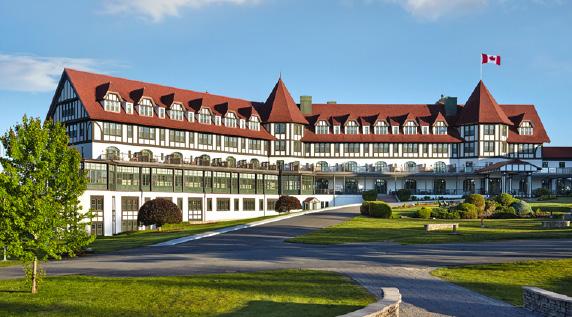
184 Adolphus Street
St. Andrews NB E5B 1T7
Phone: (506) 529-8823
Fax: (506) 529-7162
reservations@algonquinresort.com
Enjoy. Experience. Escape.
Contact Algonquin
NEW BRUNSWICK TOURISM/
Puffins on Machias-Seal Island.
SUBMITTED 23 NEW BRUNSWICK
St. Andrew’s Sport Fishing Co.
Of U-boats and fish cakes
What to do (and eat) on Bell Island, Newfoundland and Labrador

 BY CAROL PATTERSON
BY CAROL PATTERSON
The ferry between Portugal Cove and Bell Island isn’t a time machine... but it will transport you to a fascinating and important era in Newfoundland and Labrador’s history, while also launching you into some modern entertainments.
The island’s steep, imposing cliffs hide vast iron ore deposits that once fed steel mills in Nova Scotia. German U-boats attacked the quiet cove during the Second World War. People have fished from and farmed on Bell Island for centuries, but it was the high-quality iron ore buried
underneath that launched an economic boom similar to those seen in recent decades in Alberta’s Fort McMurray.
Today the island’s population is around 4,000, many of whom commute to work in St. John’s. But in the 1960s, it was about 12,000. You sense the boom-town atmosphere strolling through Wabana, the island’s main settlement, where many murals tell of times past. Atlantic Canadians might be surprised to find an early photo of Lou Lawton, the founder of the well-known Lawtons Drugs, and his first store.
NEWFOUNDLAND AND
LABRADOR TOURISM/JULIAN CALVERLEY
Top: Hiking the island with no crowds and great views of Conception Bay. Above: The coastline of Bell Island.
24 NEWFOUNDLAND AND LABRADOR
CAROL PATTERSON
For a sensory immersion in Bell Island’s mining past, go to the Bell Island Community Museum and tour the Number Two mine. Local residents, some with mining history, will answer your questions. Guides will ask if you’re uncomfortable with enclosed spaces or steep climbs (the slope is approximately 10 degrees) before taking you underground to a dank tunnel where miners once laboured. The interpretative talk set amidst old shovels, railway tracks and dripping walls make an impression. Dozens of men died underground; those who survived put in long, difficult hours of demanding physical labour.
You’ll see headstones of these families at cemeteries alongside the quiet island roads. The earth has reclaimed many of the markers, but pausing amongst the final resting places, you sense the importance of faith to people wrestling with harsh conditions. Unlike in modern cities where people of differing faiths may be buried
next to each other, here you will find smaller rows of headstones arranged by church.
As a visitor, you can toil as much or as little as you like. The 21-kilometre Gregory Normore Coastal Walking Trail is more precisely a series of trails. You can do them all or you can tackle shorter sections. Drive to the west end of the island to amble among the lupines and long grasses while you gaze across the water to Kellys Island or Little Bell Island.
Stop at Lance Cove on the way back to see the Seaman’s Memorial commemorating people lost to Second World War U-boat attacks. Prepare for an invasion of a different kind, as local ducks approach visitors enthusiastically, looking for treats.
On the east end of the island, park near the Bell Island Lighthouse for some photographs or enjoy a snack at the Bell Island Keeper’s Café. The lighthouse is closed but the views are worth the drive. For more great scenery, head to the beach
Newfoundland Fish Cakes
Recipe by Laura Taylor
Ingredients
1 ½ lbs (750 gm) salt dried cod
¼ cup (75 mL) butter
1 small chopped onion
6 cups (1.5 L) mashed potato
1 beaten egg
2 tbsp (30 mL) dried savoury (optional)
½ tsp (2.5 mL) black pepper
Instructions
1. Soak the salt cod in cold water overnight.
2. Simmer the salt cod in boiling water for about 15 minutes. Drain the water and allow the fish to cool to almost room temperature.
3. When the fish is cool, flake it apart with a fork into small pieces.
4. In a sauté pan, melt the butter over medium heat.
5. Add the onions and cook until they are softened.
6. Add the flaked fish along with the mashed potato, egg, pepper, and savoury.
7. Mix together until well combined, then form into small cakes and roll in flour.
8. Fry the fish cakes in canola oil over medium heat until golden brown on both sides.
9. Serve with scrunchions (fried bits of salt pork) or bacon bits.
east of the ferry terminal. There you can see the rocky cliffs from ocean level and if you’re there in the summer you might be lucky enough to catch Bell-fest on the Beach, a musical celebration of the island including a “Walk the Plank” into the cold waters.
When it’s time to head to the ferry, stop at Dicks’ Fish and Chips. Launched in 1950, the restaurant is a local landmark. Perch at one of the tables near the dancefloor and disco ball or underneath faded, black-andwhite historical photos and watch the coming and goings. Fish and chips orders are popular but many living here during Bell Island’s heyday would have enjoyed cod cakes similar to the recipe on this page.

For details on current events in Bell Island, check tourismbellisland.com
 CAROL PATTERSON
CAROL PATTERSON
The ferry shuttles visitors to Bell Island several times a day.
CAROL PATTERSON
CAROL PATTERSON
The ferry shuttles visitors to Bell Island several times a day.
25 NEWFOUNDLAND AND LABRADOR
Dicks’ Fish & Chips has been the go-to place on the island for decades.
The town that labour built
A visit to Port Union
 BY DARCY RHYNO
BY DARCY RHYNO
We’ll be brothers all and free men, and we’ll rightify each wrong; We are coming, Mr. Coaker, and we’re forty thousand strong.
Acentury ago, the defiant and united voices of the the Fishermen’s Protective Union (FPU) sang that song. The Newfoundland workers’ institution, which Sir William Coaker founded and led, wasn’t quite “forty thousand strong” but it was formidable. When Coaker called a meeting to found the FPU on November 2, 1908, just 19 men attended. A year later, the union had grown to 50 local councils in communities around Newfoundland. Within six years, Coaker signed up 21,060 members, over half the fishermen on the island.
The FPU represented fishermen but did far more. It created the Fishermen’s Union Trading Company to compete with merchants who controlled the industry. In 1910, it founded a newspaper, The Fishermen’s Advocate, which published for the next 70 years. Then it built a town.
Inspired by the spirit of its founder and energized by its thousands of members, the FPU built piers, a fish processing plant,

a seal plant, construction shops, workers’ housing, a power generating station, a warehouse, a train station, a fleet, and an international trading company. It even founded a soft drink company.
The union built what we’d call today a “vertically integrated corporation”, one owned and operated by workers. To improve the lives of workers and their families — about 600 in all — and to live as self-sufficiently as possible, the union added a school, movie theatre, church,
and hotel. The workers built and ran a busy international port town.
It all started when, at the age of 13, a feisty William Coaker took a part-time job at a local company. He soon saw the workers’ pay was abusively low. Gathering his co-workers, he called for a strike. Two days after the teenager-led uprising began, he and his co-workers won a raise.
The following year, Coaker left school to work full-time, taking on a diversity of jobs including postmaster, telegraph operator,
 Above: Port Union, Newfoundland, by evening. Inset: Sir William Coaker, a driving force for the community’s beginnings.
Above: Port Union, Newfoundland, by evening. Inset: Sir William Coaker, a driving force for the community’s beginnings.
JODI DELONG 26 NEWFOUNDLAND AND LABRADOR
The former FPU union building, where The Fisherman’s Advocate was also produced. Today it houses a museum and interpretive centre.
and farmer. Within two years of taking a job with another local company, he moved up to branch store manager, eventually buying the store outright.
Perhaps this range of work experience gave Coaker the confidence to build an entire town. In 1896, he learned another lesson, this one on the pitfalls of capitalism, when the 1896 economic crash known as the Panic bankrupted him. By 1908, when he called that first union meeting, Coaker was creating a different kind of economy.
Construction began in earnest on the union-built town in 1916. Within 10 years, Port Union was a major economic force, manifesting Coaker’s vision.
Port Union sits on the eastern edge of the Bonavista Peninsula, 92 kilometres northeast of Clarenville. Today, walking around the town recalls a heady period when workers were in charge of their own fortunes and futures. The core of the town is now designated the Port Union Historic District National Historic Site of Canada.
The best way to absorb the story is to explore the streets and read the interpretive panels. Clusters of union-built, wood-frame homes known as the Coaker houses — mostly duplexes, each painted a signature red — line a street and dot the rocky hillside.

On the waterfront stands the original imposing factory building, now part of
a museum. All of these buildings are examples of vernacular architecture or folk architecture: buildings designed by people who were/are not formally trained architects. Nearby is a green space, the Shipbuilders’ Park, and just out of town, the Catalina River hydroelectric station. Drop into the Port Union Historical Museum. Take a tour of the restored factory with woodworking machinery, plus much of the newspaper printing equipment. Old Issues of The Fishermen’s Advocate are also available to poke through.
Everything Coaker put his hand to seems unique and unparalleled, including, against all expectations, Port Union’s Anglican Church of Holy Martyrs. The name doesn’t refer to religious figures. Rather, Coaker built the church as a monument to honour the men known as the Coaker Recruits. During the First World War, he put out a call for 50 men to fight in Europe. Of the 103 who signed up, 68 passed the medical and headed overseas. The 10 stained glass windows in the church memorialize soldiers killed in the war.
Sir William Coaker became a Knight Commander of the Order of the British Empire in 1923. He died relatively young after a series of strokes in 1938 at the age of 67. As Canadian heroes go, Coaker gets nowhere near the credit he deserves. Beyond the union-built town, his FPU lasted until 1977 and The Fisherman’s Advocate newspaper until 1980.
His influence reaches much further when we consider his positive influence on workers’ rights and even in the shaping of Canada as we know it today. Coaker mentored Joey Smallwood, the politician best known for bringing Newfoundland and Labrador into Canadian Confedera-
tion in 1949. A visit to Coaker’s personal Port Union home, The Bungalow, and to the hilltop cemetery where a fenced, marble monument is topped by a bronze bust help bring the visitor closer to this important figure.
Union House Arts community art space.

Where stay and eat

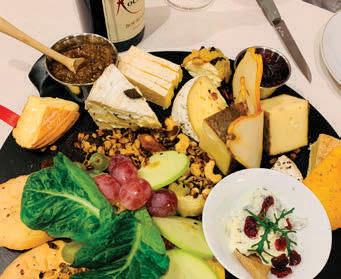

Captain Blackmore’s Heritage Manor, rooms with breakfast included. captainblackmores.com
Lodge’s Landing for several local home rentals.
coastalretreatsnl.com
Seaport Inn, Hotel and Restaurant. seaportinn.net
The Harbourside Inn and Café. facebook com/theharboursideinn


Things to see and do
Union House Arts for contemporary art. unionhousearts.ca
Wild Cove Pottery for original ceramics by Michael Flaherty. wildcovepottery.ca
Lodge Adventure Tours for kayaking, paddleboards, and boat tours. lodgeadventuretours.com

France, CLOSER
YOU
SCAN HERE FOR OUR LATEST ISITOR GUIDE SCANNEZ ICI
THAN
THINK...
POUR NOTRE DERNIER
UIDE TOURISTIQUE
RAY MACKEY
27 NEWFOUNDLAND AND LABRADOR
JODI DELONG WIKIPEDIA/WHO’S WHO IN AND FROM NEWFOUNDLAND 1930, 2ND ED. (ST. JOHN’S, NEWFOUNDLAND: R. HIBBS, 1930) 65.
SUBMITTED
Older than the pyramids
Experience Indigenous heritage in Newfoundland and Labrador
STORY AND PHOTOGRAPHY BY DARCY RHYNO
The wind is whipping across the Gulf of St. Lawrence and onto this barren Newfoundland shoreline. Bracing myself against it while standing at the foot of the Point Riche Lighthouse, I imagine the glass atop the tower, rattling beneath its red metal roof as it has since 1892.
I think of the lighthouse just outside Port-au-Choix on the western shores of the Great Northern Peninsula as a historic structure, deserving of its heritage status. But the wind has been blowing across these wild meadows, running down to the rocky shore where caribou browse, since ancient times.
On this site, human activity predates Stonehenge and the Egyptian pyramids.
The history of Indigenous peoples in Newfoundland and Labrador runs millennia deep and across at least half a dozen distinct cultures. Tracing that long thread through the past is no straightforward task. The tapestry of Indigenous history is so worn by time, some pieces are threadbare.

The story begins more than 7,000 years ago with what archeologists call the Maritime Archaic Indians. Inside the interpretation centre near the lighthouse, I discover artifacts and detailed exhibitions that tell the story of these earliest inhabitants from 7500 to 3500 BP (years before present). Barbed harpoon heads, expertly carved from bone, prove these people were hunters of seal and other marine animals.
Archeologists discovered evidence of the Maritime Archaic Indians from 117 human remains in ancient burial sites in this area, including in the middle of the town of Port-au-Choix and across the gulf in southern Labrador. One site dating from 7500 BP contained the remains of a 12-year-old. That person aside, the evidence suggests they were a healthy people who lived an average of 43 years and led an active, peaceful lifestyle: hunting seals, fishing, and gathering berries, birds’ eggs, and shellfish.

Other Indigenous inhabitants followed. The Groswater and Dorset Paleoeskimos chose this prime hunting territory between 2800 and 1100 BP, arriving just a few hundred years after Maritime Archaic Indians disappeared. Some 50 house depressions in the ground and thousands of artifacts suggest the Dorsets were a more permanent population.
Because the Groswater and Dorsets migrated south from the Arctic, visitors can make connections to their stories in the Torngat Mountains National Park on the tip of northern Labrador. This remote,
Model of an ancient Indigenous house at the interpretation centre, Port au Choix, N.L.
28 NEWFOUNDLAND AND LABRADOR
Maritime Archaic cemetery monument in the town of Port au Choix.
wild region is accessible only with a permit and on guided excursions. There are no roads. The rewards of visiting this grand and beautiful landscape of sawtooth mountains and deep fjords are many, particularly when experienced with Inuit elders and young guides from Nunatsiavut and Nunavik, starting at a shared base camp. Whales, polar bears, and caribou are commonly spotted on hikes and other outings, one of which leads to an Inuit burial site.
South of the park in Happy Valley-Goose Bay, learn more about the Indigenous people of the region at the Labrador Interpretation Centre. Through artifacts, recordings, and exhibitions, learn about the history and life of Innu, Inuit, and NunatuKavut Inuit people. In Nain, drop into the new Illusuak Cultural Centre to see exhibits and shop for arts and crafts. Many of Labrador’s Indigenous sites and experiences are only accessible via the passenger ferry that plies the coast. Book Indigenous accommodations, tour guides, and interpreters to make the most of a visit.
Vikings settled in northern Newfoundland about 500 years before European colonization. Both discovered the Beothuk people already occupied the land.

Tragically, these European settlers would unleash disease and racist government
policies, leading to the extinction of the Beothuk. Some 300 years ago, Beothuk lived in a village at what is now Boyd’s Cove near Twillingate. At the end of a 1.5-kilometre walking trail, the Beothuk Interpretation Centre Provincial Historic Site tells the story of this village. The Beothuk chose the site because it was protected from the elements and provided resources such as fresh water.

Along the trail, a sculpture of a Beothuk woman evokes the memory of the last known member of her people. Shawnadithit died in 1829 in of tuberculosis and was buried in St. John’s. Observation decks overlook house pits that mark the location of the village. In the Spirit Garden, interpreters sometimes host commemorative events. Inside the interpretation centre, artefacts and exhibits tell the story of a vanished people.
Local accommodations with Indigenous connections
Pirates Haven
Four-star riverside chalets and a seaside RV park.
Location: Robinsons, about 30 kilometres south of Stephenville on Newfoundland’s west coast. Guided ATV rides, fly fishing, fly tying, beach cookouts. pirateshavenadventures.com
Appalachian Chalets
Colourful, new chalets and an RV park.
Location: Corner Brook.
ATV riding, snowmobiling and hiking on the Appalachian Trail. appalachianchaletsrv.ca
Royal Inn and Suites
40 rooms right in town.
Location: Happy Valley-Goose Bay, Labrador
Featuring made-in-Labrador soaps, fitness room, business centre, and complimentary shuttle to airport and ferry services. royalinnandsuites.ca
Basinview Bed & Breakfast four rooms with water views.
Location: Red Bay, Labrador WiFi, laundry service, store and four RV sites with hookups, showers. www.labradorcoastaldrive.com/ home/199
Alexis Hotel
Location: Port Hope Simpson, Labrador WiFi, conference room, restaurant, fishing, boat tours, skiing, dog sledding and customized itineraries. www.alexishotel.ca
Continuing east to St. John’s, the dramatic provincial museum known as The Rooms houses a permanent exhibition that tells a recent story, also tainted with tragedy. In Their Own Words: Life for Labrador Students at Residential School reflects the spirit of reconciliation between colonizers and Indigenous peoples, a process the entire country is grappling with. Through artifacts, art, and archival material, The Rooms sheds light on this corner of Canada as it comes to terms with the oppression and abuse of Indigenous peoples.
Today, descendents of two Mi’kmaq bands, Miawpukek First Nation and Qalipu First Nation, live on the island. Every July, the Miawpukek host a mawiomi, or gathering, at the mouth of the Conne River on the south coast. It’s a colourful and joyous occasion with lots of music, dancing, and ceremonies. At the Mi’kmaq Discovery Centre, check out the work of local artists and watch for workshops in which you can try your hand at Indigenous crafts such as jewellery making.
Some of Miawpukek’s artisans exhibit their work and tell the story of their community at the Discovery Centre in Gros Morne National Park on the west coast. Artisans like Pam Hall and Jerry Evans celebrate their people’s oral history that tells of the continuous presence of the Mi’kmaq on Newfoundland.
From ancient times to today, the province’s Indigenous inhabitants have called this land home far longer than any lighthouse has marked time on the windy shores. It’s worth getting to know Newfoundland and Labrador’s history of human occupation predating the pyramids.
Port au Choix National Historic Site.
29 NEWFOUNDLAND AND LABRADOR
Artifacts at the interpretation centre.
War, wireless, and whales
Signal Hill is a must-visit
STORY AND PHOTOGRAPHY
BY DARCY RHYNO
I’m standing at the edge of the continent, looking out past the cliff edge over the endless Atlantic to the horizon. There’s an eruption in the water below. A small whale breaks the surface, blowing a cloud of mist. A second whale breaks the surface, followed by a third. The hook-shaped dorsal fins far back on their bodies and the white bands on their flippers tells me these creatures — about eight metres long — are minke whales.
Whale sightings from land are a bonus when visiting Signal Hill, the rocky promontory guarding the narrow entrance to St. John’s Harbour in Newfoundland. This is a national historic site, known mostly for its importance in human history, but also the gateway to outdoor adventure and unpredictable wildlife encounters.
I spot the whales on a walk along the north end of the 1.7-kilometre North Head Trail near Cuckolds Cove, on my way from the Quidi Vidi Brewery. The trail reaches Signal Hill, then curves to continue south along the harbour entrance, leading back to downtown St. John’s.
At the pinnacle of this national historic site sits the three-storey stone Cabot Tower, a famous Canadian landmark visible from all over the city. Big crowds attended the laying of the tower’s cornerstone on June 14, 1897 to mark Queen Victoria’s Diamond Jubilee and the 400th anniversary of John Cabot’s arrival, the first European since the 11th-century Vikings to explore these shores.
A short walk down the hill toward the city, the Signal Hill Interpretation Centre offers educational exhibits, a shop, and a Newfoundland Chocolate Company café. From here, Parks Canada offers experiences like guided walking tours and musket demonstrations.
On the way back up the hill, I stop at the Queen’s Battery Barracks, a simple stone building overlooking the harbour. This is where the musket demonstrations happen.
“The year is 1862,” calls a guide in scarlet tunic and tall, brimmed shako-style military cap. I learn about the daily life of a soldier as he slowly loads, then fires his musket. As I depart, he reminds me that I can sign up for the firing of the Noon Day Gun from the top of the hill. I file that experience away on my St. John’s bucket list.
At the top of Signal Hill, I explore Cabot Tower, best known as the site where

30 NEWFOUNDLAND AND LABRADOR
Guglielmo Marconi received the world’s first transatlantic wireless signal on Dec. 12, 1901. Marconi’s first message was simply the letter “S,” sent from Cornwall, U.K., some 3,500 kilometres away.
Then in 1909, the first transatlantic telegraph cable made landfall here, creating a physical communications link between North America and Europe. Another cable linked St. John’s to New York. Within 20 years, seven more cables connected Europe and North America via Signal Hill.

Stops On a Round Trip Walking Tour of Signal Hill
Quidi Vidi Brewery
Stop for a tour and a flight at St. John’s best known craft brewery.
Mallard Cottage
A few paces from Quidi Vidi, this is one of the city’s most respected restaurants with seasonal cuisine built from local ingredients.
Johnson Geo Centre
The whole family will enjoy a stop at this science centre for its fun exhibits on geology, astronomy, oceanography, and climate.

St. John’s Harbour Lookout
Across the street from the Geo Centre, check out this lookout for fantastic views of St. John’s and its harbour.

Terry Fox Memorial
Just before re-entering the city, stop at this site to pay homage at the statue of Terry Fox, the Canadian hero who launched his Marathon of Hope, a cross-country run, in St. John’s to raise money for cancer research.
In another communications first, the Canadian Marconi Company transmitted a human voice across the Atlantic Ocean from Cabot Tower on July 23, 1920. A wireless station operated onsite from 1933 to 1949.
Those were just the latest chapters in the history of communications from Signal Hill. Other kinds of signalling went on for centuries. Because the views of the open Atlantic and the city itself are unobstructed, this location was perfect for low-tech military and commercial communications. From 1704 to 1870, the British used flags, cannons, and muskets to communicate with the navy, announce the arrival of merchant ships and regulate daily military life. For many years, a blockhouse sat atop the hill for the sole purpose of signalling. Signal Hill’s communications era finally ended in 1958 with the dismantling of the last signally mast.
From Cabot Tower, I head back to town via the North Head Trail, following it along the steep hillside. Since the 1500s, people have walked this trail, today more for the scenery and the exercise. I descend from the top of the hill into the Ross’s Valley. The depression in the rocky headland might not look like a valley to the average hiker, but meets the geological definition: a hanging valley gouged from this ancient stone by glaciers. Over the centuries, locals planted gardens here and in the 1890s authorities built a small quarantine hospital that locals called Prowse’s Folly.
Just beyond is North Head, the trail’s eponymous rocky headland. From here, I can see Cape Spear, the most easterly point in North America. Perched on a rocky point over the ocean, it certainly feels like the end of the Earth.
Continuing on, I walk beside the Narrows until the trail turns into Outer Battery Road. With its colourful houses and shanties clinging to the rocks, the Battery is one of the most photographed places in Newfoundland. This is the narrowest section of an already narrow harbour entrance. Ships that enter this busy harbour pass here.
So do seabirds like gulls and ducks. It’s a place shared equally by people and wildlife. Watching both come and go seems a suitable ending for a day at Signal Hill where whales are as much an attraction as tales of wireless and wars.
Deluxe oceanview suites, overlooking Atlantic Canada’s largest marina
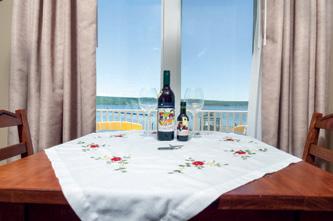

Islands’ Villa was established in 2010. It has grown into a “must stay” location both locally and beyond. We're nestled in a quiet residential setting in Lewisporte, NL, overlooking Lewisporte's beautiful harbour and world-class marina. Islands' Villa is a state-of-the-are facility that boasts “True Newfoundland Hospitality”
for all tourists looking for that 'something special'.
www.IslandsVilla.ca F
Colourful homes and shanties in The Battery.
31 NEWFOUNDLAND AND LABRADOR
Fort Amherst, at the mouth of St. John’s Harbour.
History in embroidered form
The French Shore Tapestry of Conche, N.L. rivals the famed Bayeaux Tapestry
BY DALE DUNLOP
On a recent trip to Newfoundland and Labrador, my wife and I ventured to the end of the Viking Trail to visit the UNESCO World Heritage Site of L’Anse aux Meadows. There are few roads in this remote area. Most visitors retrace their route back down Highway 430 to Deer Lake where the trail begins. But you can also explore the isolated French Shore on the northeastern side of the Great Northern Peninsula. There are many reasons to take this alternate route, not the least of which is
to view a work that rivals the famed Bayeaux Tapestry in size and colour.
Found in the tiny community of Conche, the French Shore Tapestry was the brainchild of artist Jean Claude Roy and his wife Christina. She’s a native Newfoundlander and he’s from France, so they split their time between the two places. Roy was familiar with his country’s famous Bayeaux Tapestry that depicts William the Conqueror’s Norman conquest of England. He came up with the idea of creating something similar to depict the history of the French Shore.
Embroidery has always been an important pastime on the French Shore; Roy had no problem convincing locals to sign on to the project, perhaps not realizing the magnitude of the undertaking. With Roy designing the tapestry, his wife in charge of coordinating the numerous local embroiderers, and with more than 20,000 hours of stitching, they finished the tapestry in 2010. It’s now displayed in the former Grenfell Mission house, which is now the French Shore Interpretation Centre.
To get to Conche, leave the Viking Trail just past the St. Anthony airport and take Highway 432 as far as the turn off to the village of Roddickton, some 14 kilometres along. In Roddickton, the 24-kilometre dead end road to Conche begins. Until recently, roads didn’t connect the isolated coastal communities; the road to Conche has only been recently paved. Outside the village there’s a short path to an observation tower, which has majestic views of the peninsula below and the Grey Islands offshore.

Descending into Conche, you can’t miss the bright green interpretation centre, which houses many items of interest, including some of the famous hooked rugs of the Grenfell Medical Mission’s cottage craft industry.
But the star is the breathtaking 69-metre tapestry. I’ve visited the Bayeaux Tapestry in Normandy, but it’s not remotely like the experience of seeing the French Shore Tapestry in Conche. The Bayeaux Tapestry is so popular that you must get on a moving sidewalk to see it, which means no

32 NEWFOUNDLAND AND LABRADOR
Hooked rugs from cottage industry. FRENCH SHORE INTERPRETIVE CENTRE
lingering over details. And although well restored, the Bayeaux Tapestry is almost a thousand years old and shows its age. The French Shore Tapestry is bright and vibrant, and you have a good chance of having it all to yourself when you visit.

The French Shore Tapestry tells the story of this area of Newfoundland in a chronological sequence that starts in prehistory before human habitation and progresses through the First Nations, the Vikings, the European fishery and colonization, up to the present. It depicts many slices of local history, broadening our understanding of how the people of
Conche maintained their ties with France long after British rule began.


While the tapestry is ample reason to visit, there are many other interesting things to see along the way. Newfoundlanders on the Great Northern Peninsula have long used the land alongside roads to create community vegetable gardens. These are fenced in to keep the moose out and often have interesting scarecrows or other folk art. The ones along Route 432 are among the best I’ve seen.
Another unique attraction on Route 433 to Roddickton is the underground salmon pool where salmon, migrating upstream,
disappear into a natural tunnel on Beaver Brook. There is no other place where this is known to happen. Find it down a 2.3-kilometre gravel road followed by a short hike through a partial old-growth forest to the pool at the entrance to the tunnel. It’s a beautiful spot. We saw some large Atlantic salmon awaiting their turn to go upstream.
frenchshoretapestry.com
FRENCH SHORE INTERPRETIVE CENTRE
33 NEWFOUNDLAND AND LABRADOR
A section of the massive French Shore Tapestry.
PHOTOS: FRENCH SHORE INTERPRETIVE CENTRE
Annapolis Valley terroir

Getting
to
know Nova Scotia’s wine region
L’Acadie Blanc is an amazing grape because it’s a “chameleon,” according to Beatrice Stutz, CEO and manager at Domaine de Grand Pré, one of Nova Scotia’s oldest and most respected wineries.

“It’s hardy for the Nova Scotia climate,
and it’s got such good acidity that it’s a beautiful food wine,” she says. “It’s also used widely in Tidal Bay.”
Nova Scotia’s signature appellation wine, Tidal Bay, is made entirely with locally grown grapes. Wineries start with l’Acadie
Blanc to create the blend, which needs the approval of a panel of judges to earn the label. The idea is to capture Nova Scotia’s terroir in every bottle of Tidal Bay, a wine that’s meant to be “fresh, crisp, dryish, still, white with a bright, ‘signature Nova Scotia’ aromatic component.”
“It’s Nova Scotia’s grape,” says Stutz. We’re sitting around the dining room table of Hanspeter Stutz, Beatrice’s father and a pioneer winemaker. His heritage house in the Annapolis Valley was built in 1828 and is set amidst his vineyards. It’s now a six-suite inn that offers unique and intimate chef’s table dining experiences.
I’m privileged to be sitting at the family table this evening. As courses come and go, Stutz invites us to visit the kitchen where each is plated with artistry and care. After plating the next course, grated parsnip purée with l’Acadie vinegrette and pickled red onion, Chef Jason Lynch and sous chef Dana Wood serve it in the dining room.
Stutz completes her introduction of the paired wine, Grand Pré’s 2021 version of Tidal Bay. “This particular vintage won an
STORY AND PHOTOGRAPHY BY DARCY RHYNO
34 NOVA SCOTIA
Enjoying wine at Benjamin Bridge.
All-Canadian Wine Championship gold medal this year. I hope you enjoy it as much as I do.”
The l’Acadie Blanc pairs perfectly with the velvety purée. We savour the flavours and compliment the wine, which prompts Stutz to add another observation about Nova Scotia’s grape: “It’s also used in traditional winemaking methods.”
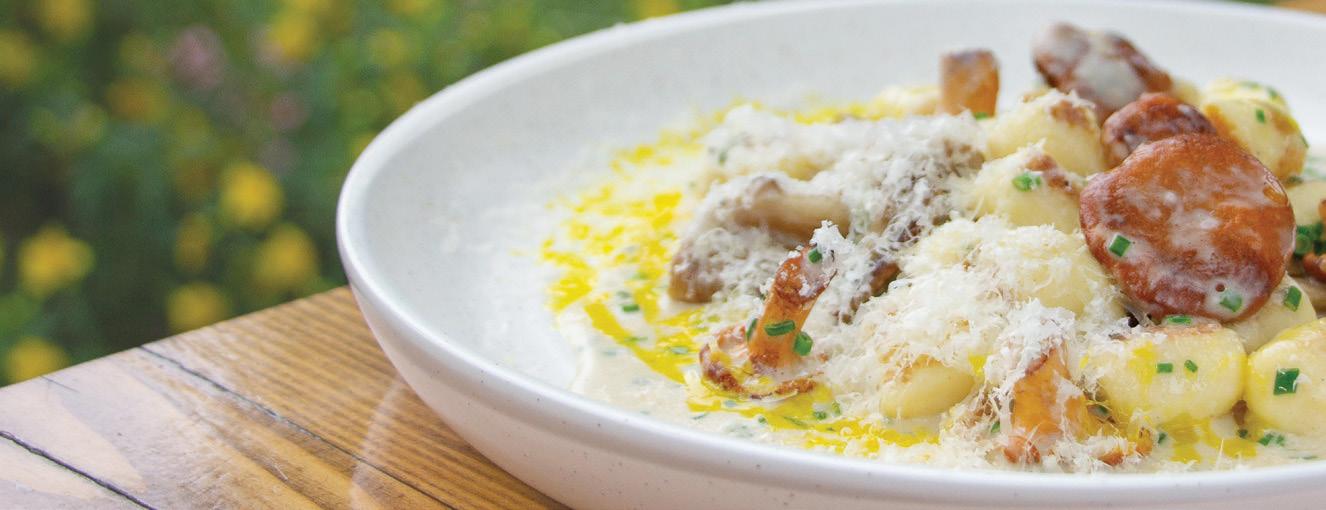
She’s talking about the relatively recent discovery that the grape and the Annapolis Valley’s climate and soil conditions are made for each other, creating just the right conditions for the creation of excellent méthode classique sparkling wines.

Earlier, the chef’s table dinner started with what Stutz calls “oysters and bubbles” — local oysters on the half shell, washed down with one of those bright Nova Scotian sparkling wines. As the term suggests, these wines are as close to handmade as it’s possible to get.
On a recent visit to another Annapolis Valley winemaker, l’Acadie Vineyards, owner Bruce Ewert showed me how he hand turns his sparkling wines over a three-week period to settle the yeast in the neck, where workers can remove it before corking. Ewert moved

from British Columbia, where he learned winemaking, because he understood Nova Scotia’s potential as a sparkling-wine region on par with Champagne, France.
Ewert drilled a test well when he arrived and discovered an ancient, rocky seabed, which he says gives Nova Scotian wine its signature minerality. To further link his wines to the place they’re made, his grapes are organically grown, which he says shows off his wines’ terroir.
“When you have these mineral flavours, you can age wine longer with a lot of yeast contact,” says Ewert, which achieves what he calls a “harmony” in the wine. That contact is called “sitting on the lees,” and it gives his wines a pleasant toastiness that rounds out their crisp acidity and light fruitiness.
At Benjamin Bridge, head winemaker Jean-Benoit Deslauriers employs similar organic viticulture techniques and traditional winemaking methods to create what might be Nova Scotia’s best traditional sparkling wines. Like l’Acadie Vineyards, Benjamin Bridge is located in the narrow Gaspereau Valley, which follows the river of the same name within the Annapolis
Valley. Both winemakers say this smaller valley adds another, vitally important element to their wines.
The influence of the sea permeates everything in Nova Scotia, right down to a glass of fine wine. That’s no surprise in a place where you’re never further than 60 kilometres from the Atlantic Ocean. It’s the climate-moderating influences of the Bay of

Join us for an authentic experience of Nova Scotia hospitality! Enjoy a wine tasting and tour of our winemaking process, followed by a delicious, seasonally-inspired meal at Le Caveau and fall asleep in our new Inn, surrounded by the vines. Relax and let us take care of the details so you can savour every moment of this unforgettable culinary adventure.
our wine, enjoy our food, and dream by the vines at our new inn. GRANDPREWINES.COM
Taste
35 NOVA SCOTIA
Bruce Ewert, owner and winemaker at l’Acadie Wineries, with Alanna McIntyre, sommelier at Bishop’s Cellar.
Can’t-miss local wines
Here are 15 Annapolis Valley wines, highly recommended by Alanna McIntyre, a sommelier with Bishop’s Cellar in Halifax. All are usually available year-round.


Blomidon Cremant NV

Benjamin Bridge Brut
Lightfoot & Wolfville Bubbly Rosé NV
L’Acadie Vineyards Joie de Vivre NV
Benjamin Bridge Nova 7
Grand Pre Tidal Bay
Avondale Sky Tidal Bay
Planter’s Ridge Tidal Bay
Gaspereau Riesling
Lightfoot & Wolfville

Ancienne Chardonnay
Mercator Compass Rose
Luckett Rosetta
Lightfoot & Wolfville Gamay Noir
Luckett Phone Box Red
Blomidon Baco Noir
Fundy that make l’Acadie Blanc and similar grapes perfectly suited to the Annapolis Valley’s growing conditions. Other local wineries like Luckett Vineyards, Lightfoot and Wolfville, Gaspereau, and Avondale Sky also take advantage of their proximity to the sea to make great wines.
In summer, cooling breezes pushed by the bay and its extreme tides blow through the Annapolis Valley, then along the much smaller Gaspereau Valley. These breezes cool the vineyards in summer, extend the growing season into the fall and moderate temperatures through the winter. Together with the soil, organic growing conditions
and special winemaking techniques, the influence of the Bay of Fundy results in a signature Annapolis Valley terroir — perhaps a terroir of the ocean?
To complete our dining experience at Grand Pré, servers bring two desserts, one in a dish and the other in a glass. First, Lynch presents a pair of puffy profiteroles flavoured with chestnut and caramel and served with a chocolate sauce. Some joke about fighting the urge to lick their plates, then lose the battle. Finally, we’re offered a splash of Pomme d’Or Apple Cream Liquor, a sipping liqueur reminiscent of apple pie and ice cream.

C M Y CM MY CY CMY K CI-Saltscape FT Guide 2023 OUT.pdf 3/1/2023 5:31:51 PM
36 NOVA SCOTIA
Left: Grapes ripening at l’Acadie Vineyards; right: Kyla Welton leading the Estate Tasting Experience at Benjamin Bridge.

A Rare Encounter
How to be one of only 400 annual visitors to Sable Island
 STORY AND PHOTOGRAPHY BY DARCY RHYNO
STORY AND PHOTOGRAPHY BY DARCY RHYNO
Whales!” cries a voice in my headset.
The voice comes from one of my seven fellow passengers aboard our helicopter flight to Sable Island. Silhouetted against the sandy ocean floor below, a dark, torpedo shape breaks the surface. Another, smaller one breaks just behind — a mother minke and her calf.
Someone else calls out, “Is that a shark?” and points out a smaller torpedo, this one just beneath the surface.
“One of 18 species found in these waters,” says Fred Stillman, owner of Kattuk Expeditions. He’s our guide on this 350-kilometre, 75-minute flight from Fox Harb’r Resort in Wallace to the lonesome, 42-kilometre crescent of sand off Nova Scotia’s coast, now a national park reserve.
Peering over the pilots’ shoulders, I see a silver thread woven into a turquoise tapestry — the island’s western tip. The chopper follows the coastline over grassy dunes to a concrete pad a kilometre from Sable Island Station where visiting scientists and park rangers stay.
It feels good to unbuckle and stretch our legs. Sand dunes stretch east and west as far as I can see. We walk single file to reduce our harm to the sensitive vegetation. Arriving at a pond, we spot some of Sable Island’s 500 wild horses, the main attraction for many of today’s adventurers.
“We have always loved horses since we were little girls,” says one woman here with her sister. “It’s a bucket-list item.”
As we hike, little Ipswich sparrows
chirp and flit about, trying to lure us away from their nests atop the dunes. Sable is one of the few places on Earth where this subspecies breeds. We wind through the dunes, careful not to step on orchids, beach pea, and wild roses blooming among the native marram grass that holds the sand in place and feeds the horses.
Horses have lived here for nearly three centuries. Thomas Hancock, a ship owner, confiscated horses, sheep, cows, pigs, and goats from the Acadians that British colonial officials hired him to deport from Nova Scotia during the Great Expulsion of 1755. He shipped the animals here with plans to later retrieve and sell them. Only the horses survived. Hancock never returned.
Stillman asks that we keep at least 20
38 NOVA SCOTIA
Some 500 wild horses call Sable Island home.
metres from the wild horses. We watch three distinct bands of horses graze, drink, play, and rest. A stallion leads each group, which consists of several mares and a foal or two. For the bird watchers, 25 short-billed dowagers and a dozen least sandpipers wade in the shallows.
Four horses stand nose to nose, as if talking things over. Others appear over the dunes, making their way to the pond to drink. In total, 31 gather around the pond. Stillman tells us the horses are relaxed in our presence because the island has no predators. Nor does it have mosquitoes, blackflies, or ticks. There’s lots of food for the horses. When the ponds are low, they dig for water.
Once the horse enthusiasts are satisfied, we trek through the dunes to the station. As we arrive, a bird dive bombs Stillman. He ducks and laughs, less startled than the rest of us because he’s used to scouts from the nearby nesting colony of 6,000 Arctic terns warning humans away. The raucous


squawking from the colony grows louder until we reach the station.
There, we tuck into our packed lunches from Fox Harb’r Resort as part of the package that includes two night’s accommodations, a spa treatment, and this trip. When Zoe Lucas arrives to speak with us, it’s like meeting a celebrity. For more than 50 years, she’s been a permanent though

part-time resident on the island, doing scientific research.
After lunch, Lucas leads us through the dunes and onto the northern sand flats where we watch a Sable Aviation plane land, another way to reach the island. Adventure Canada also offers cruises that include a stop on the island. Picture Perfect and Kattuk Expeditions offer tours as well.
 A lone horse wanders the shoreline. Ipswich sparrows breed on the island.
A lone horse wanders the shoreline. Ipswich sparrows breed on the island.
39 NOVA SCOTIA
Guide Fred Stillman with tour participants.
Lobster Stuffed Digby Scallops From Fox Harb’r Resort
Ingredients
4 Large Scallops
2 oz (56 mL) chopped lobster
1 oz (28 mL) cream cheese
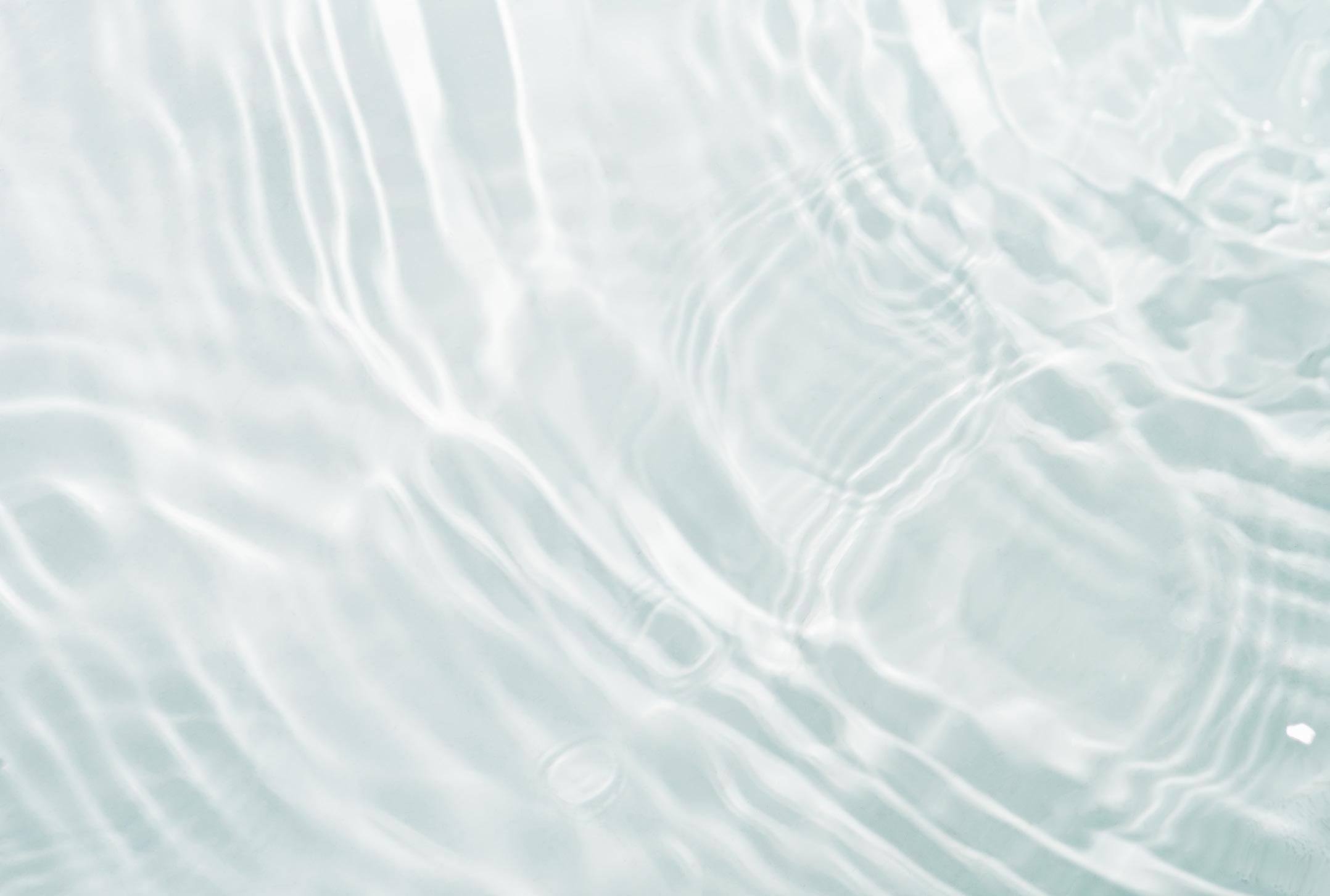
2 large potatoes
1 small head of celeriac
3 ½ oz (100 mL) heavy cream
2 oz (56 mL) unsalted butter
1 small bunch of chives
6 oz (170 mL) olive oil
8 ½ oz (250 mL) white wine
1 shallot, finely diced
4 oz (125 mL) unsalted butter
¼ oz (7 mL) caviar
Seasonal vegetable to garnish
Directions

Make a large slice in the side of the scallops so they open up in half. Mix chopped lobster and cream cheese. Season with salt and pepper. Stuff the lobster mixture into the scallop and fold back over. Cool in fridge before cooking
Peel and large dice potatoes and celeriac. Place in water and boil until tender. Strain and push through ricer. Mix in heavy cream and butter. Season with salt and pepper and keep warm.
To make chive oil, place a bunch of chives in a blender with half the olive oil. Blend well, then add the rest of the olive oil. Let stand for 1 hour. Strain through cheesecloth for a bright green chiveflavoured oil.
To make beurre blanc, sauté the shallot in a little olive oil. Add white wine. Reduce by two thirds and reduce heat
to keep warm. Slowly add butter and whisk until well incorporated. Strain out shallots. Season with salt and pepper. At the last moment, fold in the caviar so it remains fresh. Caviar is a little salty, so don’t over-season the sauce.
Cook scallops in a very hot pan with a touch of canola or grapeseed oil, two minutes per side. Try for a golden sear on both sides. The lobster mixture will just warm. Don’t overheat or the cream cheese will melt.
Place four ounces (about 120 mL) of potato/celeriac purée in the middle of the plate. With the back of a spoon, smear the tail end of the mixture so it draws toward the edge of the plate. Place four scallops on the side of the purée, seasonal vegetable on the other side and spoon a tablespoon of the sauce over each scallop. Garnish with a sprig of herb or micro greens.
40 NOVA SCOTIA
Landing by private vessel is allowed with permission from Parks Canada.






On our way to the southern beach, we find a horse carcass. Lucas says other horses stayed with this mare as she weakened and died. “They’ll graze nearby and nuzzle. If the horse is a member of a band, it won’t be dying alone.”


We find wreckage from one of the 350 ships that have met their fate here since the 16th century, lending Sable the nickname “Graveyard of the Atlantic.” Further along, we startle several hundred grey seals from their basking places back into the surf. Some 400,000 breed here, making it the world’s largest colony. The shores of Sable come alive in January when they give birth to some 80,000 pups, and again in March when the seals molt.
Back at the helicopter pad, Stillman announces, “Folks, I did bring a treat for the end of the day.” He pops a bottle of champagne and pours us a round. Standing in a circle, the sun illuminating the bubbles in our glasses, we toast our rare, shared expedition to one of the world’s great wildlife reserves.

A coastline shaped by music VISIT canadasmusicalcoast.com Join us on Canada’s Musical Coast Come for the great music and food, stay for the fun! It’s time for a visit to Western Cape Breton Island.
41 NOVA SCOTIA
Top: Wreckage from a ship long ago. Bottom: Seals take to the water as we pass.
The middle of a much longer story
10 national historic sites to visit in Nova Scotia
Anne National Historic Site, Annapolis Royal.
 BY DARCY RHYNO
BY DARCY RHYNO
With almost no fanfare, Nova Scotia turned 400 in 2021. I learned of this major milestone from a small plaque at Fort Anne National Historic Site in Annapolis Royal.
A series of interpretive signs at Fort Anne explain that beneath the grassy slopes of the star-shaped, Vauban-style fort built in the early 18th century, lie the remains of an even older stronghold, Charles Fort. The plaque that caught my attention tells the story of 70 Scottish settlers who started a colony on this in 1629, eight years after King James I granted what later became Nova Scotia to Sir William Alexander. Nova Scotia’s current name, flag and coat of arms date back to this handover in 1621.
In part, the plaque reads, “Despite many deaths during the first winter, the surviving colonists thrived on agriculture, fishing, and trade with the Mi’kmaq.” This last sentence
made me realize that the 1621 grant is just the middle of a much longer story. After all, no one asked the Mi’kmaq what they thought of a foreign king granting their lands to one of his courtiers. That plaque set me on a road trip to 10 national historic sites to pursue the full story of human history in Nova Scotia.
Regaining lost skills
“In the beginning, it was the root, the tree, the bark that taught my ancestors,” says Todd Labrador, an accomplished Mi’kmaw craftsman who builds birchbark canoes at Kejimkujik National Park in Caledonia. Taking part in a one-day workshop, I split boiled spruce root into thin strands used for binding the bark to the canoe frame.

Although the skills to build a canoe using only materials harvested in these forests were mostly lost, Labrador is relearning them by paying attention to how the bark, roots and wood respond. “The material will teach you how, if you listen,” says Labrador.
Elsewhere in the park, Mi’kmaw interpreter Nick Whynot leads me to Canada’s second largest petroglyph collection, etched into rocks beside Kejimkujik Lake. These petroglyphs and the presence of the Mi’kmaq make Kejimkujik
Fort
DARCY RHYNO
42 NOVA SCOTIA
Canoe building Instructor Todd Labrador with birch bark.
the only national park in Canada that’s also a national historic site. Whynot tells me there are so many petroglyphs here because this was a stopping place for his ancestors as they navigated a complex system of waterways, paddling canoes like the one Labrador is building.
“You can gather resources here,” he says. “There was fishing and hunting. There were several eel weirs. It would’ve been a major operation. Dried fish and smoked eels would have been important food stores.”



Whynot points out petroglyphs of animals and people. One of the most impressive is of two ships under sail. “That would have been something to behold when you’re paddling in a birchbark craft,” he says. “Those are stories you’re going to bring back and draw for people, seeing these massive ships with people on them.”
French and British settlers

Those ships were carrying the earliest French and British settlers. At The Habitation, the reconstruction of the original wooden fort Samuel de Champlain built at Port-Royal in 1605, an interpreter plays the first French governor. He greets visitors by asking what skill they have to contribute to Nova Scotia’s first year-round European settlement.
Within a few decades, French settlers were farming and fishing throughout Acadia,



now the Maritime provinces. France began work on Fortress Louisbourg on Cape Breton Island in 1719. Visiting North America’s largest historical reconstruction, I walk the cobblestone streets, greeting costumed interpreters, petting backyard farm animals and dining in a period restaurant. My fish dinner is historically accurate and delicious.
The UNESCO World Heritage Site in Grand Pré, near Wolfville, tells the full story of the Acadians who settled across the Maritimes. Battles between France and Britain sparked government’s mistrust of the Acadian settlers. British colonial officials drove 10,000 Acadians from their homes between 1755 and 1763, a process known as the Great Expulsion. Years later, many slowly returned to build new communities across the Maritimes.
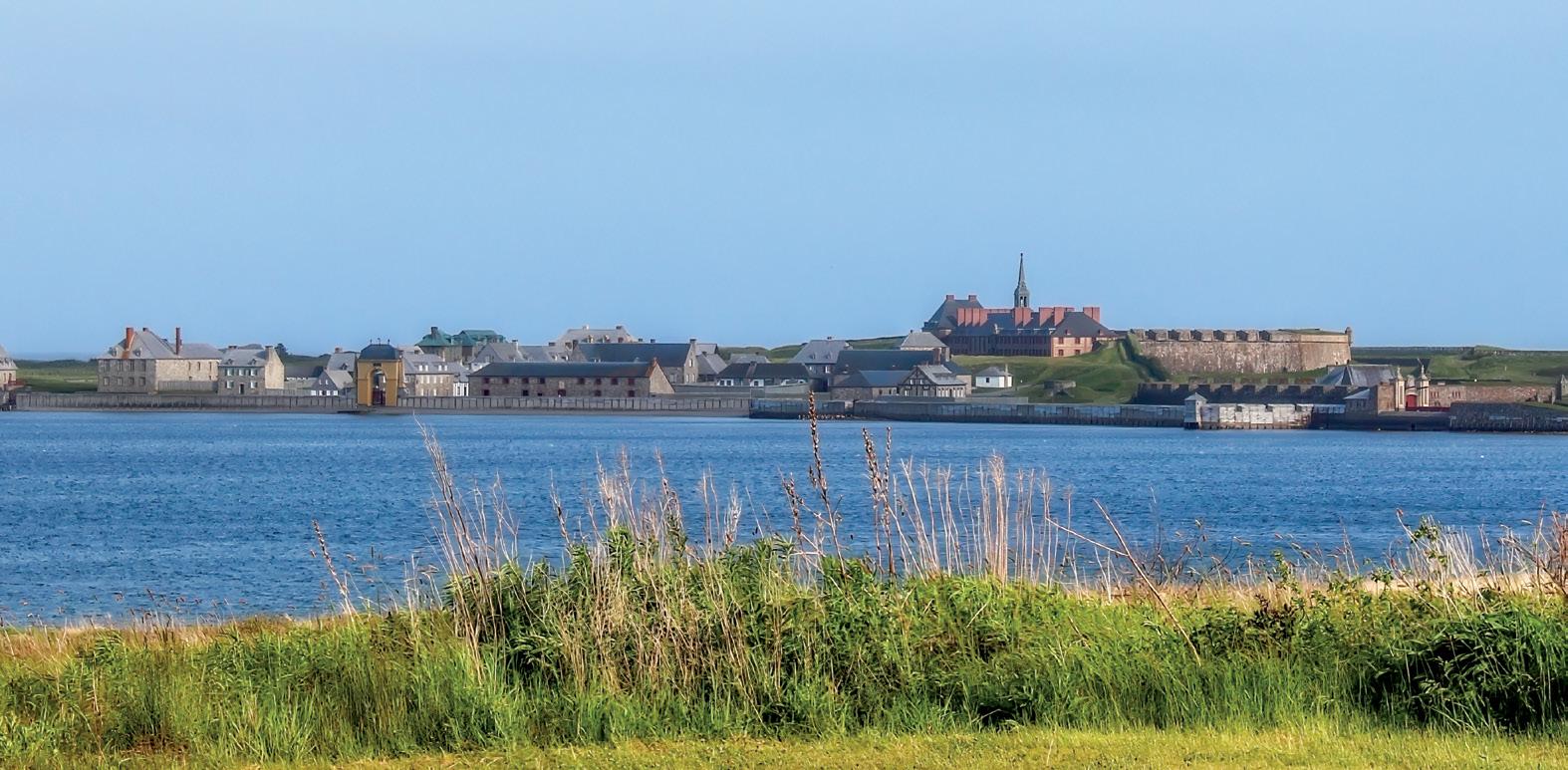
2023 Season shipscompanytheatre.com | 1-800-565-SHOW 1274 Hollis Street, Halifax, NS 902-446-4077 | www.art1274hollis.ca Visit and Experience Local Fine Art And Fine Craft
TOURISM NOVA SCOTIA / @DAVEYANDSKY
Lori Nason, Jean Hughes, Bonnie Baillie, Judy Gordon, Colleen Underwood
TOURISM NOVA SCOTIA / SCOTT MUNN DARCY RHYNO
DARCY RHYNO
Fortress Louisburg in the distance.
43 NOVA SCOTIA
The Habitation at Port-Royal.
Explore the Historic Annapolis Royal

The Inn is a beautifully restored heritage property, that offers old world experience with modern day comfort
• Casual Fine Dining
• Open Breakfast, lunch and dinner
• Award winning Chef
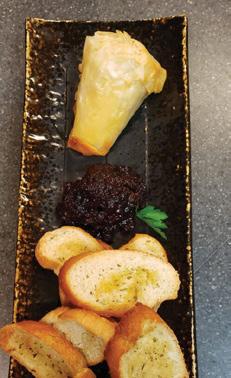
Room

Check
Fort Anne, Annapolis Royal.
Seasons for Nova Scotia’s Big 10 National Historic Sites
• Fort Anne. Open daily from mid-May to mid-October. Grounds open year-round.
• Port Royal. Open 9 a.m to 5 p.m., May 19 to Oct 8, 2023. Grounds open year-round.
• Kejimkujik National Park. Camping available May to October. Park is open year-round.
• Fortress Louisbourg. Open daily 9:30 a.m. to 5 p.m., May 22 to Oct 9, 2023. Winter hours are 9:30 a.m. to 4 p.m., weekdays.
• Grand Pré. Open daily from mid-May to mid-October. Grounds open year-round.

• Halifax Citadel. Open year-round, 9 a.m. to 5 p.m.
• Georges Island. Open mid-June to mid-October, mostly on weekends.
• Prince of Wales Tower. Grounds and interpretative panels open year-round. The tower is closed.
• York Redoubt. Grounds open year-round. Parking open daily 8 a.m. to 8 p.m. from the end of June to Labour Day.

• Fort McNab. Open year-round. This site is on McNab’s Island, accessible by private ferry. To learn more, visit: mcnabsisland.ca/getting_here
Year-Round
TOURISM NOVA SCOTIA / ACORN ART & PHOTGRAPHY TOURISM NOVA SCOTIA / SCOTT MUNN
Some of the deported Acadians were imprisoned on Georges Island in Halifax Harbour. “For the Acadian community, Georges Island is a sacred site,” reads an interpretive sign. “It is a tangible connection to the human tragedy that played out here some 250 years ago.” Crossing a drawbridge into Fort Charlotte, I join a guided tour deep into a labyrinth of tunnels where soldiers stored munitions and defended the city.
rates include breakfast
• Receive 10% off all food, when booking direct website for hours, 350 St. George St. Annapolis Royal, NS 902-532-5750 | garrisonhouseinn.ca
Garrison House Inn
Georges Island is part of the Halifax Defence Complex, a network of five national historic sites around the harbour, including the Prince of Wales Tower in Point Pleasant Park, York Redoubt, the remains of Fort McNab on McNabs Island and Halifax Citadel at the heart of the city. Visiting is a journey through history from the founding of Halifax in 1749 through various conflicts, including both world wars.
44 NOVA SCOTIA
Georges Island National Historic Site.
Raising spirits
At the Citadel ends the tour of national historic sites in pursuit of Nova Scotia’s history. I sign up for the Raise Your Spirits tour hosted by Sergeant Andrew Crawley. He’s dressed as a 78th Highlander from the period 1869–71 in a kilt, red doublet, and white spats.

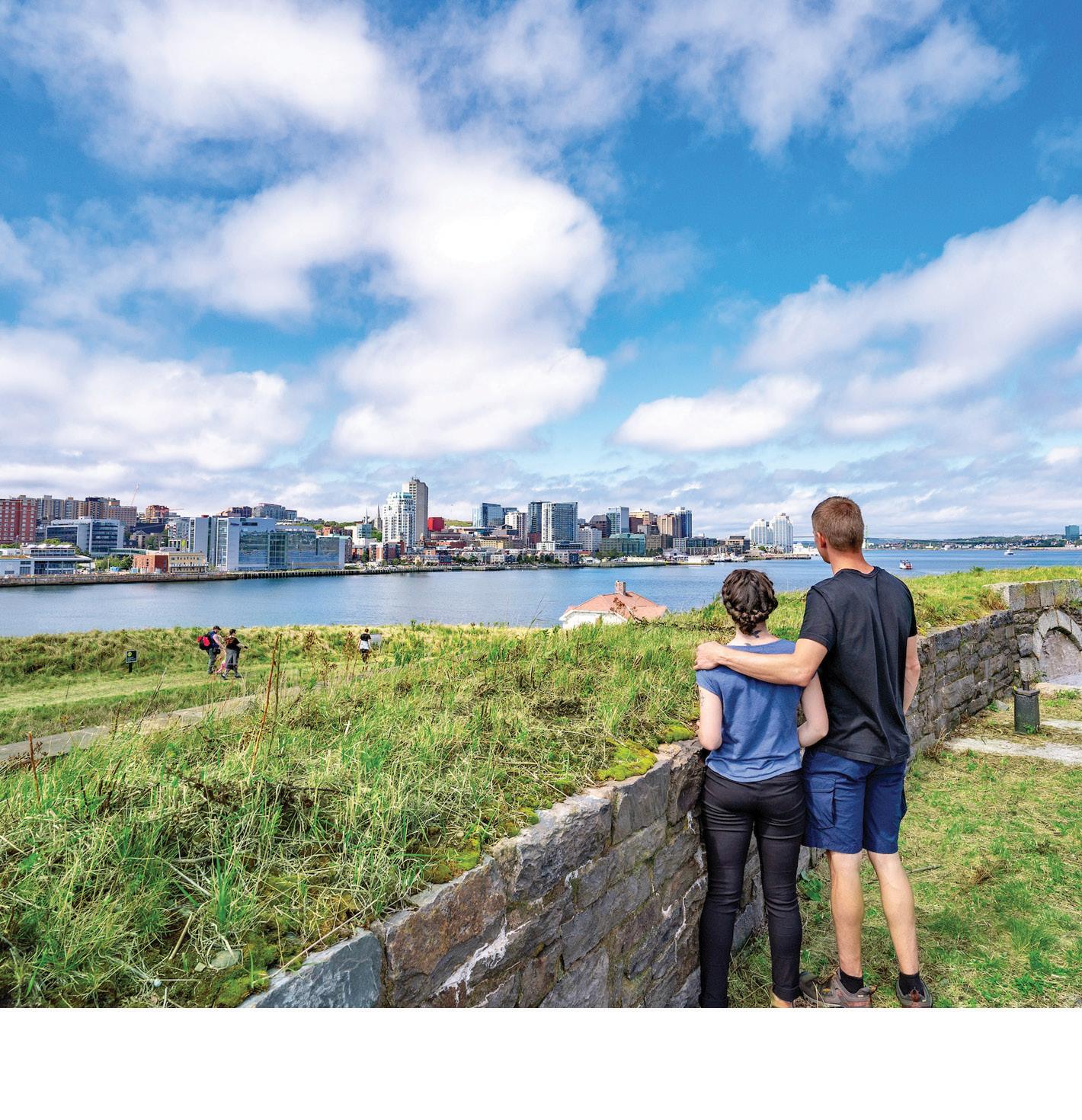
“Feel free to try the Noon Gun Gin,” he suggests. “It’s named after the noon gun, but also a ‘gun gin,’ which is a hoist to put artillery pieces on gun carriages, so it’s a play on words.”
A 12-pound gun fires daily at noon from Citadel Hill, a continuous tradition (excluding Christmas Day) since 1865. Noon Gun Gin is the first of four spirits by Compass Distillery that Crawley offers. All are barrel-aged within the Citadel’s walls. Crawley tells me that, during the Highlanders’ period, some 300 groggeries served booze in Halifax. Grog was rum cut evenly with water, supplied as rations aboard ship.

As Crawley talks, I imagine hundreds of sailing ships jamming the harbour. The image brings to mind Nick Whynot’s favourite petroglyphs, those two ships scratched into rocks at Kejimkujik. We raise our glasses to toast the story of Nova Scotia from its Indigenous roots to European settlement, a story told at its top 10 national historic sites.

Simon says, ‘fresh’.
To the ambience and magic of White Point’s natural allure, we add delicious new menus peppered with farm and seato-table cuisine. Our new Chef, Simon insists on fresh, local quality, unique flavours, and a simply scrumptious experience from breakfast to the evening’s dessert. Come stay and dine by the sea, and experience something new at an old favourite.
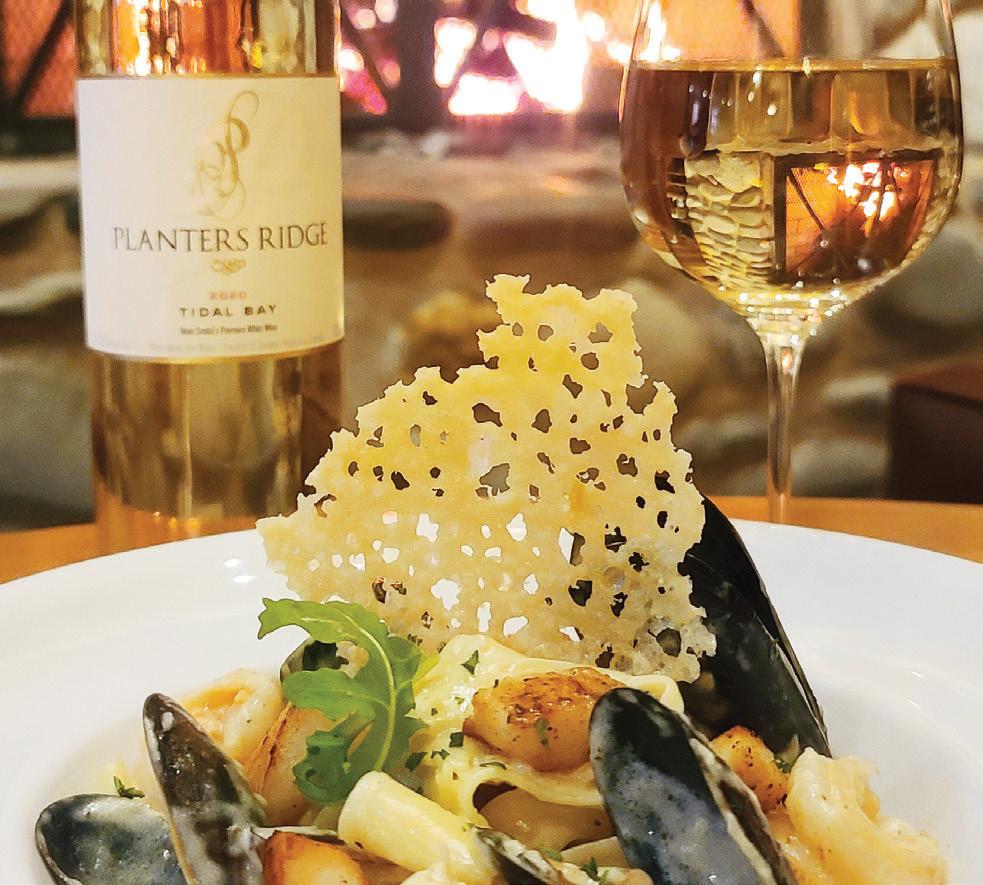

1.800.565.5068 whitepoint.com

 Sergeant Andrew Crawley, Halifax Citadel.
The Raise Your Spirits tour, Halifax Citadel.
DARCY RHYNO
Sergeant Andrew Crawley, Halifax Citadel.
The Raise Your Spirits tour, Halifax Citadel.
DARCY RHYNO
45 NOVA SCOTIA
DARCY RHYNO
www.nsiten.com
Pjila'si!
Mi’kmaw culture and tradition is vibrant and thriving in Mi’kma’ki (Nova Scotia).


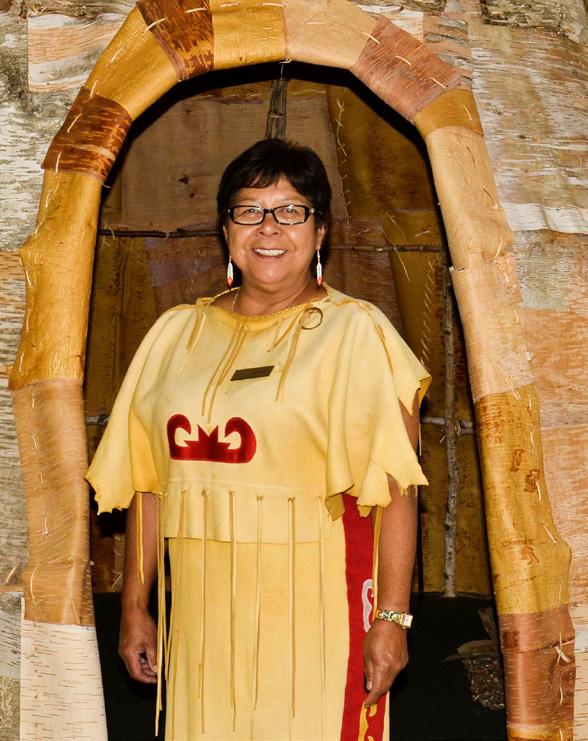

We are thrilled to be recognized as the destination of choice for visitors travelling to the ancestral lands of the Mi’kmaw, as you and yours seek meaningful indigenous experiences.
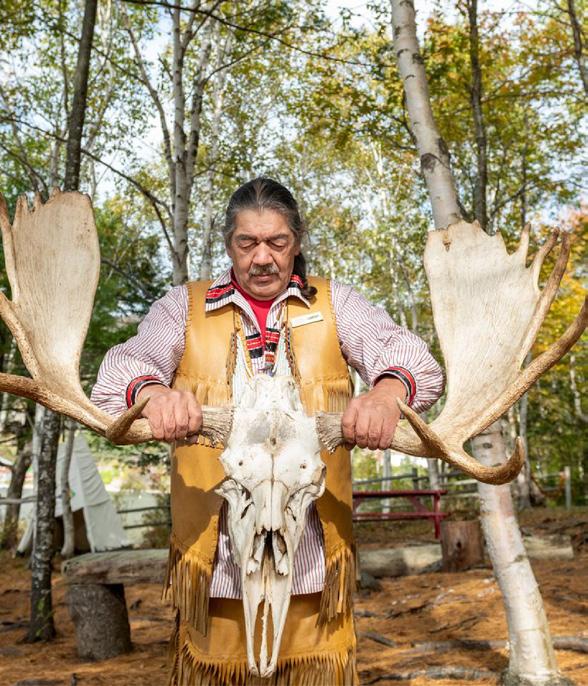


Wela'liek wiaqit'kwey'wiek!
Pronunciation:
Weh lah lee ek We ahh ghit Gway wee ek
Thank you for joining us!
Picnics and lobsters
Enjoying local delights in Atlantic Canada
BY SHELLEY CAMERON-McCARRON
When you travel to Cape Sable Island, at the southernmost point in peninsular Nova Scotia, you’ll find a weathered, historic lighthouse towering in the distance, working wharves, and countless photo opportunities, especially at the Hawk, where it’s fascinating to walk along the white sandy beach and see a 1,500-year-old drowned forest. It’s an otherworldly area of petrified tree stumps, exposed at low tide and still rooted in the original soil. And for the first time in almost 20 years, you’ll find an eat-in restaurant on the island.

The Salt Banker, a 45-seat Italian seafood bistro, opened Aug. 1, 2022 in the former Royal Bank location in Clark’s Harbour after two local seafood exporters, Atlantic ChiCan Seafood Ltd. and Clark’s Harbour Seafoods Ltd., bought the building.


Here in the “Lobster Capital of the World,” seafood is a menu staple. The restaurant
 The Salt Banker’s welcoming committee.
The Hawk Beach and the drowned forest of 1,500-year-old trees.
The Salt Banker’s welcoming committee.
The Hawk Beach and the drowned forest of 1,500-year-old trees.
SUBMITTED
48 NOVA SCOTIA
overlooks an active fishing village where many make their living off the sea.



The owners “wanted to bring in a restaurant to showcase the local seafood, and so that people could see all the bounty we have here in the South Shore,” says chef Corey Rose, noting the local fishing area accounts for about 25 per cent of Nova Scotia’s entire lobster catch. Lobster season runs from the last Monday of November through May. The crustacean, along with local scallops and haddock, stars in many dishes at the Salt Banker, which also has a live lobster tank.

Rose says the menu is a balancing act. “We feel like we need to offer something for the locals, and not just for tourists,” says Rose. “Something to build the community … We want to keep it busy all year long.”

The lobster and haddock bake is a menu highlight. Also popular are the scallop carbonara, shrimp scampi, and eight-ounce

Burn tc oat Head Park
Explore the ocean floor - guided tours available! Check tide times at burntcoatheadpark.ca Plan ahead - check Tidal Bore times: easthants.ca/fundy Tidal Bore viewing & Visitor information Tidal adventures await1 hour from Halifax!
SUBMITTED
BIGSTOCK/ BIGIMAGER
SHELLEY CAMERON-MCCARRON
49 NOVA SCOTIA
Picnic Pleasures
Hungry for more picnic opportunities throughout Atlantic Canada? Read on.


In Prince Edward Island, those looking to dine al fresco will want to check out the stylish offerings from Cordial Picnics, the island’s first luxury picnic experience. Its setups are swoonworthy. Or perhaps you’ll want to enjoy a lobster dinner or lobster roll on a fishing boat? P.E.I. has excursions for that too, with options such as The Fiddling Fisherman, Top Notch Charters, Joey’s Deep Sea Fishing, and Captain Nate’s Murray Island Adventures
In Nova Scotia, the Sou’Wester Restaurant at Peggy’s Cove offers a picnic package (including a lobster roll option) with a side of amazing scenery near the province’s famed lighthouse, and at Tangled Garden in Grand Pré in the Annapolis Valley, diners can take advantage of afternoon tea-style plein-air picnics. In Halifax, Better in Boxes prepares grazing boxes for on-the-go meals.
In Newfoundland and Labrador, whales and seabirds may keep you company at Lighthouse Picnics while you dine by the lighthouse on the Ferryland headland. Across the province, have mug-up or boil-up fun (dining on the beach) with Experience Twillingate, plus prime snacking over an open fire with Bonavista Adventure Tours, which offers a tour and a traditional beach boil-up. In Western Newfoundland, Taste of Gros Morne does picnics for various experiences, including a build-your-own option, and Chef Ange at The Florian Hotel in Forteau, Labrador does special order picnics for hikers of the Frontier Footpath.
In New Brunswick, in St. Martin’s, book your lunch pail in advance from the Fundy Trail Heritage Cookhouse (built in a replica late-1800s cookhouses, one of the most important buildings in a lumbering village where workers gathered for meals) and set off on the Fundy Trail to find a spot to enjoy your lumberjack feast. In Edmundston, find a pastoral picnic experience at the New Brunswick Botanical Garden. Peony Socials & Company in Moncton serves luxury picnic options. And Chess Piece Market, sister business to popular Parisian-style Chess Piece Patisserie & Café in Fredericton, offers grazing baskets and traditional picnics with sandwiches and sweets.
Additionally, Parks Canada, home to many dreamy Atlantic Canada locations to explore, will also pack lunch for your adventure too with its Perfect Picnic package, available at many locations.
50 NOVA SCOTIA
TOURISM NOVA SCOTIA/JAMES INGRAM
striploin steak dinner. “Everyone is going on about” that last offering, he adds.
In season, the Salt Banker has a walk-up window for milkshakes and house-made ice cream. Come winter, the sweet treat is available inside at the dessert bar. “We have a guy who comes in every day for the coffee ice cream,” says Rose.
At press time, plans were in the works to offer lobster picnic takeout in summer 2023. Rose says they’re still ironing out details; one option is offering fresh, steamed lobster with potato salad, a choice of canned wine or beer, and a map to Cape Sable Island beaches for dining inspiration.



The island has gorgeous sandy beaches, says Rose — a cool place to explore. The Hawk, for instance, is part of the Cape Sable Important Bird Area, making it one of the best birding areas in Nova Scotia. From the beach, view the Cape Sable Lighthouse, the tallest lighthouse in Nova Scotia, standing almost 31 metres.
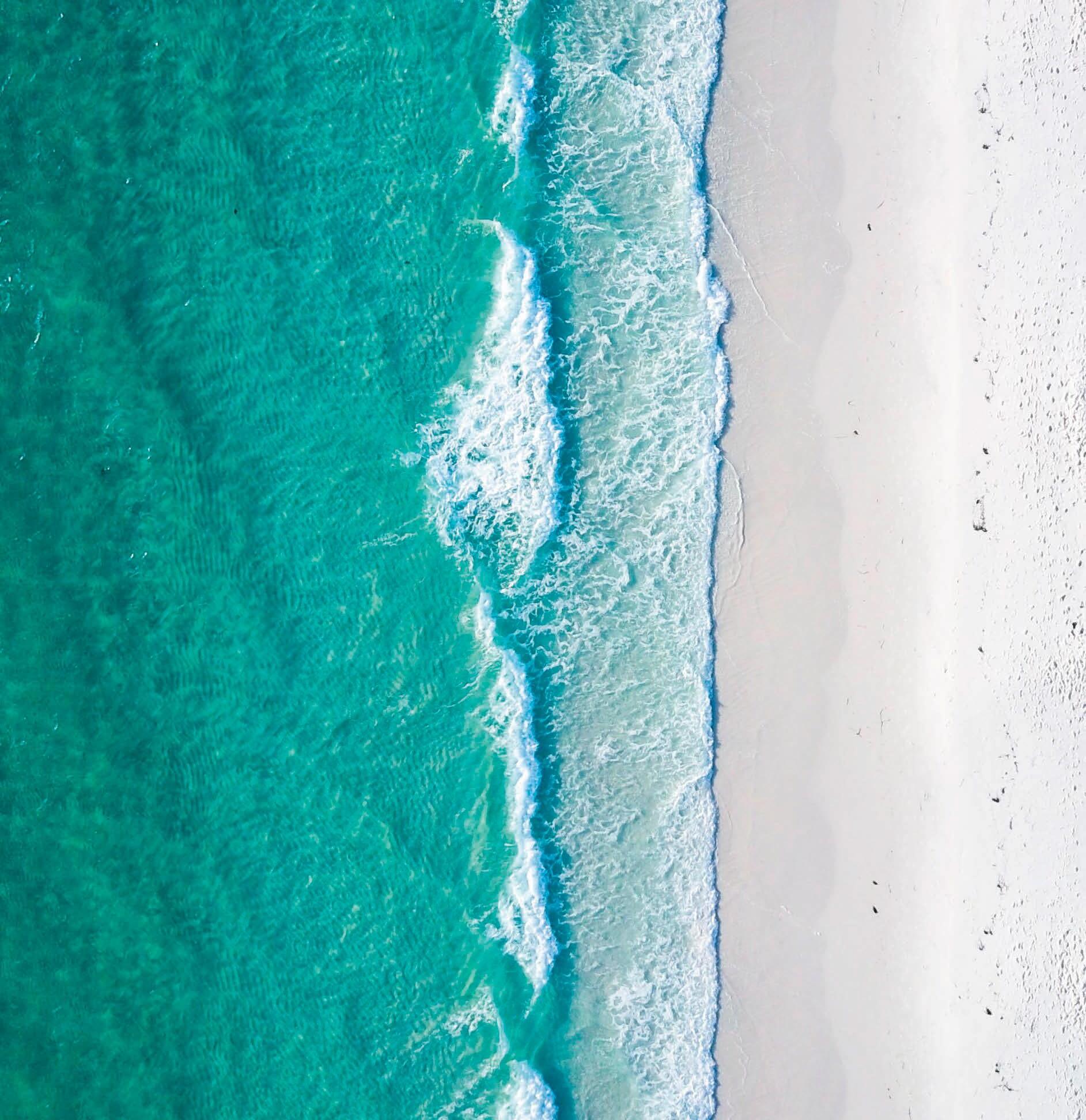
Brier Island Whale and Seabird Cruises



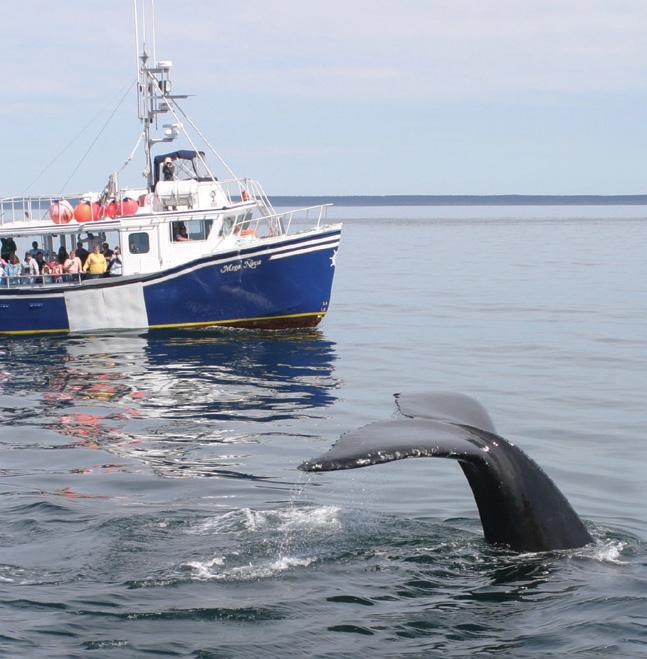

Brier Island’s Original and #1 Chosen Whale Watch




Dedicated to Research & Education Since 1986!


A variety of accommodations to fit all traveller’s needs. From a quick solo overnight to a week-long family getaway. New oceanview suites withfull kitchens and apartment units are now available. Licensed Restaurants & Relaxing Lounge overlooking the passage Free WiFi • Pet Friendly rooms available 1-800-662-8355 | www.brierisland.com
PO Box 1199 223 Water St., Westport, Brier Island, Nova Scotia B0V 1H0 1-800-656-3660 www.brierislandwhalewatch.com
51 NOVA SCOTIA
From fresh bread to fine art
The new LaHave
STORY AND PHOTOGRAPHY BY DARCY RHYNO
Ah, the aroma of fresh bread. There’s nothing like it to put a smile on my face and evoke memories of warm kitchens, time with family and delicious comfort food. That’s especially true every time I walk into LaHave Bakery, a Nova Scotian landmark in a historic building located on the LaHave River along Route 331 on the South Shore.

On the outside, the storefront looks much like it did in 1896 when it was built as a ship outfitter and fish plant. The original LaHave Outfitting Co. sign still hangs over the entrance.
Today, the veranda welcomes visitors with a row of yellow Adirondack chairs

and wooden barrels of purple petunias set before the floor-to-ceiling plate glass windows. The inside is just as inviting with its warm, wooden wainscoting, tin ceiling, antique glass cases, shelves stuffed with goodies and gifts, and of course the aroma of fresh loaves, baguettes, bagels, muffins, and lunch takeaways such as mini pizzas, paninis, wraps, and salads.
From 1985 when the LaHave Bakery moved in, it stood alone as the sole attraction in the neighbourhood near the mouth of the eponymous river. Here, a little cable ferry crosses the river, as it has since 1832, bringing visitors to the bakery. Today, the 24-hour ferry is free and crosses
52 NOVA SCOTIA
Baguettes from LaHave Bakery.
four times hourly, carrying as many as 15 automobiles each trip. The ferry cuts off a lot of kilometres for those approaching from the Riverport side but the main attraction is the fun of driving onto a boat and enjoying the view of LaHave from the water.

Just 10 kilometres south of the bakery on Route 331, the LaHave Islands have always attracted visitors, as has Crescent Beach, which links the islands to the mainland at Rissers Beach Provincial Park, where there’s a small campground.
In the past few years, shops, artisan studios, and eateries have opened around the bakery. Today, in rooms behind the bakery and in adjacent historic homes, artisans keep busy in their studios. Together, they make for a varied and colourful little neighbourhood. In the bakery’s building, I find the delightful LaHave Craft Co-op and LaHave River Books. Within the craft shop, I browse handmade beeswax candles, watercolours of fishing boats at their moorings, and brightly painted wooden buoys, boats, birds, and mermaids. Inside the bookstore, I look through intriguing second-hand books and the latest bestsellers, including many by local authors.
Walking the street, I come upon a short fence hung with a display of ceramic art, including glazed plant pots painted with riots of orange and yellow nasturtiums. Double-handled vases that resemble ancient Greek amphorae are glazed a vibrant sky blue. This is the enticing teaser for the Westcote Bell Pottery and Artworks shop. There, in a former country store, ceramic artists Vaughan Smith and Jacqueline Cohen work their magic. With everything from funky teapots to stylish place settings, Westcote is a pottery lover’s paradise. My favourite pieces are the carvings on tile that resemble intricate woodcuts.
Westcote is just one of several artist outlets and studios within walking distance of LaHave Bakery. A world of whimsy awaits inside Child at Heart Handcrafted Wooden Models and Woodcraft. This is where Paul Kelley carves and paints brightly coloured miniature sailboats, antique cars, fire trucks, planes, and animals. So animated are these works (children love playing with Gael Watson of the LaHave Bakery supplied this recipe and says, “It’s very popular in our sweets case. I eat it when I need a good charge of energy around 3 p.m. It’s a favourite of mine, as well as easy to make. It does not need to be baked.”
Wet ingredients
1 cup (250 mL) honey
1 cup (250 mL) peanut butter
1 cup (250 mL) brown sugar
¼ cup (75 mL) butter
Dry ingredients
3 cups (750 mL) Rice Krispies
1 cup (250 mL) Special K
1 ½ cups (375 mL) sunflower seeds
Topping
½ cup (125 mL) chocolate chips

Mix wet ingredients together in one bowl. In a separate bowl, mix the dry ingredients. Then mix the contents of the two bowls together. Butter a 9” x 11” (23 cm x 28 cm) pan. Press the contents of the bowl into the pan. Melt chocolate and drizzle over the top. Refrigerate until firm. Cut and serve. Keep leftovers in the fridge.
INTO A LOBSTER CRAWLER, YET.
WE’LL TURN YOU
LOBSTERCRAWL.CA
you to lift a few pounds with us, real soon.
but we train religiously year-round, and invite
February is the offical month to lobster crawl ,
(We won’t get into the celery debate.)
bread softer than the pillows at a local B&B.
lobster and mayo tucked between two pieces of


Lobster pizza. Lobster chowder. and a melee of
with lobster love!
the south shore is crawlin’
Molly Bars
53 NOVA SCOTIA
The LaHave River ferry.
Four Seasons Retreat
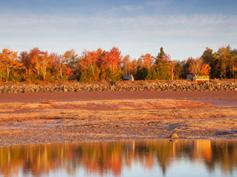


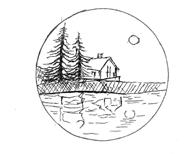
them, but they’re more than toys), Kelley has created a world of the imagination by photographing his carvings. He used the photos to create a storybook called Wave Babies’ Sailing Adventure. There’s even a miniature version of the LaHave neighbourhood with a tiny version of his own shop.

At Heart to Hand Studio, artists Monica O’Halloran-Schut and Dave Schut offer fine art such as jewellery crafted from silver and copper, plus works in wood and textiles. You can’t miss the studio — it’s in a renovated historic building painted a warm orange with bright yellow trim.

Half a kilometre the other way on Route 331 at the Square Peg Gallery, I marvel at Merydie Fjarlie’s decidedly original and contemporary jewellery, which she makes using an ancient gold-thread technique. Among her fantastical embroidered sculptures are teapots and coffeepots frozen in time, pouring forever into cups.
Back at LaHave Bakery, the original LaHave attraction and the community cornerstone, I grab a baguette and a loaf of seed bread to take home. For lunch, I choose the daily panini. Today, it’s My Big Fat Greek Panini, with spinach, tomato, red onion, black olives, and feta. My order is rung up on a huge, century-old, and elegant brass cash register.
Outside, I walk to the end of the pier that reaches out into the river. There, I settle into one of the bakery’s yellow Adirondack chairs. I munch my panini and watch the LaHave cable ferry pull in with another dozen cars, delivering more visitors who are about to fall, as I have, for the new LaHave.
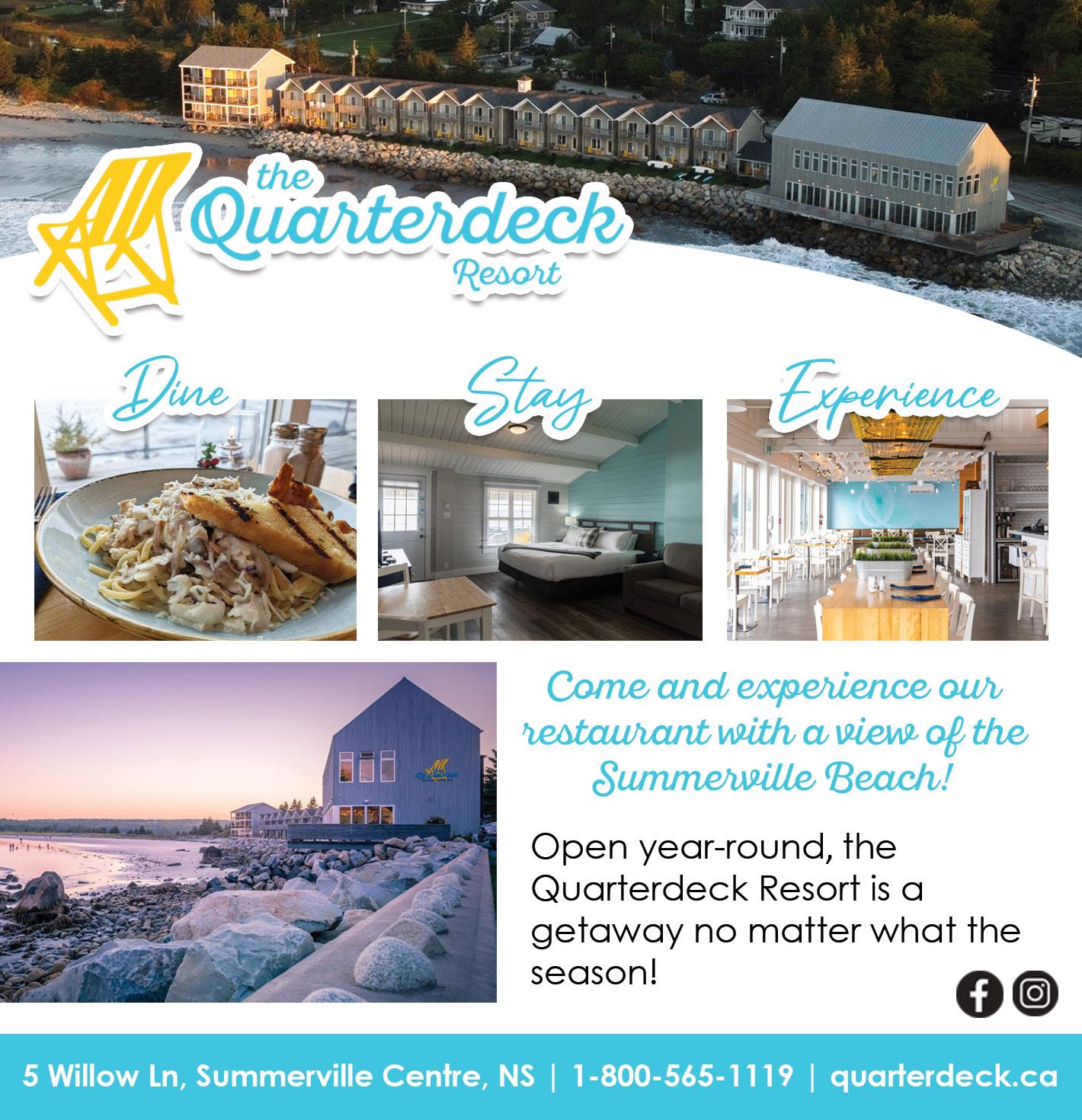
The Ultimate Lunenburg Waterfront Experience Weekly events and celebrations all summer long! Enjoy our culture, dinning and shopping! fisheriesmuseum.novascotia.ca A place to enjoy come rain or shine in the heart of our UNESCO town. 320 Cove Road, Economy, NS | 902-647-2628 fourseasonsretreat.ns.ca | reservations@fourseasonsretreat.ns.ca
• Fully equipped cottages.
• Open year round.
• Overlooking the highest tides in the world, where the tide goes in and out over 1 km every six hours.
• Ten of the twelve cottages are oceanfront, surrounded on 3 sides by birch, spruce and fir woods.
• Swimming pool and hot tub (mid June to Labour Day).
54 NOVA SCOTIA
Westcote Bell Gallery entrance, LaHave.
Paddling through a tunnel
Kayaking at Nature Space Eco Resort
 STORY AND PHOTOGRAPHY BY DARCY RHYNO
STORY AND PHOTOGRAPHY BY DARCY RHYNO
P.E.I.’s mangroves” is how Jarrod Gunn McQuillan of Nature Space Eco Resort describes the vegetation on the island’s North Shore. Branches arch over us as we paddle our kayaks along a narrow creek. In places, it’s like paddling through a tunnel. Rather than tropical mangroves, the thick vegetation here is alder, a fast-growing small tree in the birch family that thrives in wet habitats such as the banks of this marshy creek.
We paddle so deep into the alders, I can no longer turn my kayak around. McQuillan tells me to take the lead. I soon discover why. Rounding one sharp bend, I startle a family of ducks. The mother makes a ruckus and the ducklings scatter for cover. Appreciative of the encounter, I back-paddle until I can turn around.
On the return paddle, a kingfisher leaps from the branch of an overhanging tree and glides in a graceful arc, then back up to the branch of another tree. After I navigate twists and turns and a fallen tree limb, the creek widens where it meets the lagoon known as St. Peters Lake. Great blue herons march slowly like marionettes in the shallows. Occasionally, one lowers its head on bent neck, then strikes, plucking a small fish from the water.
We head toward a small island mid-lagoon. Beyond it, silver sand dunes undulate along the horizon. The open Atlantic laps along the beach. We set off at a good pace to take a look, though we won’t venture past the dunes. We’re nearing the end of McQuillan’s two-hour Lake Explorer Tour, a gentle paddle in protected waters. The open ocean awaits more adventurous kayakers on other tours with McQuillan, an expert paddler and instructor.
Through his company, Cloud Nine Adventures, McQuillan trains kayakers from first timer to daredevil. He guides tours to mussel farms where paddlers can see how shellfish aquaculture works. They might even get to try a few oysters fresh from the sea. For the truly fearless, McQuillan leads advanced paddlers to places like the ledges off Brier Island in Nova Scotia, where the Bay of Fundy generates intense ocean currents and rapids.
“It gets pretty jumbled and confused,” he says. “Some of the standing waves can reach three metres.”
Other activities at Nature Space stand in stark contrast to McQuillan’s high-energy outings. His wife and business partner Heather is a yoga and mindfulness instructor with training in conflict resolution. She leads
yoga sessions, workshops, and retreats. They built a meditation labyrinth — a sequence of paths to stroll, leading to a quiet centre where there’s a Japanese-style garden with a small fountain and a bench. Trails meander around their property for walking or snowshoeing, and they plan a rink.
“We’re creating spaces for people to connect with nature, connect with themselves,” says McQuillan.
As enticing as this combination of wellness and outdoor activity is, it’s the Mongolian yurts that truly qualify Nature Space as a retreat. Each of the four circular accommodations outfitted with queen beds and private deck with hot tub is known in

“ 55 PRINCE EDWARD ISLAND
The red yurt, Nature Space Eco Resort.
Mongolia as a ger. Each is handmade and hand painted in that country according to a different colour scheme: red, orange, and two shades of blue. Intricate designs, such as clouds and eternal knots, cover the elaborate entrance and every inch of supporting woodwork. Each is named for an animal frequently seen on this property (snowshoe hare, fox, kingfisher, and blue jay), with warm touches such as cushions and figurines that honour each creature.

McQuillan is proud of the gers and takes care to honour their heritage. He points out the camel sinew and horsehair rope that binds the decorative central columns or bagana and the smaller roof poles or uni. “Not a single nail holds any of this together,” he explains.
He takes seriously the symbolism built into the structure and follows the customs arising from it. “Mongolians are very particular about how you enter a yurt,” he says, pausing in the entrance. “It’s very important not to step on the threshold. You’re supposed to enter through the door with your right foot forward. The door represents the ancestors, and that’s how you honour them.”
For groups and for visitors staying in the gers, there’s a larger yurt for yoga and meditation classes called the Great Blue

Heron. A new building called the Hive serves as the central lodge and is equipped with two kitchens, washrooms, showers, meeting space and a spacious patio. Nature Space also has a sauna.
Back at the lagoon to complete my kayak outing with McQuillan, we paddle across the still waters to the back of the beach to check out a rare sight: the parabolic dune system. Over time, these dunes move. Imagine a time lapse film that could speed up the process — we’d witness these arched hills marching along the shoreline.
We paddle back across the lagoon toward the Nature Space dock and McQuillan’s “mangroves,” enjoying the plentiful birdlife around and above us. Along the way, I reflect that, as travellers, we rarely consider our own back yards as exotic, the way we might a tropical island or a vast desert. But when Mongolian yurts, yoga retreats, extreme paddling, wide lagoons, and rare land formations come together, the word exotic certainly applies. It’s no wonder McQuillan came to see his creek covered in alders as P.E.I.’s mangroves.
If whipping up your own meals in the Hive doesn’t fit with your getaway plans, here are some suggestions for dining out.
The Seafood Shack: 5 km
Eat in or take out, fresh fish and chips, lobster rolls, paninis, and wraps. facebook.com/islandseafood1
David’s at Rodd Crowbush Golf and Beach Resort: 10 km
Big, hearty breakfasts like seafood cakes, pancakes, eggs benny, and Buddha bowls. roddvacations.com/restaurant/rodd -crowbush-golf-beach-resort-fine-dining
Rick’s Fish ‘n’ Chips & Seafood House: 16 km
Everything seafood, all local: fish and chips, mussels, scallops, lobster, and haddock. ricksfishnchips.com
Bao Shack: 18 km
Decidedly eastern with rice bowls, ramen, steamed buns, pot stickers, and spring rolls. baoshack.ca
Every performance is rooted in love. A love of song. A love of dance. A love of red dirt and its people. A love of languages, past and present. Come, discover why so many say the Ross Family is “the highlight” of their PEI travels and return year after year!


experience begins by escaping to the tranquil grounds of Clinton Hills. Enjoy optional food or craft beer in the gorgeous barn loft - then it’s showtime! Your new tradition may be our family’s old one!

A roots music
you’ll love as much as we do. rossfamily.ca 1.866.298.8244
show
Your
ceilidh
56 PRINCE EDWARD ISLAND
Co-owner and paddling guide, Jerrod Gunn McQuillan, at the door of one of the yurts.
More IIHS TOP SAFETY PICK+ awards than any other brand since 2013.












(As of February 2023)











This year, 5 Subaru vehicles have been awarded the IIHS TOP SAFETY PICK. Those winners may span multiple categories, but they all share our super-strong reinforced frame and EyeSight® Driver Assist Technology. All of which amounts to an extra level of safety to protect those you love. Learn more at Subaru.ca/awards

EyeSight® is a driver-assist system, which may not operate optimally under all driving conditions. The driver is always responsible for safe and attentive driving. System effectiveness depends on many factors such as vehicle maintenance, and weather and road conditions. See Owner’s Manual for complete details on system operation and limitations. Ratings are awarded by the Insurance Institute for Highway Safety (IIHS). Visit www.iihs.org for testing methods. Vehicle(s) shown solely for purposes of illustration, and may not be equipped exactly as shown. Forester, Legacy, Solterra, Ascent, Outback and Subaru are registered trademarks. 2023 FORESTER IIHS TOP SAFETY PICK 2023 ASCENT IIHS TOP SAFETY PICK+ 2023 SOLTERRA IIHS TOP SAFETY PICK+ MODELS BUILT AFTER OCTOBER 2022 2023 OUTBACK IIHS TOP SAFETY PICK+ 2023 LEGACY IIHS TOP SAFETY PICK Visit your local Atlantic Subaru Dealer for award-winning safety.
Will that be Cabernet or Merlot?
Sleeping in P.E.I.’s floating wine barrels
 STORY AND PHOTOGRAPHY BY DARCY RHYNO
STORY AND PHOTOGRAPHY BY DARCY RHYNO
An eavesdropper might think Jen Smith is gauging my preference for a sunset tipple on her patio when she asks, “Will that be Cabernet or Merlot?”
But she’s actually asking which of two giant wine barrels converted into cozy, floating rentals I’d like to bunk in for the next couple of nights. Truth be told, I can’t tell the difference. Each barrel is tipped on its side, mounted on a deck and moored to a floating dock at Nellie’s Landing Marina in Murray Harbour, P.E.I., across a narrow river mouth from half a dozen fishing boats. The barrels make perfect little glamping pods for a single guest or couples seeking snug digs.

Keeping with the spirit of glamourous camping, a convex window covers one end of each barrel. From Merlot’s, the view from the bed through the bubble is of the
bridge over the river; from Cabernet’s, it’s down the river toward the ocean. The other end of each is fixed with a door that requires a little ducking to pass through into the cozy interior.
A cushy bed billowing with soft pillows takes up almost the entire interior but there is room for a tiny TV, an air conditioner, and luggage. Outside, the deck triples the rental space. Beneath the world’s tiniest tiki bar, a bar is equipped with a mini fridge, accessories, and a couple of wooden bar stools. Beneath a beach umbrella, two patio chairs made of fat bamboo beckon. For such a mini-stay, this place has it all — there’s even a kitchen sink. It’s a tossup. I choose Merlot.
Nellie’s Landing Marina is the love child of the friendly couple in the
 Bubble window, The Merlot.
Lobster buoys bear the name of island fishers lost at sea. These buoys grace a lobster trap Christmas tree.
Bubble window, The Merlot.
Lobster buoys bear the name of island fishers lost at sea. These buoys grace a lobster trap Christmas tree.
58 PRINCE EDWARD ISLAND
Beach Point with boats, P.E.I.
house on the riverbank overlooking the wine barrels, resting easy next to two equally abbreviated houseboats. Today, an overnight renter and her dog are settled into Little Miss Sunshine, a young couple into the Blue Marlin

Smith recently retired from the television industry and her partner, Calvin Fraser, is a fisherman who grew up here. They took over this marina and shipped in the floating rentals in 2021 when they were looking for a way to move permanently to their beloved Murray Harbour.
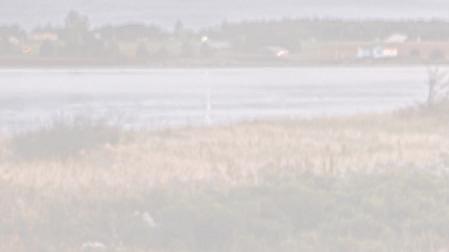
“It was a perfect fit,” says Fraser. He and Smith personify that old truism about East Coast hospitality. I’ve barely set my belongings into the wine barrel when Fraser is calling from the house for me to join him on his patio for a beer and a yarn.
After settling in, I join Fraser on the patio. He points out the village’s restaurant and Butler’s general store a short walk away. He fills me in on the area’s must-do activities. When he tells me he has e-bikes for rent, my plans for the day are set. He picks one out for me, attaches a fully charged battery, adjusts the seat, hands me a helmet, and offers a few safety tips.
Out on the road, the fat tire bike cruises along easily, the battery cutting in when I need a boost. Just down the road, I arrive at a section of the Trans Canada Trail that runs through the village. Murray Harbour residents have a great deal of pride in their heritage as a historic hub for forestry and fishing. That pride is on full display in Rail Head Park where the railway once stopped and where an open-air shelter now houses
a series of interpretative panels with photos and stories of the past.






From here, I follow a road along the Murray River until it turns overland towards Murray Head. Forest opens upon hilltop farmland studded in the late summer with golden bales of hay. Further on, I find lighthouses, museums, lonely beaches, and scenic lookoffs.
Back in Murray Harbour, I linger at a lobster trap pyramid draped with buoys inscribed with the names of lost loved ones. Returning the bike, Fraser invites me to continue that yarn on his patio. A couple of locals show up. One is a fisherman and the other a relative of a local hockey legend. The stories of adventures on the ocean and victories on the ice flow as freely as the beer.
F T
guarantee you will want to stay, Souris PEI • sourispei.com
A historic fishing town with stunning sandy beaches and scenic views abound
We
Photo Courtesy of JoAnne Dunphy
59 PRINCE EDWARD ISLAND
Morning in the Merlot, Nellie’s Landing, Murray Harbour.
In the morning, I awake to the sounds of fishermen, working on their boats. Sunshine streams through the panoramic bubble onto my cozy bed. A few yawns later, I’m up, ready for a day of adventure. When Fraser delivers a coffee, I take the opportunity to get his road-trip recommendations.
Fraser says new artisan and craft beverage makers have sprung up in the area lately. He provides directions to a few breweries and wineries, plus Double Hill Cidery.
I find the cidery beside a red dirt road on the summit of a hill. Tiny apple tree saplings are planted in a field that slopes down to forest, then stretches to the sea in the distance. Double Hill is so new, the terrace is a temporary arrangement of a giant tent with comfortable patio furniture next to a shipping container attractively converted into a bar and retail shop.

I order a flight — a trio of Island Side, Nomad, and Oistre, each a shade of golden from the mix of cultivated and foraged wild apples that go into each blend. Some are aged in sherry or calvados barrels. The cidery is working in partnership with Maison Ferre of France to apply traditional European methods. I meet Erin Turcke,
a sommelier with experience at various Atlantic Canadian wineries. She tells me Double Hill’s founder, Sebastian Manago, is grafting branches from the best wild apple trees onto the saplings in the orchard.
I sit at a patio table beneath an ancient chestnut tree with my flight of ciders and look out over P.E.I.’s southeastern tip. The wind is warm and strong today with a hint of sea salt. That hint takes me back to Murray Harbour, not quite visible, but there in my mind’s eye, where my little wine barrel bobs gently at the dock.


Georgetown, PE | (902) 969-7184 | tcapei.com ree Rivers Dining Room & Pub (902) 652-2511 | georgetownhistoricinn.com DEEP SEA FISHING CLAM DIGGING & MORE!
STAY AT THE CAPTAIN’S DAUGHTER'S HISTORIC INN! in the heart of Georgetown
The Cabernet, Nellie’s Landing, Murray Harbour.
60 PRINCE EDWARD ISLAND
Flight of ciders, Double Hill Cidery.
Beach Point light, Murray Beach.
Oh, the places I’ll go on my e-bike
• The Confederation Trail, the 470-kilometre hiking and biking trail.
• Rail Head Park with interpretive signs and a gazebo overlooking the river.
• Sunshine Farm, which operates a small market.



• The Cape Bear Lighthouse and Marconi Station with a museum.
• Murray Head, a scenic harbour-mouth lookoff down a red dirt road.

• Murray Beach, a quiet stretch of sand and pea gravel for swimming.
• Beach Point Light, a scenic lighthouse at the end of Murray Beach.

• Beach Point Processing Company, a working fish plant, and a great place to walk the wharves and check out the boats.
• Murray Harbour Range Rear Light, yet another lighthouse on this small peninsula.
• 5 Cafe, a great place to stop for refreshments, walking distance from the marina.
Red Shores Racetrack & Casino is a year-round entertainment property in the heart of Charlottetown.
58 Kensington Rd. Charlottetown (attached to Eastlink Centre)
61 PRINCE EDWARD ISLAND
A Canadian pilgrimage
Enjoying P.E.I.’s Camino de la Isla
STORY AND PHOTOGRAPHY BY DARCY RHYNO
On a recent trip to Spain, I was surprised when the sensation of being transported back to Prince Edward Island. It happened as I was walking beside a secluded two-kilometre Spanish beach near the end of the Way of St. James or Camino de Santiago, a 1,200-year-old pilgrimage trail.


Hundreds of pilgrims were following the same route, marked with the symbol of a yellow scallop shell, through northern Spain. Many walkers tie a shell to their backpacks. The scallop became the symbol of the Camino because centuries ago, pilgrims carried a shell home to prove they completed the journey.
Maybe it was the ever-present shellfish, the briny aroma of the Atlantic, the slight give of the sand beneath my feet or the meditative quality of that hushing sound of waves as they broke at my feet. Whatever the trigger, I thought of my day in P.E.I. with Bryson Guptill as we made our way along Cavendish Beach. It’s part of section 16 on the Island Walk, the 700-kilometre Camino de la Isla, which he created.
When Guptill walked the Camino de Santiago in Spain, he too thought of P.E.I. Although he grew up in Nova Scotia and New Brunswick, he moved to the island in 2007 — he’s a true Maritimer. All along the Spanish Camino, pilgrims are received warmly, especially in religious and government dormitories called “hospitals,” so named because they offer hospitality for a few euros a night. It’s the kind of hospitality Guptill was familiar with.
“There’s something about Maritimers and their acceptance of people from elsewhere,” Guptill told me. “They’ll do anything for you.”
I thought of Dale Larkin, the owner of the Inn at the Pier in Stanley Bridge where I stayed for a couple of nights while walking
???
Beach at P.E.I. National Park; top: Bryson Guptill at Orby Head.
62 PRINCE EDWARD ISLAND
sections of the trail. He drove me to the starting point each day. As the Island Walk catches on, more and more innkeepers like Larkin are offering similar services, proving Guptill’s belief in the hospitality of Maritimers.
Guptill discovered two other similarities between northern Spain and P.E.I. The geography of the island lends itself perfectly to a round-trip walk and it offers beautiful scenery.
“Compared to some of the places I’ve walked, we’ve got stunning scenery all the way around the island. This part is iconic P.E.I.,” says Guptill of the coastal route in and around P.E.I. National Park. “People have no idea what else there is to see like red dirt roads shrouded with canopies of trees. It’s simply spectacular.”
In 2019, after returning from his walk in Spain, he mapped out a 700-kilometre, figure-eight route around the island. It consists of 32 segments, each walkable in a day. That’s roughly equivalent to the most travelled routes on Spain’s Camino de Santiago.
As we paused for a rest and to take in the view over Cavendish Beach, Guptill talked more about his motivations for creating the Island Walk. It doesn’t have the same religious purpose of reaching a sacred Christian site like Santiago, where the faithful believe the remains of St. James, one of the twelve apostles of Jesus, rest.
“The Walk is something to help the common good,” said Guptill. “I think of it as more spiritual than religious. There’s something about the experience: the contemplation, the serenity, some spiritual attachment to the outdoors.”

His words reminded me of the quiet moments I enjoyed the day before on section 15 of the Island Walk. Looking out over golden fields of wheat and corn, I could see blue bays in the distance where rows of black buoys marked the locations of mussel farms. Crickets chirped along the roadside. Seeds hung from the ends of maple tree branches. I stooped to rescue a caterpillar from the road and plucked a stock of wheat to weave into my straw hat.
The thing about the Island’s roads, I realized as I walked, is that many are surprisingly straight. Sometimes, it seemed I wasn’t getting anywhere. That’s when I started noticing aches in my shins and feet. I fought the urge to stop and completed
PARADISE BY THE SEA
• Ocean Vista Drive, Rustico, Prince Edward Island (PEI)
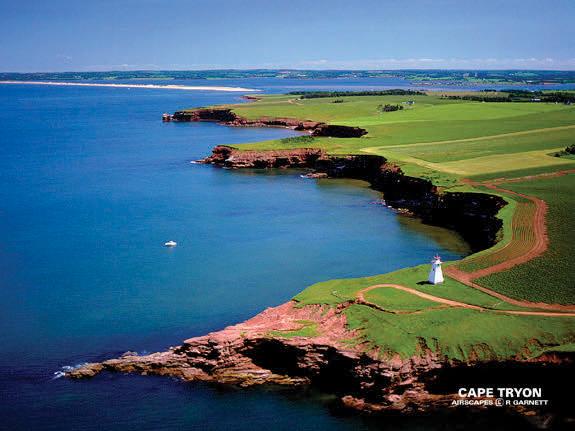

• Large lots have water views and deeded water access.
• Services include Central Water
• Under Ground Electrical
• Category 1 soil is Perc Tested and Surveyed

• Covenants for your Protection
• Ten Minute Drive to:
• North Rustico Canada Games Wellness Centre

• Golf
• Grocery shopping
• School & Churches
• Sandy Ocean Beaches
Lot prices $79,700.00 Cdn.
Why Move To PEI?
Friendly people, Flourishing Economy ie: Farming, Tourism, Aero Space, Fishing, plus Hundreds of Small Businesses. Excellent Hospitals & Medical Clinics. UPEI University & Veterinary Complex.

Contact John Brewer | 902 626 5262 | jbrewer@eastlink.ca
beachfrontages.ca
|
Swimming in the Stanley River.
A shop in North Rustico.
Kensington at the start of a section of the Island Walk.
63 PRINCE EDWARD ISLAND
STEVE SMITH, VISIONFIRE
the section. Simply continuing on, always getting a little closer to the end, helped me past the pain.

Several times, I experienced a strange sensation. After hours of walking, it seemed my legs were moving automatically, continuing as if they had a mind of their own. The sensation helped alleviate discomforts because I understood that those distant points in the road were places I would eventually be. It’s this kind of contemplation and acceptance of the journey I believe Guptill was talking about.


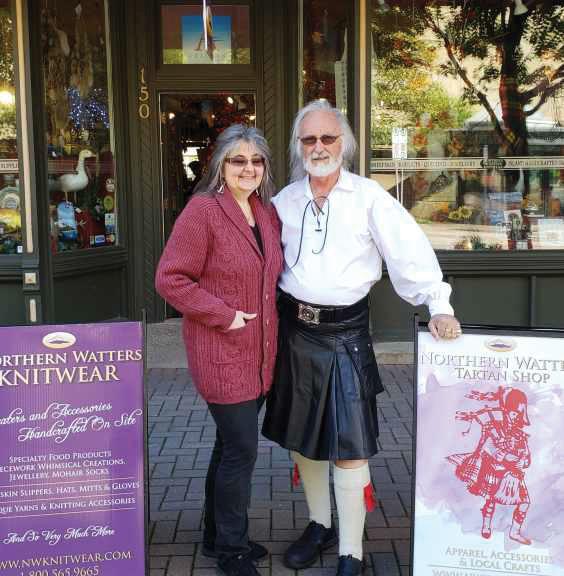


Guptill and I walked past long stretches
of lonely beach that day, eventually arriving at North Rustico. We found a table at the busy Blue Mussel Café for lunch. Just like on the Camino de Santiago in Spain, fellow walkers were fuelling on delicious local seafood like steaming bowls of mussels in white wine sauce.
P.E.I. is famous for its shellfish, particularly the mussels that live beneath those black buoys I spotted. I imagine pilgrims on the Island Walk following the symbol, not of a scallop shell, but of a blue mussel, marking the Camino as Canada’s pilgrimage and one of the world’s great walks.
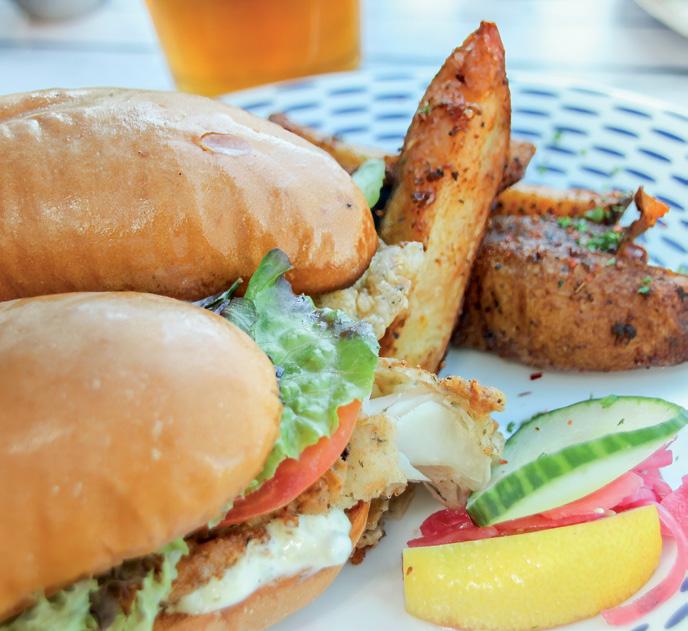


& tartan shop northern watters knitwear HOME OF THE 100% BRITISH WOOL SWEATERS & ACCESSORIES SHOWCASING OVER 250 ARTISTS & ARTISANS! FINEST CANADIAN CRAFTS - CAPES - POTTERY - YARN - BLANKETS MOHAIR SOCKS - PRESERVES - JEWELLERY - SHEEPSKIN SLIPPERS SCOTTISH & IRISH PRODUCTS - FIRST NATIONS ITEMS DEERSKIN PRODUCTS AND MUCH MORE NWKNITWEAR.COM - 1-800-565-9665 VICTORIA ROW 150 RICHMOND ST CHARLOTTETOWN, PE (902) 566-5850 HISTORIC PROPERTIES 1869 UPPER WATER ST HALIFAX, NS (902) 405-0488 PIER 20 1209 MARGINAL RD SUITE 115 HALIFAX, NS (902) 405-0488
64 PRINCE EDWARD ISLAND
Fish burgers for lunch at The Blue Mussel Cafe in North Rustico with Bryson Guptill.
The 32 Sections of The Island Walk
While the more experienced will want to complete the entire circuit, organizers encourage beginners to try a few sections at a time. Itineraries are available at theislandwalk.ca.
Waypoints/Distance/Locations
1–2, 24 km Dunedin to Victoria
2–3, 20 km Victoria to Borden-Carleton
3–4, 21 km Borden-Carleton to Summerside
4–5, 22 km Summerside to Wellington
5–6, 23 km Wellington to McNeil’s Mills
6–7, 23 km McNeil’s Mills to O’Leary
7–8, 19 km O’Leary to Miminegash
8–9, 20 km Miminegash to Christopher Cross
9–10, 20 km Christopher Cross to Anglo Tignish



10–11, 26 km Anglo Tignish to Alberton
11–12, 25 km Alberton to Portage

12–13, 20 km Portage to Northam
13–14, 21 km Northam to Miscouche
14–15, 22 km Miscouche to Kensington
15–16, 24 km Kensington to Bayview
16–17, 24 km Bayview to Cymbria
17–18, 21 km Cymbria to Dalvay
18–19, 23 km Dalvay to Mt. Stewart
19–20, 27 km Mt. Stewart to St. Peter’s
20–21, 23 km St. Peter’s to New Zealand
21–22, 21 km New Zealand to Elmira
22–23, 22 km Elmira to Bothwell
23–24, 21 km Bothwell to Souris
24–25, 20 km Souris to Howe Bay
25–26, 24 km Howe Bay to Cardigan
26–27, 12 km Cardigan to Montague
27–28, 21 km Montague to Gaspereaux
28–29, 20 km Gaspereaux to Murray River

29–30, 26 km Murray River to Surrey
30–31, 25 km Surrey to Lake Verde
31–32, 22 km Lake Verde to Charlottetown
32–1, 21 km Charlottetown to Dunedin
Entrance to the Confederation Trail
Montgomery home, New London
65
EDWARD ISLAND
Sheds and wharf at Inn at the Pier
PRINCE
Into the Washing Machine
Caving the Magdalen Islands
 STORY AND PHOTOGRAPHY BY DARCY RHYNO
STORY AND PHOTOGRAPHY BY DARCY RHYNO

The sensation of being pushed this way and that by waves from all sides is such fun, I find myself laughing aloud. I’m sloshing around inside “the Washing Machine,” bumping up against the red sandstone walls and ceiling worn smooth by centuries of waves. It has me feeling like a piece of laundry, and I understand the aptness of the name for this little sea cave on the coast of the Magdalen Islands.
Be assured, I’m in no danger. The thick wetsuit I’m wearing is keeping me warm and comfortable as I bob around effortlessly in the cool North Atlantic. I’m not alone, either. Two other adventures are beside me and
two young, competent guides are escorting us, one with us in the water and the other in a kayak just outside the washing machine.
The experience called “Caving the Cliffs” is one of many unusual and appealing activities offered by the truly imaginative Auberge la Salicorne, an inn at the northern end of the archipelago on Grand-Entrée. That’s about as remote as it’s possible to get on the Maggies. When the waves are extreme, adventurers here categorize caving the cliffs as “sportive” and only for the fearless. La Salicorne offers ways to ride the waves that are slightly less anxiety-inducing.
Excursions include gentle yoga sessions,
Gazebo at la Salicorne.
66 MAGDALEN ISLANDS
Guides and participants are all geared up to go caving at La Salicorne.
clam digs, nature reserves hikes and sublimely ridiculous activities like mud bathing. Down the hill from the inn, acres of red, slippery clay emerge with every low tide around Boudreau Island. The inn claims the properties of a clay bath “rejuvenates you by at least 10 years.” I suspect it’s as much the three-hour frolic in muck — the adult equivalent of childhood puddle stomping — that leads to youthful rejuvenation.
For a more conventional adventure, Salicorne and other companies guide visitors on kayaking excursions in these very waters, in and out of the Washing Machine and around other natural features. Hundreds of years ago, just off the nearby red cliffs of Old Harry, the the Indigenous people of the area and the visiting Europeans hunted walrus. Old Harry is a rugged arrowhead of bluffs at the southern end of the 8.5-kilometre Old Harry Beach on Sea Cow Bay, named for the walrus herds that once frequented here. Today, it’s on a list of the world’s top beaches, so named by National Geographic
For excursions at your own pace, rent a kayak, sailboard, stand up paddle board or laser sailboat from Centre nautique de l’Istorlet — one of several Magdalen outfitters — and take to the secure waters of “Le Bassin” off Havre-Aubert at the southern end of the archipelago.

Parc de Gros-Cap rents sea kayaks on Cap-aux-Meules, the central island. Horse lovers can sign up for guided, small group rides that loop across fields, through woods and onto the beaches, where the horses often wade into the waves.
For the super athletic visitor with a competitive bent, the wide, warm lagoons between the Maggies’ long beaches attract kite surfers from far and wide. The winds across the open Atlantic are nearly constant, but the waters of the enclosed lagoons are just as constantly calm. I spent one enjoyable afternoon, watching the kite surfers take flight, then bounce along over the shallow waters.
The best way to enjoy the sport is to connect on social media with Maggies Kitesurf, a non-profit organization dedicated to encouraging kite surfing on the islands. To learn the sport, sign up for lessons and tandem rides with an operator like Jasmin Bousquet’s Kite School, one of several island trainers. Alternatively, there’s also good surfing and swimming from the beaches on the ocean side of the lagoons. Because
several of the individual islands are linked by long, lonely beaches, finding a quiet spot for yourself is always easy.
If you’re up for a quick buzz around the islands to see them from the water, take a fast Zodiak tour with Excursions en Mer. Do some fishing, visit the sea caves, go wildlife watching or take a trip out to Entry Island, the only island not linked to the others by those gorgeous beaches.
For the ultimate outdoor Magdalen Islands adventure, you’ll want to visit in winter. That’s when seals arrive on the offshore ice flows to give birth to their pups. If the weather and winter ice cooperate, visitors can take a guided tour out to the ice floes to get a close-up look at those world-famous whitecoat seal pups.
Back at the Washing Machine, the Auberge la Salicorne guides eventually coax me out of the sea cave. I float along on my back beneath the cliffs in a wetsuit and lifejacket so buoyant, floating is effortless. The waves are rocking me with such an enjoyable rhythm, I could almost fall asleep. Above me, the cliff curves, rises and drops randomly, its contours shaped by millennia of waves and wind.
There’s something comforting about the way the Magdalen Islands are sculpted by natural forces. I close my eyes, feel the pulse of the ocean and listen to the waves, lapping and splashing against the sandstone walls. I give into these monumental forces of nature that are, at least for the moment, set like a washing machine on gentle.
Madelinot Pot-en-Pot
This seafood pie is a favourite in Restaurant madelinot at La Salicorne.
Serves 9
Ingredients
Pie shell
4 cups (1 L) flour
1 cup (250 mL) shortening
4 tsp (20 mL) baking soda
1 pinch of salt
1 cup (250 mL) water
Filling
2 cups (500 mL) cooked potatoes
1 lb (454 g) lobster meat
1 ½ lbs (681 g) of scallops
1 ½ lbs (681 g) quahogs
1⁄4 cup (50 mL) chopped celery
1⁄4 cup (50 mL) chopped green pepper
1⁄4 cup (50 mL) chopped red pepper
1⁄4 cup (50 mL) chopped onion
½ lb (227 g) butter
1 ½ cups (375 g) flour
1 cup (250 mL) milk
1 cup (250 mL) seafood juice
pinch of salted herbs or Provence herbs
Method
Mix the pie shell ingredients together. Roll half the dough with a rolling pin. Reserve the other half. Place the dough into a rectangular Pyrex 9- by 11-inch pie plate. In a pot, sauté the vegetables with the butter and flour. Let thicken for a few minutes and add the seafood juice with the milk until the mixture thickens. Put the seafood in the pie shell. Pour the sauce mixture over the seafood. Roll the second half of the dough and cover the mixture in the pie plate. Bake for 30 minutes at 350°F (180°C).
Kite surfing is a popular pastime on the Magdalen Islands.
67 MAGDALEN ISLANDS
From boar to bagoose
Bring your sense of culinary adventure to the Magdalen Islands
 STORY AND PHOTOGRAPHY BY DARCY RHYNO
STORY AND PHOTOGRAPHY BY DARCY RHYNO
Gilberte Aucoin pulls back a small door inside his big barn to reveal a litter of striped piglets. They’re the offspring of domestic hog moms and wild boar dads. Some piglets are curled up beneath heat lamps that bathe them and their straw beds in a pinkish glow. Others are feeding with their mothers.
“They nurse longer than other animals,” says Aucoin through a translator. All of those in the group touring Aucoin des Sangliers, the wild boar farm on Cap aux Meules in the Magdalen Islands, lets out a collective “Awww.”
Outside, a couple dozen full grown wild boars and sows romp around within the confines of a fenced pasture the size of a football field. They’re chomping hay, wriggling into mud baths, and chumming around with chickens. One large part of the pasture is fenced off for a couple of sows, each with a dozen white piglets in tow.
Aucoin poses proudly for photos with all his busy hogs. He wears an unbuttoned red plaid shirt with rolled sleeves over a faded T-shirt. A boar’s tooth dangles around his neck from a silver chain that matches his short-cropped, silver hair.

Following the farm tour, Aucoin leads us to his retail shop where we sample aged ham, mini pepperoni, paté, and other
delicious meats prepared from the wild boars he’s taken such care to raise.
Aucoin des Sangliers is an anomaly: one of the few food and drink producers on the Magdalens with no connection to the sea or to island traditions.
Known in French as Îles-de-la-Madeleine, Quebec’s Atlantic Canadian archipelago includes a dozen islands, seven inhabited. Long, narrow dunes link six of the islands, forming wide, shallow lagoons. First Nations hunters and fishers visited the islands seasonally for uncounted centuries, then about 500 years ago, European settlers arrived. Since then, Madelinots have made their living on the waves, hunting seal and
fishing for cod, herring and halibut. They planted gardens and orchards, and kept cows and chickens on small farms.
As I tour the archipelago in search of a distinct Madelinot cuisine, I discover that sea and farm heritage can be found pretty well everything beyond the wild boar farm.
La Boucherie Côte à Côte, a butcher shop on Cap-aux-Meules within sight of the terminal where the ferry from Prince Edward Island lands, specializes in seal, a food source hunted here for centuries. Proprietor Réjean Vigneau hunts the seal himself.
Beside packages of beef, pork, and chicken, plus sauces and delicacies from around the world, I find links of seal sausage.
68 MAGDALEN ISLANDS
Gilberte Aucoin, owner, Aucoin des Sangliers.
The label reads “products de loup-marin” or meats made from sea wolf, AKA seal. In the coolers and freezers, I discover pepperoni, burger, jerky, terrine, mousse, paté, stew, and another dozen dishes and preparations made with loup-marin
Vigneau’s seal meat is also on the menu at nearby Pizza d’la Pointe. A pie they call “Ti-Loup” boasts “loup-marin confit, confiture bacon and oignon, mandarine, Pied-de-vent” — “sea-wolf confit, bacon and onion confit, mandarin, and Feet-of-theWind.” I know them as seal comfit, bacon and onion jam, mandarin orange slices, and soft cheese from Fromagerie Pied-de-Vent.
Like Vigneau at Côte à Côte, the Arseneau family at le Fumoir d’antan put traditional foods to new uses. Smokehouses once flourished on the islands, preparing and preserving millions of pounds of herring each year. Workers built the first in Havre-aux-Maisons in 1870. A century later, all 40 of them closed due to overfishing. Salvagers dismantled most for lumber.
But in 1996, an ember sparked to life. The Arseneau family saved one of their smokehouses and started operating it again. Today, le Fumoir d’antan sells
smoked herring. However, given recent government restrictions on the herring fishery, it’s switched to smoked scallops, mackerel, salmon, and other delicacies. As human activity changes the oceans, so too evolves the seaside cuisine.

Up the road, I stop at Sylvie Langford’s Le Barbocheux and sample what the Madelinots refer to as “the beer of the islands.” It’s actually strong port-style wine, usually made from local berries. Another great place to whet your whistle À l’abri de la Tempête — it’s the islands’ only brewery, brewing actual beer, and it’s generally considered one of Eastern Canada’s better breweries.
On the same island, I stop for some of that cheese by Pied-de-Vent. Here, about 80 cows of the rare Canadienne breed, developed in Quebec 400 years ago, now enjoy provincial heritage status. The fromagerie is named for that wondrous, atmospheric phenomenon when the sun beams in rays through the clouds onto the grazing cows as if the sunshine is striding over the pasture and the bay beyond.
I drive south in search of the Magdalen’s other cheese maker, la Fromagerie Les
Biquettes à l’Air. It’s at Bassin on the southern tip of the most southerly island, l’Ile-du-Havre-Aubert. There, I find Éric Longpré in the barnyard, just up from the beach where he likes to walk his small herd of about 30 goats.

“We offer tours,” says Longpré. “We take small groups and go for an hour walk over the hill to the beach. With 30 goats, it’s quite a trip.”
After greeting a few of his idiosyncratic charges at his barn, I follow him into his small shop where I find delicious, fresh cheese preparations, some flavoured with foraged sea parsley or dune peppers.

I discover more of these traditional ingredients at my final stop, Gourmande de Nature. Johanne Vigneau and her team forage and prepare wild island ingredients that would be at home in the fine food section of any grocer: comfits, coulis, chutneys, cocktail mixes, aromatic sugars, and salts.
My backpack heavy with cheeses, flavoured salts, boar, and bagoose, it’s time to catch the ferry back to P.E.I. On board, I make my way to the stern, lean on the railing and gaze west, back to the islands where the pied-de-vent dance across the water in the setting sun.
Cranberry Pie
This recipe for an unexpected berry pie is a popular dessert in the restaurant at La Salicorne on the Magdalene Islands.
Ingredients
1 uncooked pie shell
3 cups (750 mL) cranberries
1 ½ cups (375 mL) white sugar
1 tsp (5 mL) cinnamon
5 tbsp (25 mL) cornstarch
¼ cup (62 mL) water
Method
Place the uncooked pie shell in a pie plate. Cook the cranberries, water, sugar and cinnamon in a pot for about 10 minutes at low temperature. Add the cornstarch to a little water. Add to the mixture. Pour the mixture into the pie shell and cover with another pie shell. Bake at for 30 minutes at 375°F (190°C). Serve with English cream or ice cream.
Left: Cheeses at Fromagerie Pied-de-Vent; right: Éric Longpré, owner of la Fromagerie Les Biquettes à l’Air with some of his goats.
69 MAGDALEN ISLANDS
Herring in the smokehouse at Fumoir d’Anton
Since 2020, Subaru Canada, CAA Atlantic and the region’s leading tourism partners have o ered Atlantic Canadians an annual (and very popular) staycation photo and short story sharing contest.



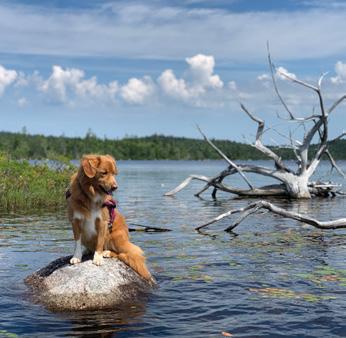
It has helped us all pause and reflect on things we may take for granted in this beautiful region, and how staying and buying local is the greatest gift we can give our east coast neighbours!
This year’s Subaru Staycation Contest is o cially open from now to October 31, 2023!
You too could win a brand new Subaru 2 year lease like our 2022 Subaru Staycation winner.
GRAND PRIZE WINNER
Whether it’s a city cultural and culinary getaway with your sweetie, a relaxing and remote cottage rendezvous, rediscovering a great annual festival, a long overdue party with friends and family, or going for a beach hike at a trail you’ve always wanted to visit…
It’s time to Staycation 2023 and make every adventure well worth the drive! (#eastcoaststaycation)
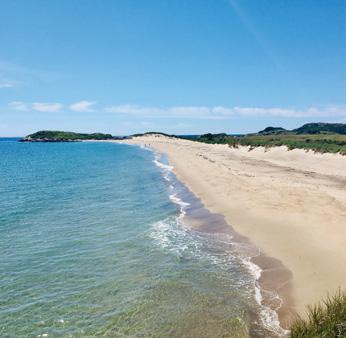
All you need to do to enter this exciting contest is to share a favourite photo and a few short lines about the image in one of four great categories!

The sooner you enter the greater your chances of winning a bi-weekly draw of a CAA annual membership!



Have a safe and happy 2023, The Saltscapes team

Splish splash at the beach Fabulous festival fun All fore for nature
Visit saltscapes.com for details Food, glorious food (and drink)
4 great categories
Matt Wilne , GM, Steele Subaru, Halifax contest winner, Peggy Dominie, and Darren Blinn, Subaru Canada Atlantic manager.
SUBARU & SALTSCAPES
Join us in the 2023 Subaru Canada Staycation Contest in partnership with CAA Atlantic.
A Walk on the North Shore Brackley Beach, PEI
Contest STAYCATION
STAYCATION CONTEST Winning Photos and Stories

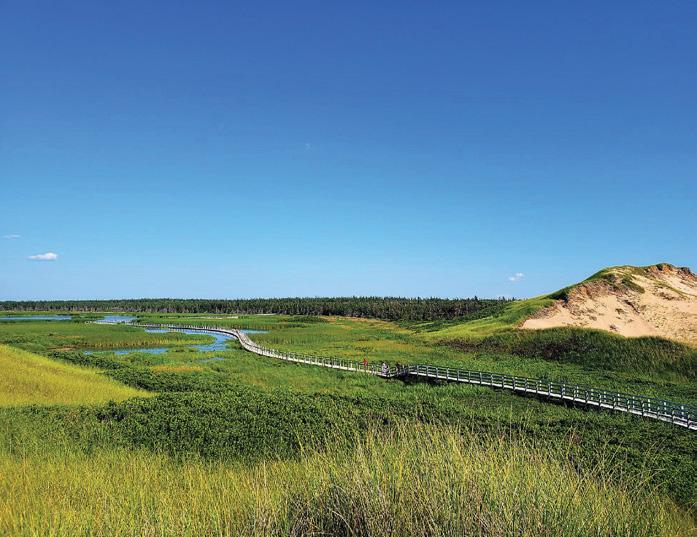















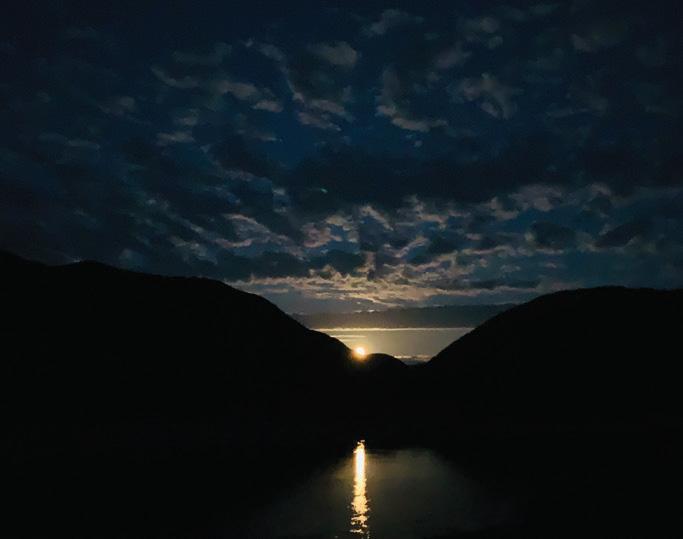












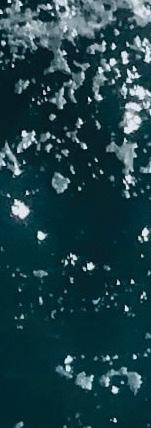







2022 SUBARU & SALTSCAPES
Toller on the Rock by Derek Burnett Gaetz Brook, NS
Sussex Balloon Festival 2022 by Patrick Neal Fall River, NS
West Coast meets East Coast by Karen Thibeault Rexton, NB
Sandbanks Provincial Park by Kimberley Keats St. John’s, NL
Supermoon rising over Polletts Cove by Coralie Cameron Scotsville, NS
Dreamy Dunes by Christine Summers Bedford, NS
Other people’s gardens
Inspire your green thumb by visiting great public and private gardens
 BY JODI DELONG
BY JODI DELONG
The only thing we gardening enthusiasts love more than our own gardens are what I fondly call “OPGs” or Other People’s Gardens: publicly accessible gardens around our region, some offering free admission, others open with a modest fee. From the lauded Halifax Public Gardens to the sprawling and splendid Memorial University Botanical Gardens in St. John’s, there are plenty of horticultural temptations out there. While not exhaustive, this list will tempt you to visit and learn about additional, perhaps more-hidden garden gems. Pack up your sunscreen and a beverage (or plan a picnic or meal onsite) and check these out.
New Brunswick
Kingsbrae Garden
220 King St., Saint Andrews, N.B. 866-566-8687, 506-529-3335, kingsbraegarden.com
If you’ve never visited this 11-hectare privately founded jewel in the heart of St. Andrews by-the-Sea, you are missing out on a fabulous experience. More than 50,000
plants of horticultural interest, spread out across separate garden areas or “rooms.”
A Gravel Garden, Children’s Garden, and Scents and Sensitivity Garden (for those with visual and mobile challenges), among many others, dazzle visitors. There’s also a permanent sculpture garden as well as an excellent café, gift shop and art gallery.

New Brunswick Botanical Garden
15 boulevard Isidore-Boucher, Edmundston, N.B. 506-737-4444
info@jardinNBgarden.com, jardinnbgarden.com
Open from late May to late September (check website for opening hours and admission prices.)
It’s been 30 years since this iconic and expanding public garden opened in one of the cooler regions in Atlantic Canada, not far from the New Brunswick/Quebec border. It boasts many dedicated garden areas, including for perennials, rhododendrons, alpines, roses, a potager (vegetable) garden and hiking trails. Wander through the gardens at your leisure and finish off with a picnic or a meal in the Café Flora.
Nova Scotia
Annapolis Royal Historic Gardens
441 St. George St., Annapolis Royal, N.S. 902-532-7018
marketing@historicgardens.com
TOURISM NEW BRUNSWICK/HEMMINGS HOUSE
New Brunswick Botanical Garden.
72 ATLANTIC PROVINCES
Pieces of the former Berlin Wall provide a startling accent in the Pollinator Garden at Dalhousie Agricultural Campus, Bible Hill, N.S.
historicgardens.wordpress.com
Open year-round — no admission fee in winter.
The gardens in Annapolis Royal are well described as seven hectares of paradise, and trace trends in gardening for more than 400 years of history. Constantly evolving, garden highlights include the native plant plots, the Acadian cottage and potager, the rose garden with hundreds of different cultivars, and the innovative garden which experiments with new ideas in crop production. A remarkable gift shop stocked with many local artisans, and a summer-open café, are two more reasons to spend a day in the gardens, which are also within easy walking distance of the main shopping and dining core of the town.
Halifax Public Gardens
Spring Garden Road and Summer Street, Halifax, N.S. 902-456-4552
halifaxpublicgardens.ca
Open year-round, 8 a.m. to dusk. Free admission.
Right in the heart of downtown Halifax is the jewel of the city: six-plus hectares of the Victorian-style public gardens. Founded in 1867 by the efforts of Nova Scotia politician Joe Howe, the gardens boast hundreds of shade trees, formal perennial and annual beds, a coffee shop in the Horticultural Hall, and elegant statuary and water features throughout the property. Check the website for FAQs. Jogging, cycling, and pets aren’t permitted.
Dalhousie Ag Campus Rock Garden and Alumni Gardens

Rock Garden Road, Bible Hill, N.S. dal.ca/about-dal/agricultural-campus/ about/gardens/alumni-gardens.html. Open year-round, weather permitting.
The former Nova Scotia Agricultural College became part of Dalhousie University 11 years ago, and the gardens throughout the campus have benefited greatly as a result. There are three main areas to visit: the Rock Garden, featuring many choice and unusual plants; the Alumni Garden, built on the site of a former research nursery at the campus; and the Butterfly Meadow, a 0.2-hectare site near the campus farm where plants are encouraged to grow freely
and attract pollinators such as native bees and butterflies. Of unique interest in the Meadow are six free-standing panels that were once part of the Berlin Wall.
Harriet Irving Botanical Gardens
32 University Ave., Wolfville, N.S. botanicalgardens@acadiau.ca kcirvingcentre.acadiau.ca/harriet -irving-botanical-gardens
Open dawn to dusk, weather permitting. Free admission.
Another must-see attraction in the Wolfville area, the gardens are part of the KC Irving Environmental Science Centre at Acadia University. Here, you’ll learn more about the plants of the Acadian Forest Region with its many complex growing zones, and see many choice plants including yellow ladyslippers. There’s a yearly Native Plant Sale (June 3 in 2023) and research greenhouses and conservatory inside the centre. Always worth a visit.
Tangled Garden
11827 Nova Scotia Trunk 1, Grand Pré, N.S. tangledgarden.ca
902-542-9811
tangledgardenherbs@gmail.com
Shop is open year-round, gardens are closed in winter. Hours vary, check website.
More than 30 years ago, Beverly McClare began her dream of creating a garden and a thriving business selling preserves made with her own herbs. The award-winning business is a popular destination for visitors and locals alike. Wander through the glorious tangle of perennials, annuals, trees and shrubs, walk the labyrinth, sample goodies in the preserve shop, or enjoy a plein-air picnic featuring afternoon tea and homemade treats made on site.
Prince Edward Island
MacPhail Woods Ecological Forestry Project
269 MacPhail Park Rd., Vernon Bridge, P.E.I. 902-651-2575, macphailwoods@gmail.com macphailwoods.org
You won’t find tidy perennial beds of exotic flora in this wonderful place — instead, you’ll
discover hundreds of native P.E.I. plant species, with a teaching area, arboretum, hiking trails, and a native plant nursery and greenhouse. Since 1991, the charity works to protect natural areas throughout P.E.I. and to promote sustainable forest management along with restoration of the Wabanaki-Acadian forest. The project offers courses and camps throughout the year, with a special focus on day camps for children to encourage their interest in the natural world.
AA MacDonald Memorial Gardens
36 Kent St., Georgetown P.E.I.
Billed as P.E.I.’s largest municipal garden and named after Georgetown’s own “father of confederation,” the free admission, 1.5-hectare site consists of 60 beds and some 15,000 annual flowering plants, plus hundreds of perennials. There’s a recently installed pond with lighted fountain. The gardens are within walking distance of numerous local attractions.
The Dunes Gallery, Gardens and Café
3622 Brackley Point Rd., Rte. 15, Brackley Beach, P.E.I. facebook.com/TheDunesStudioGallery 902-672-2586
dunesstudiogallery@gmail.com
A favourite stopping place for lovers of local and other art, including pottery and jewelry, as well as stunning gardens with water features and sculptures, and a terrific café. Reopening in May 2023 for its 40th season.
JIAYU SU
JODI DELONG
73 ATLANTIC PROVINCES
The Dunes.
Newfoundland and Labrador

NL Stone Gardens
35 Trans-Canada Highway, Pynns Brook, N.L. 709-660-2050


info@nlflagstone.com


About 15 kilometres from Deer Lake is the community of Pynn’s Brook, and the two-hectare marvel known as NL Stone Gardens. Richly planted with native and non-native trees and shrubs, accented with stone paths, walls and other rocky delights, this privately owned garden is an ideal site for birding enthusiasts, as well as fossil hunters. Group or self-guiding tours are available; admission is by donation. Open from late May until December.
Memorial University Botanical Garden

306 Mount Scio Rd., St. John’s, N.L. 709-864-8590

mun.ca/botanicalgarden garden@mun.ca
I confess to a bias towards this, the formerly named Oxen Pond Botanical Garden. I was living in St. John’s when it began in the early 1970s, and saw it grow in its earlier years. The garden is a wonder, which has expanded steadily since its founding, and features a dazzling number of speciality plantings and garden areas. The regular season, with varying hours, runs from early May to early November, and the Merry and Bright Holiday Light Festival is a popular Christmas event.
St. Mary’s Botanical Garden
173 Main St., Cow Head, N.L. 709-243 2830, nbrown11@hotmail.ca facebook.com/profile.
php?id=100057525365976

Just minutes from Gros Morne National Park is the charming community of Cow Head and its community botanical garden. Established in 2001, this compact and delightful garden features three vegetable beds and no less than 40 flower beds. Never believe that plants cannot thrive by the sea. Open from May 1 to November 30. Admission by donation.
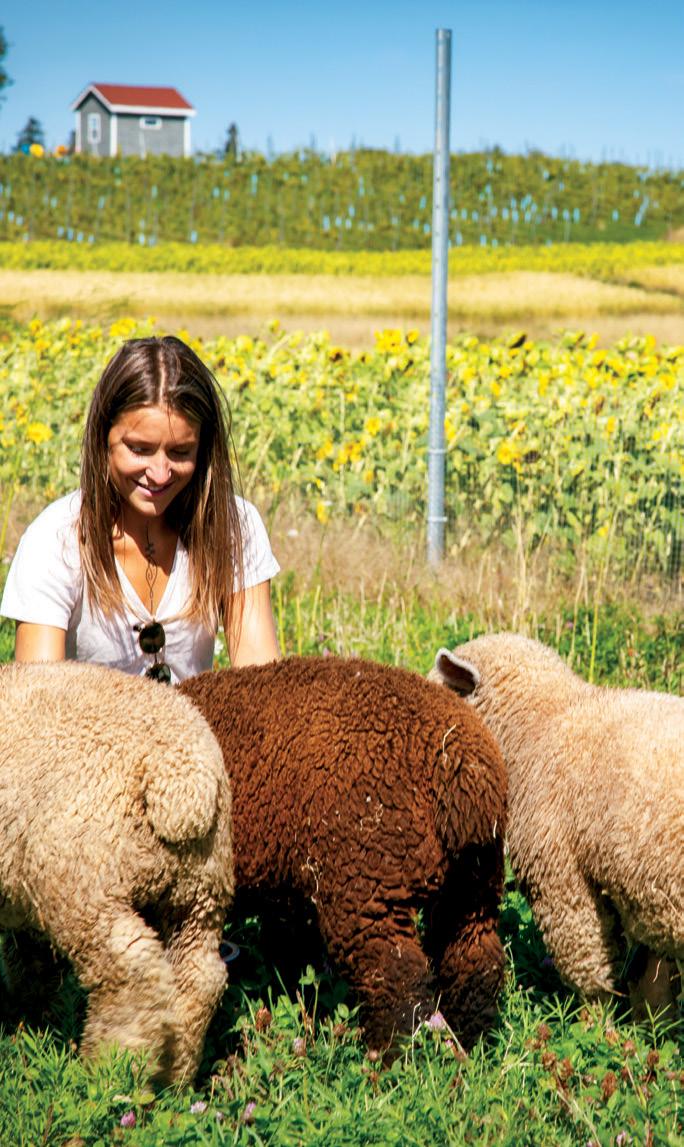
YOUR ON-THE-GO GUIDE TO CANADA’S EAST COAST YOUR ON-THE-GO GUIDE TO CANADA’S EAST COAST YOUR ON-THE-GO GUIDE TO CANADA’S EAST COAS right to your door. Subscribe 1.877.885.6344 • saltscapes.com OFFER CODE: SSAD2023-SS
VALIDUNTIL DECEMBER31ST,2023 Coupon A D M I S S I O N $1.00 OFF TERMS & CONDITIONS Limited to one coupon per customer Cannot be comb ned with any other offer Can only be used on single admissions Coupon is subject to review by gift shop administrator Coupon must be presented at time of arrival before payment is made GENERAL ADMISSION 74 ATLANTIC PROVINCES
BIGSTOCK/ROMIRI
WHERE MARITIME MEMORIES ARE MADE


With seven locations in Prince Edward Island, New Brunswick and Nova Scotia, experience Maritime hospitality at its finest at a Rodd hotel or resort this season!
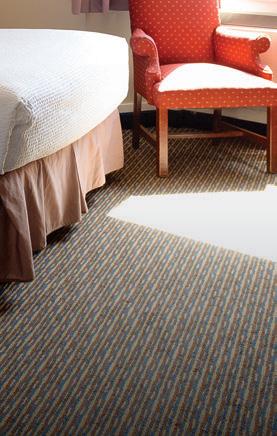
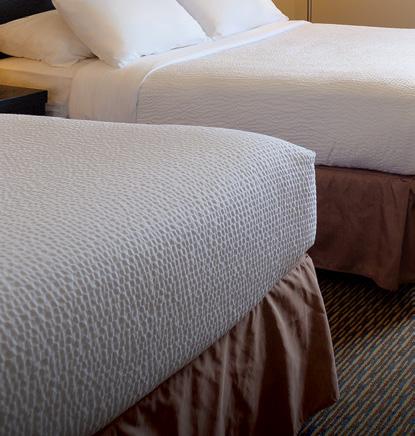
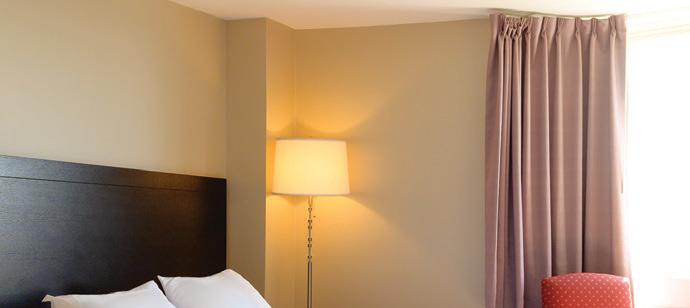


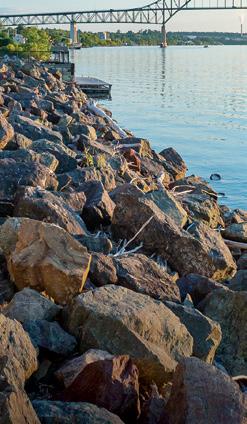
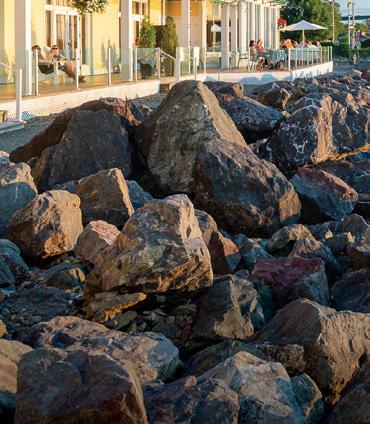






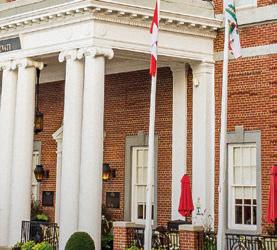


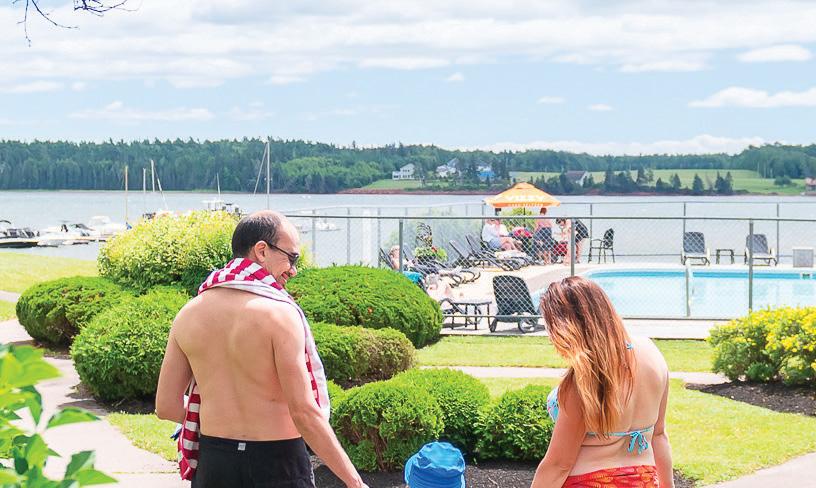

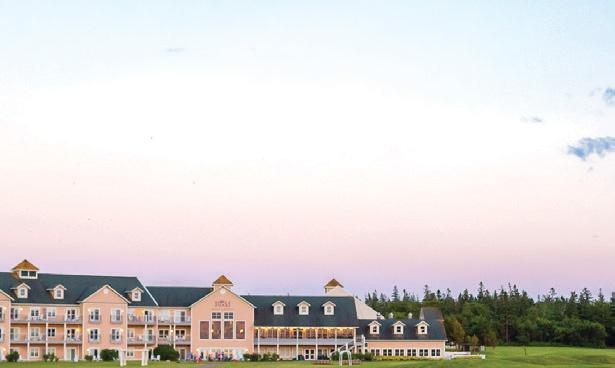



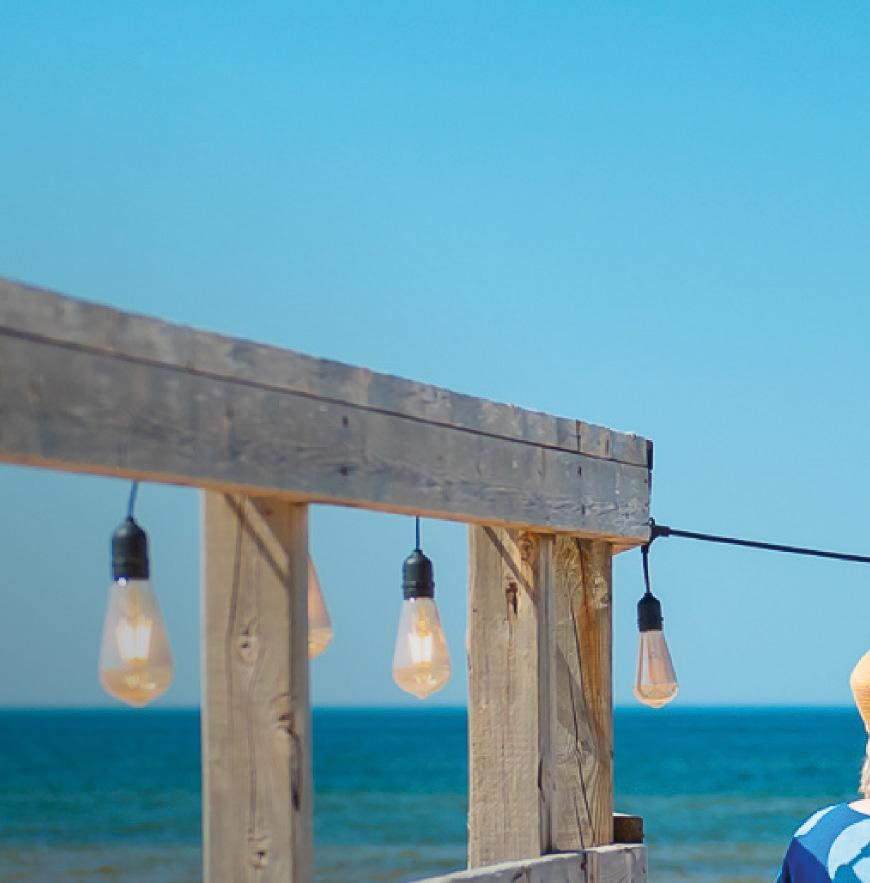
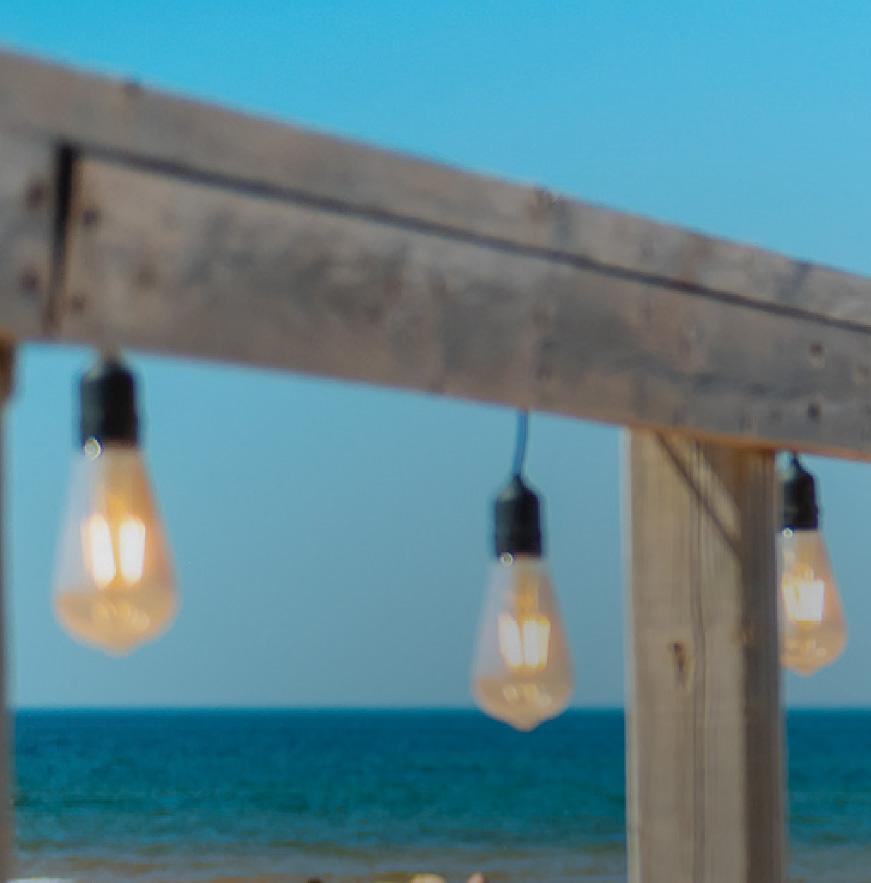
To discover our seven locations across the Maritimes, visit roddvacations.com roddvacations +1 (800) 565-7633
RODD CROWBUSH GOLF & BEACH RESORT
RODD MIRAMICHI RIVER
RODD GRAND YARMOUTH RODD MONCTON RODD ROYALTY
RODD BRUDENELL RIVER RESORT
RODD CHARLOTTETOWN
Young, talented and hungry
Atlantic Canada’s up-and-coming chefs
STORY
AND
PHOTOGRAPHY BY JOHN AND SANDRA NOWLAN
Veteran celebrity chefs like Michael Smith in Prince Edward Island and Michael Howell in Nova Scotia have raised the bar on creative Atlantic Canadian cuisine. Outstanding seafood has long been this region’s hallmark — now it’s also become a reliable destination for fresh, innovative, and high-quality dining.
A key reason for this resurgence and recognition is a group of talented and creative young chefs that make their home in the Atlantic provinces. They’re receiving national recognition as future stars on the culinary scene. Diners in this region will be superbly served.
NEW BRUNSWICK
Saint John — with its British, French, and Irish roots, joined in recent years by sizable Asian and Middle East populations — is now New Brunswick’s culinary capital.

With 13 microbreweries, cideries, and distilleries in the city, plus cuisine ranging from elevated pub food to high-end Italian and Thai, former Top Chef and Wall of Chefs judge Jesse Vergen says the culinary revolution started about 15 years ago. His harbourside Saint John Ale House launched the career of Hampton, N.B., native Keith Broome, the owner and executive chef of VEGolution, Tripadvisor’s top restaurant recommendation in Saint John and in all New Brunswick.
VEGolution is entirely vegetarian and vegan. Broome took the leap of faith to open his restaurant five years ago.
“I’ve wanted to be a chef since I was 16 years old,” he says. “We did polling on social media and discovered that a vegetarian
menu could work here. Jesse Vergen encouraged me but said the food had to taste great and look great as well.”
It did. The Germain Street restaurant now has 4,000 followers on Facebook and dozens of enthusiastic local patrons who show up weekly. COVID-19 was tough on business but customers still came and Broome and his staff produced DIY food packages for home delivery.
As part of his former sous-chef duties at the Saint John Ale House, Broome prepared meat dishes but he knew it was a steppingstone to his vegan dream. “I just disassociated when I was doing it,” he recalls. Now, at VEGolution, he makes everything from scratch in-house. In the spring and summer, he forages for mushrooms and berries.
As omnivores, we were skeptical about eating at a vegan restaurant but the meal was a surprise. The Korean Sticky Soy Bits were superb, beautifully presented, and tasted just like pork in a sweet sauce. Chef
Broome’s Revolution Cheeseburger (patty made from brown rice, mushrooms, and walnuts) and vegan donair (made with onion, tomato, lettuce, cashew sauce, and house-made roti) are among his most popular offerings. The wine comes from Nova Scotia and the beer is all brewed in Saint John.
Thanks to the success of VEGolution, many restaurants in Saint John now offer more vegetarian dishes. But Broome, a creative chef with unlimited potential for growth, still runs the only game in town for the authentic, all-vegetarian/vegan product.

NOVA SCOTIA
Halifax has been known for its fine dining for many years, but the Eastern Shore has lacked a restaurant that offered imaginative, creative dishes from local sources. That’s changed with Chef Kim MacPherson running the kitchen at Lupin
 Chef Keith Broome (in his Jim Carrey pose) in the kitchen at VEGolution, Saint John.
Chef Keith Broome (in his Jim Carrey pose) in the kitchen at VEGolution, Saint John.
76 ATLANTIC PROVINCES
VEGolution on Germain Street in Saint John, New Brunswick.
Dining and Pantry. This rural restaurant, a 40-minute drive from Halifax near Musquodoboit Harbour, is the culmination of MacPherson’s dream to open her own farm-to-table eatery.
MacPherson attended culinary school in Niagara-on-the-Lake, Ontario, and has worked in restaurants across Canada. When she and her husband visited Nova Scotia on a road trip she fell in love with the Eastern Shore and found a 16-hectare property on West Petpeswick Road with a house and lots of room for gardens. The farm-to-table dream became a reality and Lupin was born.
MacPherson loves French and Italian cooking but describes her technique as “classic dishes with local influence and modern techniques.” She has a small, continually changing menu, 80 per cent coming from her own garden. “We’re trying to showcase the best that Nova Scotia has to offer,” she says.
In addition to her own vegetables, fruits, and herbs, she has strong connections with local farmers, fishers, and butchers, offering a five-course chef’s tasting menu each evening, in addition to the à la carte items.


The tasting menu includes creative dishes like smoked mackerel dip, mushroom wellington, beef canneloni, and poached pear. A favourite main course is a halibut and smoked salmon combo.
MacPherson gambled by opening a restaurant in an area under-served by fine dining establishments. But it’s paid off with strong bookings and happy customers. The future looks bright.
PRINCE EDWARD ISLAND
A decommissioned church in rural New London is the seasonal home of one of the most extraordinary dining experiences on P.E.I. The Table Culinary Studio is unique with its creative, single-sitting, seven-course menu each evening.
Hunter Guindon, a 2015 graduate of the Culinary Institute of Canada in Charlottetown, is executive chef. He and owner Derrick Hoar are proud that all ingredients come from within a 15-minute drive of the restaurant. (The only exception is black pepper. Instead of lemons and limes, he adds zing with rhubarb juice). Every week, he offers a new menu.
Guindon got his start as sous chef at Michael Smith’s iconic Inn at Bay Fortune. He then worked in British Columbia and
KOREAN STICKY SOY BITS
These slightly crispy soy nuggets in a complex tangy sauce make a tantalizing appetizer. Soya wadi is textured vegetable protein often referred to as vegetarian meat because of its meaty flavour and texture. Tamari is Japanese soy sauce, less salty and slightly thicker than the Chinese variety.

Soy bits:
1 cup (250 mL) soy balls (soya wadi)
4 cups (1 L) vegetable stock oil
Korean sticky sauce:
¾ cup (175 mL) brown sugar
½ cup (125 mL) tamari
1 tbsp (15 mL) rice wine vinegar
1 tbsp (15 mL) chilli paste (Korean gochujang)
1 tsp (5 mL) sesame oil
1 tsp (5 mL) fresh ginger
6 garlic cloves, crushed
2 tbsp (30mL) maple syrup
1/8 tsp (1 mL) pepper
2 tsp (10 mL) cornstarch
1 tbsp (15 mL) water
Method
Rehydrate soy balls (soya wadi) by bringing them to a low simmer for 5 minutes. Drain well, then saute in a pan with oil until well browned.
In a small saucepan combine brown sugar, tamari, rice wine vinegar, chilli paste, sesame oil, ginger, garlic, maple syrup and pepper. Place over medium heat and stir until mixture comes to a simmer.
In a small dish mix together cornstarch and water and stir into the simmering sauce. Simmer and stir for a few minutes until sauce thickens. Cool slightly and blend until smooth in a food processor or blender.
Add desired amount of sauce to soya balls in the hot pan then plate.
Garnish with toasted sesame seeds and chives.
Chef Kim MacPherson in her garden at Lupin.
77 ATLANTIC PROVINCES
Chef Kim MacPherson of Lupin Dining and Pantry, near Musquodoboit Harbour.
Ontario before returning to P.E.I. in pursuit of “real, local, sustainable cooking,” he says. “We write our menus backwards. We scour the local area for the best ingredients, lay them out, and write the menu based on what we find. My goal is to never cook the same dish twice.”
Freshness is vital. The oysters for are harvested in a nearby bay within an hour of preparation.
The Table holds a maximum of 24 guests each evening. When we visited, we enjoyed creative dishes like Kentucky-fried oysters, braised beef shoulder with ox tail jus, and a remarkable scallop raviolo covered with smoked pork and lobster roe cream.
The dishes highlight Guindon’s talent and passion. “My duty is to show our guests why the hard work of our farmers, fishers, (and) culinary artisans … is so incredibly special,” he says on the restaurant’s website.
NEWFOUNDLAND AND LABRADOR
Last year, Celesta Mah —named by Canada’s 100 Best magazine as Canada’s Best Pastry Chef in 2019 — and her husband Ross Larkin, a Top Chef winner in 2018, opened a new restaurant called Portage on the ground floor of Luxus, a boutique hotel in downtown St. John’s.


Mah grew up in Vancouver, the granddaughter of a chef in Chinatown. Her mother was an inspired home cook and instilled a love of cuisine. She went to culinary school in British Columbia and worked as a pastry chef in some of Vancouver’s top restaurants. There, she met and married
Ross, a Newfoundlander keen to return to the East Coast. They eventually both got jobs at Raymonds in St. John’s, considered the finest restaurant in the province.
When Raymonds closed in 2021 because of the COVID-19 pandemic, Mah decided to fulfill her lifelong dream to open her own restaurant. She and Larkin acquired a former lounge/café, turned it into a casual upscale restaurant, and put her food philosophy into practice.
Portage is now a 70-seat, open-kitchen restaurant, championing Asian culture and family-style eating. Every dish on the menu serves two to four people with sharing encouraged. Mah focuses on Newfoundland vegetables: beets, carrots, rutabaga, parsnips, and cabbage.
“We want people to know there’s a great variety of vegetables grown here,” she says. A farm, less than a 15-minute drive away, provides all her needs. Without a walk-in freezer, she uses fresh meat and seafood for protein dishes.

Mah emphasizes creativity with simplicity. Technique, textures, and temperature are key.
Also important is a healthy lifestyle for her hard-working cooks and cleanup crew. Portage is open five days a week, but the three fulltime cooks (plus one half-time) only work four days each. “It’s very important to us that people who work for us and guests who come to the restaurant feel they’re being cared for,” she says. “You’ll never know everything and you’re always learning. Every day we know we can get better. And we’re doing that.”
Chef Hunter Guindon at The Table Culinary Studio in New London, P.E.I.
Chef Celeste Mah in her St. John’s, N.L. restaurant.
ROSS LARKIN
78 ATLANTIC PROVINCES
The interior of The Table Culinary Studio.
High forces
Dramatic waterfalls of the East Coast
BY DARCY RHYNO
Athin stream shoots over a rock ledge high over the narrow end of Western Brook Pond. Launching from the plateau 343 metres above, the drop is so long, half the water sifts into a billion droplets, then into a mist that drifts away with the wind. The other half slaps against a wedge of mountain, then tumbles down a 45-degree slope to the lake. It’s no wonder some creative observer of this most unusual phenomenon came up with the colourful name Pissing Mare Falls.

Although Western Brook Pond is a fresh-water lake today, millennia ago it was a fjord connected to the sea. The best, and perhaps the only, way to see the falls in Western Newfoundland’s Gros Morne National Park is to follow the boardwalk from the parking lot across a bog to the water’s edge. There, catch the tour boat across the lake to where the land shoots upwards in steep cliffs that level off to towering tabletop mountains. The streams that spill over their edges lend to the feeling of a time long past, as if a Viking ship might appear, plying the waters through the mist.
This is just one of a hundred or so waterfalls on Canada’s East Coast. From the thundering, high force in the centre of town in Grand Falls, N.B. to the long tumbles hidden deep in Nova Scotia’s Cape Breton Highlands, you’ll find waterfalls in many locations. Some are so massive, they are the sites of major hydroelectric stations. Others are higher than Niagara Falls.
WIKIPEDIA/ D. GORDON E. ROBERTSON 79 ATLANTIC PROVINCES
Pissing Mare Falls, Western Brook Pond, N.L.
WATERFALLS ACROSS THE REGION
To download the app for the Cape Breton Water Fall Season, go to cbisland.com/vacation-ideas/ waterfall-season
To buy guides to waterfalls of New Brunswick and of Nova Scotia, head to a local bookseller: gooselane.com/ products/waterfalls-of-nova-scotia gooselane.com/products/waterfallsof-new-brunswick-a-guide-2ndedition

Fast flowing streams fling themselves from mountaintops in Newfoundland and pour over sudden drops in the vast landscape of Labrador. Some form when rivers slip over smooth stones into deep pools. Others bounce down bedrock ledges, slicing into half a dozen ribbons before tumbling away in white water rapids. Still others drop straight into the ocean.
Guidebooks and phone apps help in the quest to find the best. A challenge such as the Cape Breton Waterfall Season contest comes with its own rewards. In late spring when water levels are highest, those in search of falls at their most active can download the app and scan the QR code at a dozen sites around the island to qualify for a prize.

My favourite among the dozen on the app is Mary Ann Falls inside Cape Breton Highlands National Park. In summer, when campers and explorers are looking for relief from the heat, park visitors drive or cycle the six-kilometre gravel road from the Broad Cove Campground to swim in the refreshing pool beneath the falls. The bravest leap from the rocks into the river below where the water is deepest. Families with children
wade into the shallows and perch on rocks to soak their feet and sip cool drinks.
In another national park, another favourite hides in one of the region’s moodiest settings. Deep within the forests of New Brunswick’s Fundy National Park, Dickson Falls splashes off the rocks of a mossy ravine, sending out clouds of mist that drenches every tree, rock and plant, constantly watering the mosses that keep
everything covered in a lush, verdant green. Stairs lead through the thick woods down into the green ravine, crisscrossing the stream as it tumbles over shorter drops in the landscape. The boardwalk ends at a lookout with a close-up view of the falls. Standing here with the mist on your face is a highlight of a visit to Fundy National Park. Perhaps New Brunswick’s most picturesque high force is Falls Brook Falls, just off the

FIND
Dickson Falls ravine, Fundy National Park, N.B.
80 ATLANTIC PROVINCES
Baker’s Brook Falls, Gros Morne National Park, N.L.
upper reaches of the mighty Miramichi River near Boistown in the centre of the province. Through a narrow opening, the brook drops 33 metres down the rockface, bumping off a series of little ledges, rippling the veil that drops into the deep pool it has carved from the bedrock. It’s a fantastic place for a swim and for an awe-inspiring view up one of the highest falls in the province.


On the way back to the dock at Western Brook Pond, the tour boat captain pulls in close to a second waterfall. This one drops from a shorter height, but it’s even more photogenic. The stream follows a deep canyon of nearly vertical walls. Where it reaches the precipice, a boulder jammed at its mouth divides the stream in two. One rivulet drops straight down the rockface. The other, heavier flow works itself around the boulder, bouncing off a couple of ledges. The two rejoin as one veil, splashing into the lake, perhaps 20 metres below.
Waterfalls of the East Coast are as variable as the seasons, from raging runoffs in the spring to gentle trickles in the dry summer season. Autumn revives the water



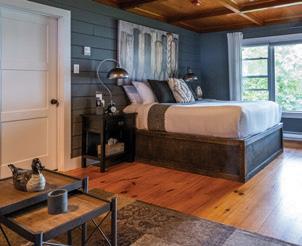










levels once again and frames some falls in colourful clouds of leaves. In winter, some are draped in sheets of ice and the trees around them shimmer in frozen mist.
Whatever the season, waterfalls are always a clash of elements. Gros Morne’s ancient tabletop mountains are cleft by the relentless flow of water that shapes and animates the landscape. It’s a scene repeated in endless variety across Canada’s East Coast.
Visit pictou2023.com for a full event calendar. OVER 100 cultural events throughout 2023 A history shared. A future together.
81 ATLANTIC PROVINCES
Baxters Harbour Falls, N.S.

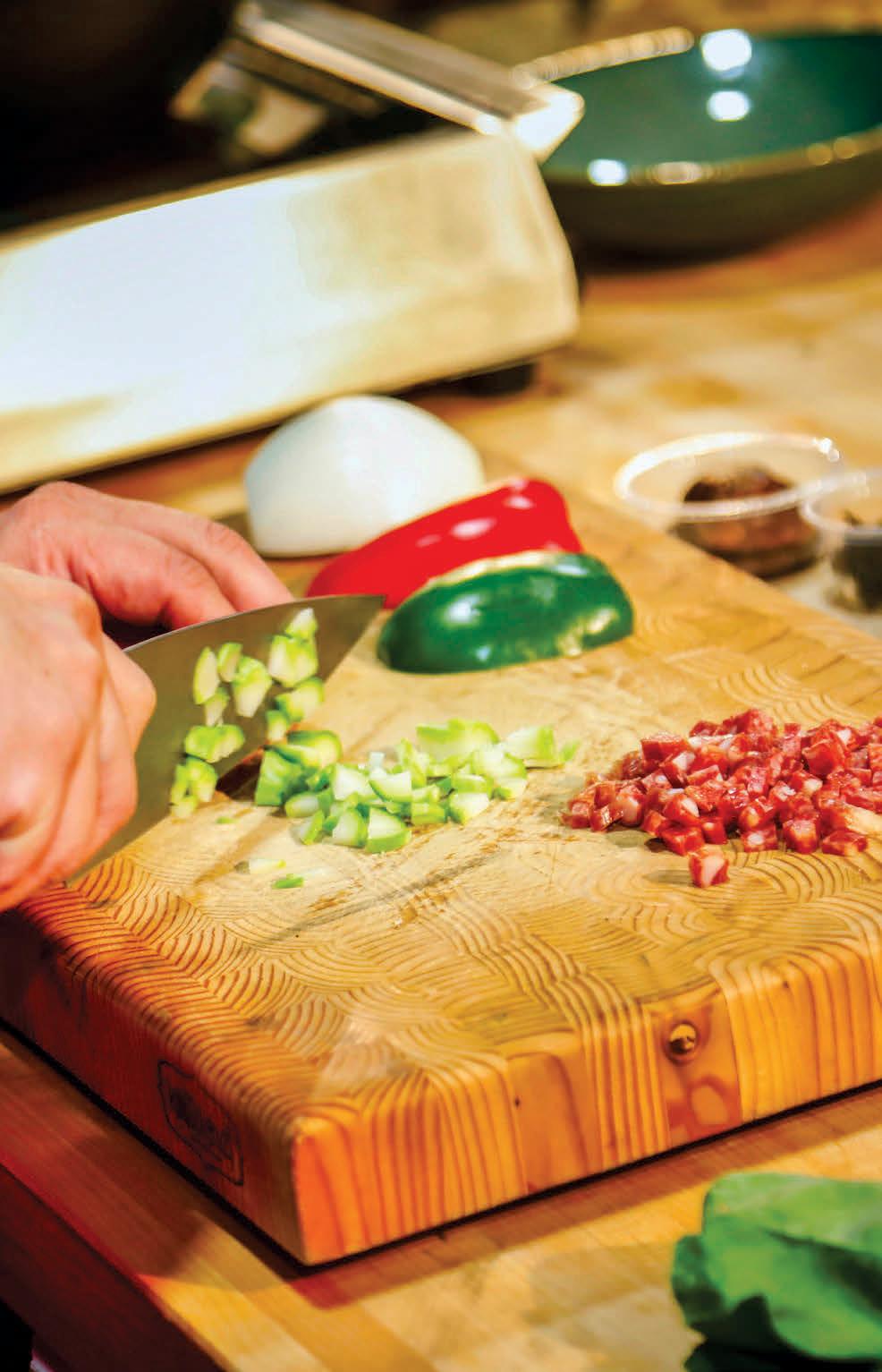

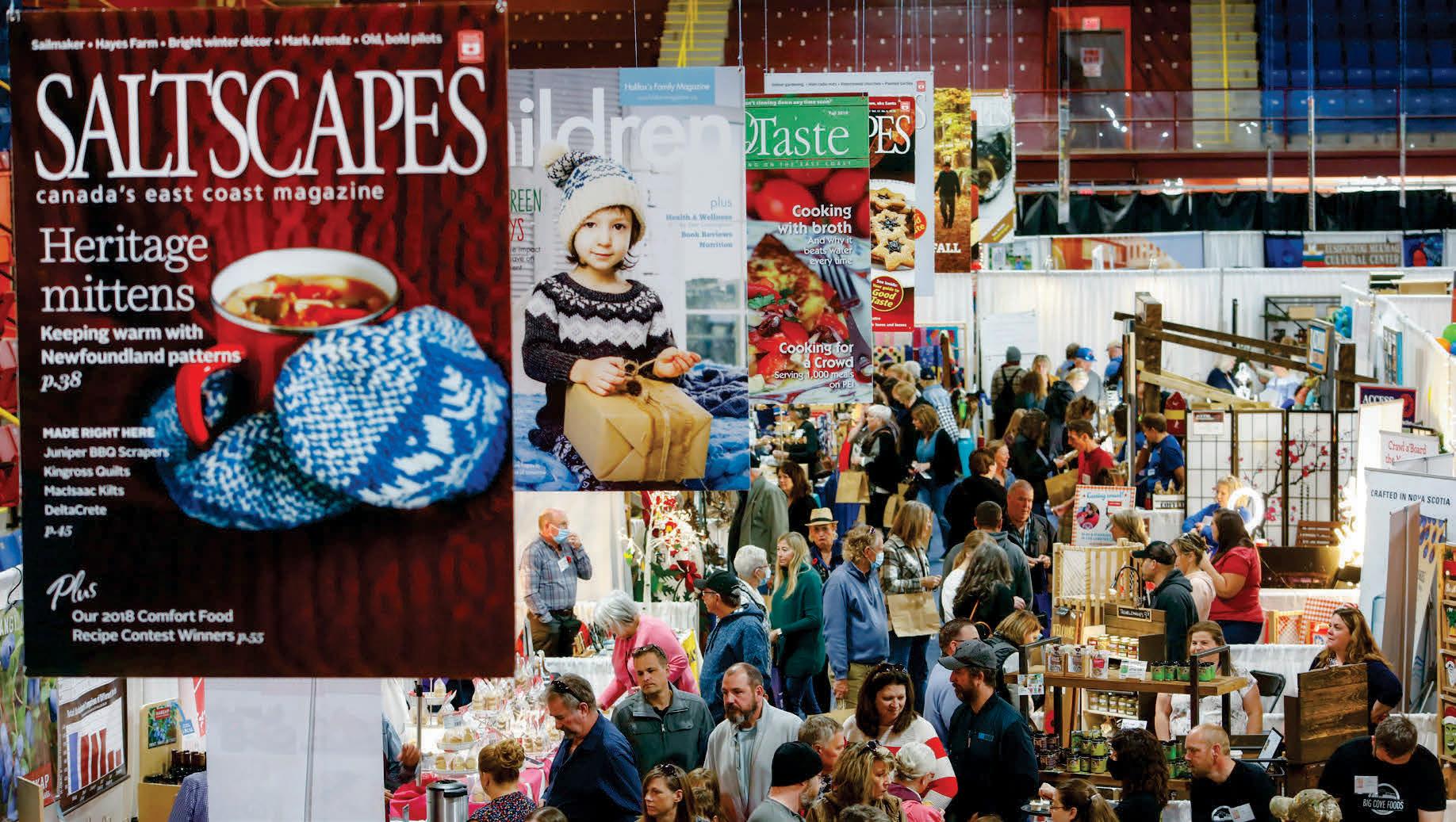
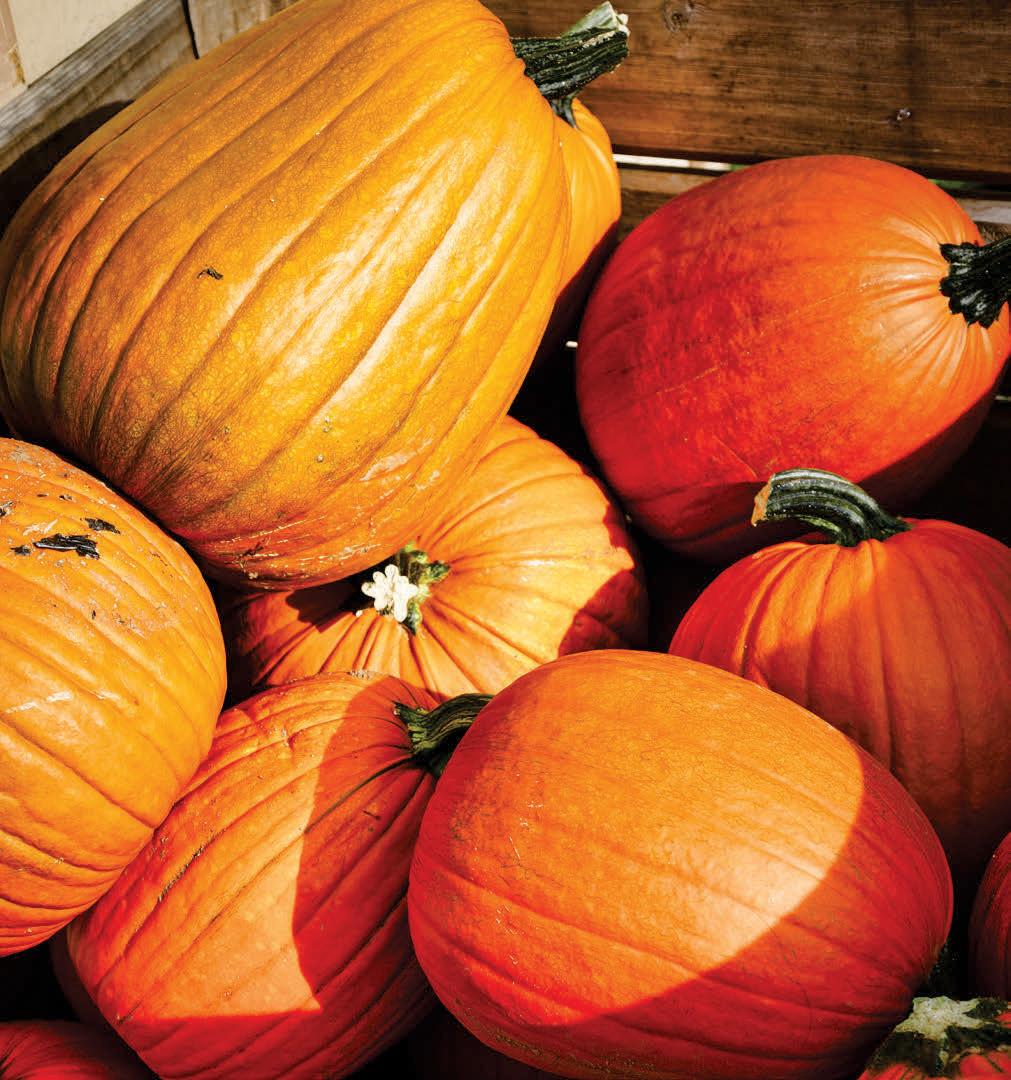
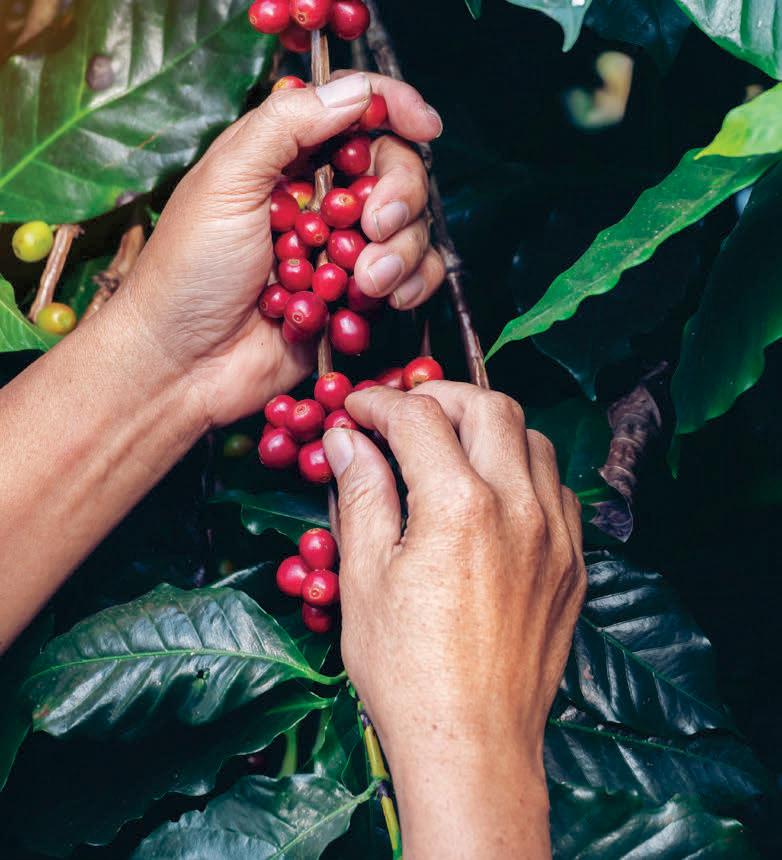
23 Follow us on For more information, contact Lisa: lsampson@saltscapes.com 902.464.7258 ext.1803 saltscapes.com Early vendor registration opens May 1 October 27-29 HALIFAX EXHIBITION CENTRE
Harvest Greets the Holidays


Join us at Atlantic Canada's ultimate buy local show
October 27-29, 2023

Halifax Exhibition Centre
If you think handmade and homespun are the key ingredients for a magical holiday, don't miss Saltscapes Fall East Coast Expo: Harvest Greets the Holidays! Filled with festive eats, drinks and farm-to-table inspiration, this jam-packed three day event won’t disappoint.

Keep your money where your heart is and meet the makers and business owners face-toface. Shop handcrafters, artisan retailers and local small businesses, while listening to festive live entertainment, sampling delicious food and beverage and experience live interactive demonstrations. Tickets go on sale Monday, May 1, 2023.

Scan to purchase tickets.
Great golf games
Enjoy good courses without breaking the bank
BY DALE DUNLOP
Atlantic Canada is blessed with some of the best golf courses in the country including three in the top ten according to the prestigious Score Golf Top 100 Courses in Canada rankings. Each of the four Atlantic provinces has at least one course in the top 100 and these courses are a major tourism draw.

Due to their prestige and demand, these courses charge substantial green fees, which puts them out of reach for many golfers. They can also be intimidating to play for the average golfer. But there are plenty of alternatives for golfers who just want to enjoy a game without breaking the bank. Here are two in each province, emphasizing courses where there are many things for visitors to do in addition to golfing.
Nova Scotia
Digby Pines. Stanley Thompson is considered the doyen of Canadian golf
architecture and his Highlands Links course in Cape Breton is number eight in Canada according to ScoreGolf magazine’s annual ranking of the top 100 courses in the country. However, his work at Digby Pines is an overlooked gem. High above the Annapolis Basin it is a rolling layout known for its ingenious par three holes. The course is part of the venerable Digby Pines Resort complex, which is undergoing a complete refurbishment including course improvements. digbypines.ca
Bluenose Golf Club, Lunenburg. A round of golf does not necessarily need to involve playing 18 holes. There are many fine nine-hole Atlantic Canadian courses,


of which the Bluenose club is one of the most interesting. You enter between two upright cannons and find a layout on the side of a hill that directly faces the UNESCO World Heritage Site of historic Lunenburg. You can often see the iconic Bluenose II schooner cruising the harbour as you tee off. It’s not a long or intimidating course — perfect for golfers of all ages and abilities. bluenosegolfclub.com
Prince Edward Island Green Gables Golf Course, Cavendish. This is another Stanley Thompson project that features a combination of the natural beauty of the Cavendish dunes area and the historical connection with Lucy Maud Montgomery’s Anne of Green Gables. The
TOURISM NOVA SCOTIA/ACORN ART & PHOTOGRAPHY
BROGAN BAILEY
Bluenose Golf Course, Lunenburg, N.S.
UNSPLASH/SOHEB ZAIDI AWIN
Digby Pines Golf Course.
84 ATLANTIC PROVINCES
Green Gables house, a re-creation of the eponymous home, is visible from many spots on the course, which also plays through fiction-brought-to-life sites like the Haunted Woods and Lake of Shining Waters. There are many fine golf courses on P.E.I. but none have the pedigree of Green Gables. greengablesgolf.com
Brudenell River Golf Course, Georgetown Royalty. There are two golf courses at Rodd Brudenell River Resort. Dundarave

is the more highly rated but its older sister Brudenell River is more fun for most people. This 18-hole layout along the shores of the Brudenell River is among the province’s most scenic golf courses. It features an unusual combination of six par threes, six par fives and six par fours. Few will forget the tenth hole’s challenging shot over the water, with trouble on all sides. Landing on the green merits high fives all around. roddvacations.com/golf/brudenell-rivergolf-course/
New Brunswick
Fundy National Park Golf Course., Alma. Stanley Thompson again comes to the fore with this course in Fundy National Park. Although it is only a nine-hole layout, each hole has two sets of tees that play differently, making an 18-hole round viable. With a laid-back atmosphere, it’s a perfect place for a family golf outing, along with the many other things to do in the park. Huge changes in elevation make this course unforgettable, starting with the drive on the
 PATRICK KOENIG
PATRICK KOENIG
TOURISM NEW BRUNSWICK/ KIMOTHY STEWART 85 ATLANTIC PROVINCES
Top: Green Gables Golf Course, Cavendish P.E.I. Bottom: Herring Cove Golf Course, Campobello Island, N.B.
2023 Play and Stay Packages























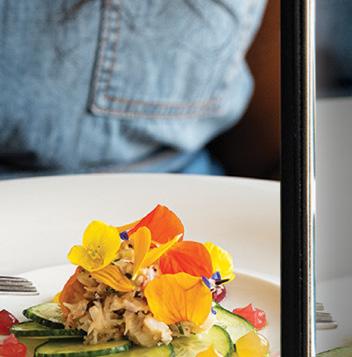




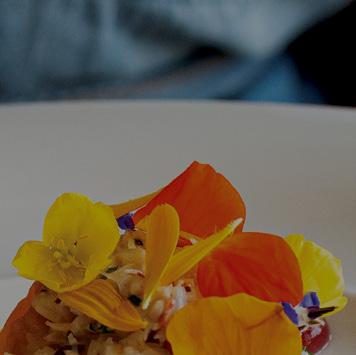


first tee to a fairway over 20 yards below. At 240 yards, the fifteenth hole is Atlantic Canada’s hardest par three; most play it as a par four. parks.canada.ca/pn-np/nb/ fundy/activ/golf
Herring Cove Golf Course, Campobello Island. Most know Campobello Island for its association with President Franklin Roosevelt, whose massive summer cottage still draws tourists from around the world. But there are also a lot of outdoor activities on the island, especially at Herring Cove Provincial Park, which includes an enjoyable nine-hole golf course. It features views of the Bay of Fundy and Herring Cove Beach from several holes, plus from the clubhouse. It also boasts one of the best clubhouse restaurants in Atlantic Canada. herringcovegolf.ca
Newfoundland & Labrador











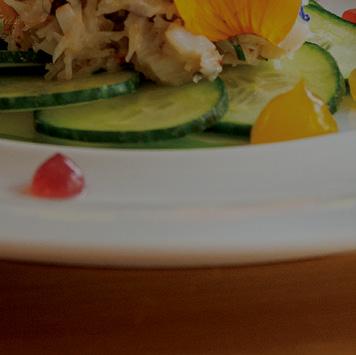



Pippy Park, St. John’s. This is one of Canada’s largest municipal parks, with kilometres of hiking trails and a large campground, plus the Confederation Building and Memorial University. It also has two golf courses that will appeal to a range of golfers.



Renowned Canadian golf architect Graham Cooke designed the Admiral’s Green, a championship-quality course to test any golfer.

















The nine-hole Captain’s Hill is more for families and beginning golfers, and worth playing just for the fabulous views of St. John’s and the Avalon coastline. These may be the only golf courses in North America from where you can watch icebergs go by as you tee it up. pippypark.com/what-to-do/golfing

MOBILE APP
Two Night Stay, Three rounds golf with a car Sunday to Wednesday Pricing starting at Pricing starting at 1 person @ $355 2 People @ $330 per person 3 people @ $310 per person 4 or more @ $290 per person Thursday to Saturday 1 Person @ $375 2 people @ $355 per person 3 People @ $340 per person 4 or more @ $325 per person Phone: 902-275-4956 Sdowling@homburg.com
TOURISM NEW BRUNSWICK/KIMOTHY STEWART
86 ATLANTIC PROVINCES
Herring Cove Golf Course, N.B.
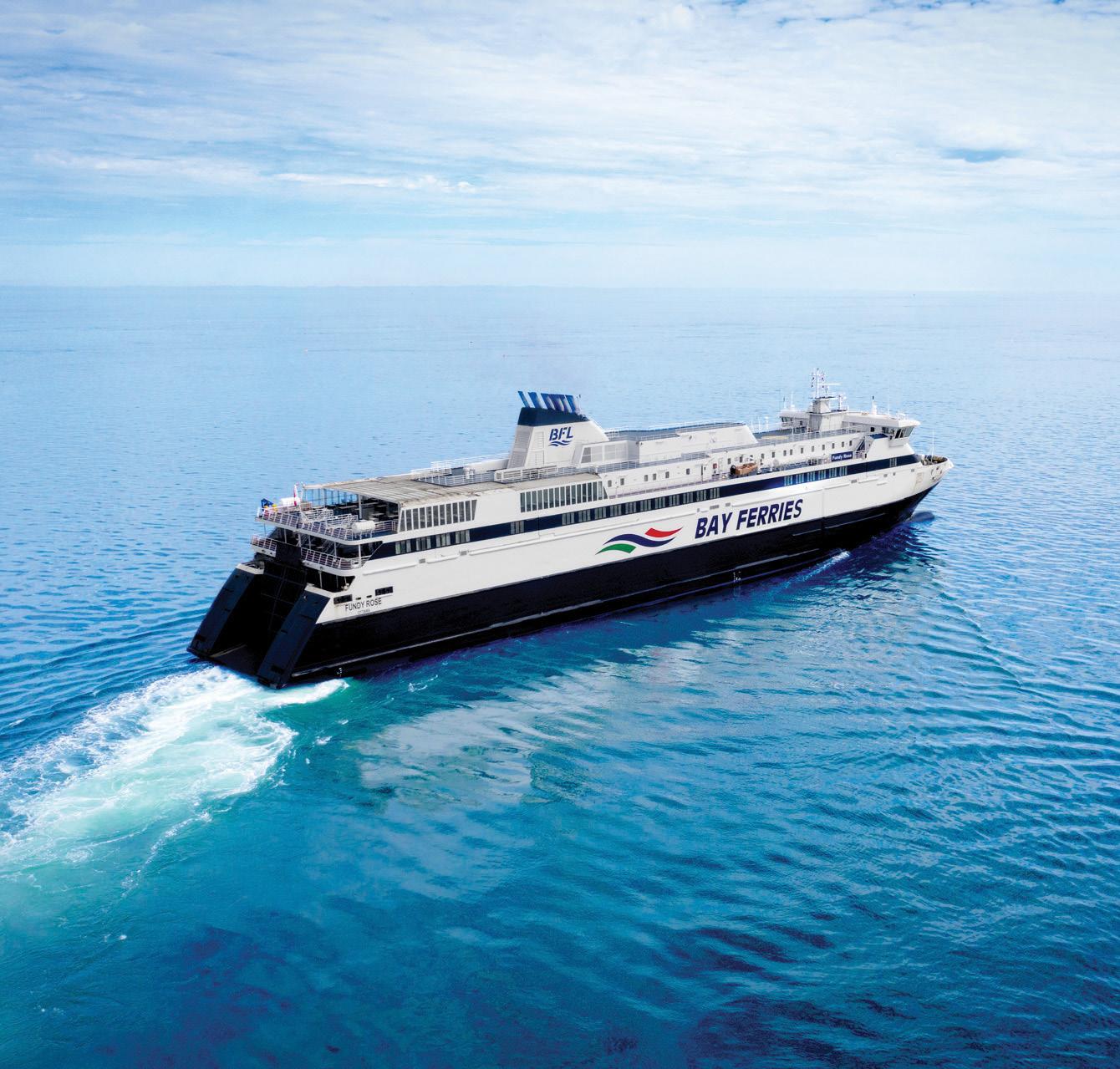




Ferries.ca PRINCE EDWARD ISLAND - NOVA SCOTIA NEW BRUNSWICK - NOVA SCOTIA MAINE - NOVA SCOTIA
10 Reasons to travel by ferry in 2023

From sea views to saved time, Bay Ferries and Northumberland Ferries offers great fun for all
Are you looking for a unique and memorable way to explore the stunning coastlines and charming villages throughout Atlantic Canada and Maine? Choose your next ferry crossing and take the “sea-nic” route to your destination with Bay Ferries and Northumberland Ferries.
Take a Break from Driving
Say so long to the worries of the road, and let us handle the driving while you take a break! A ferry ride is a perfect opportunity to relax and recharge before getting back on the road, allowing you to spend more time with your family. In addition to the incomparable views, taking the ferry gives you a chance to get out and stretch your legs while enjoying this one-of-a-kind experience that’ll have you forgetting about “are we there yet!?”
Get There Faster
Not only will you experience views and ocean breezes on the ferry that you can’t duplicate on the highway, but you’ll also arrive at
your destination faster. Whether you take a ferry voyage across the Bay of Fundy between Digby, Nova Scotia, and Saint John, New Brunswick, in less than half the time it takes to travel by car, or you hop aboard The CAT for a high-speed journey between Bar Harbor, Maine, and Yarmouth, Nova Scotia, an unforgettable journey paired with more time to take in the sights at your destination is the perfect combination for your next adventure.
Soak in Stunning Sea Views
Discover the Atlantic Coast from a different perspective, with views you can’t get from a car window. From the red sandstone cliffs of Prince Edward Island and the never-ending coastline of Nova Scotia to the picturesque waterways of Maine, there’s no shortage of breathtaking scenery to discover.
Fun for the Whole Family
Aboard the ferry, you can spend time watching for seals, birds, and even porpoises from our viewing decks. There’s simply
88 ADVERTISING FEATURE
Watch for marine wildlife, enjoy local live music and take in the scenery on board our ferries.


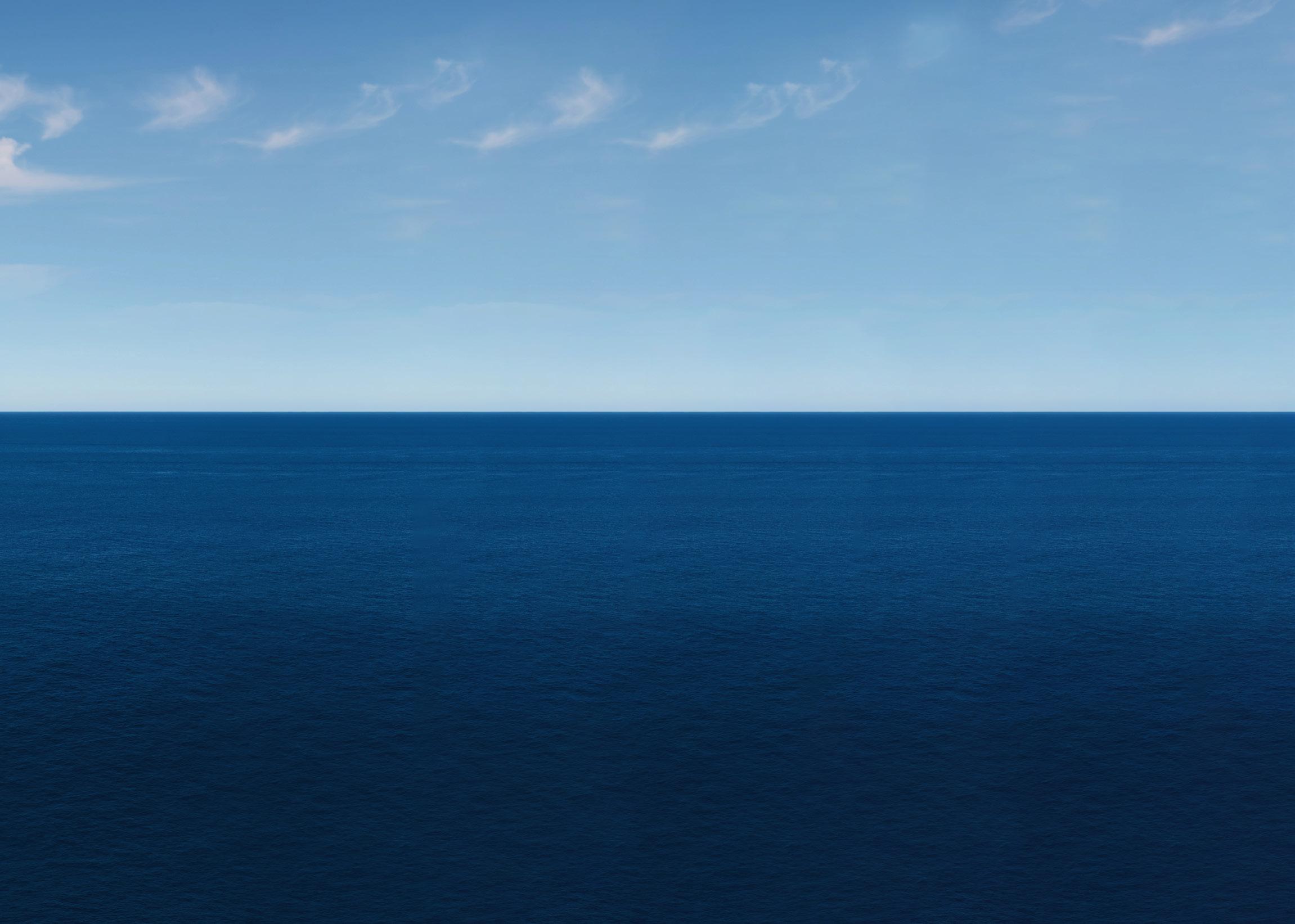
no comparison between a trip in the car and a relaxing ferry voyage with Bay Ferries and Northumberland Ferries. We have introduced a brand new way for your family to enjoy the ferry, learn more about the Maritimes, and have a chance to win a prize with our Sailor’s Scavenger Hunt


Listen to Local Live Music
Picture yourself on the water with your family, enjoying a bite to eat while a local artist serenades you with songs from the Maritimes. Enjoy our music programs that feature a variety of artists showcasing their talents during select crossings throughout the summer. We guarantee you will have a toe-tapping good time.

Bring Home a Piece of the Maritimes
Our onboard gift shops have you covered for authentic souvenirs with a selection of locally made crafts, accessories, and music. Be sure to stop by to find that perfect memento to remember your East Coast vacation.
89 ADVERTISING FEATURE
Picture yourself on the water with your family, enjoying a bite to eat while a local artist serenades you with songs from the Maritimes
Fuel Up on Food & Drink
Our ferries offer a variety of onboard dining options for every craving so you can fuel up before the next leg of your journey. On your next voyage, enjoy tried-and-true favourites like the popular Islander Breakfast available on our PEI – Nova Scotia route, Digby scallops on the Bay of Fundy route, in addition to sandwiches, snacks, hot beverages, or cold, refreshing beverages.

Experience Maritime Hospitality
The Maritimes are known for warm and welcoming hospitality, and the Bay Ferries and Northumberland Ferries staff and crew are no exception to this! From our reservation agents who help plan your trip to those on board who are eager to welcome you, our staff and crew are there every step of the way to ensure that your trip is smooth sailing from port to port.
Kick Back in Comfort
Say goodbye to cramped cars and say hello to comfortable spaces to kick back and relax while somebody else handles the driving. Grab a bite to eat, find a cozy seat, or scope out a secluded spot on the open-air deck to unwind with the sea breeze. Your onboard experience offers many comforts and family-friendly activities, like daily movies on the Bay Ferries routes or a board game on The CAT.
Leave Nothing Behind
Nobody wants the added stress of fitting everything into a carry-on bag or paying extra to check your luggage. When travelling with your vehicle, ferry travel affords the convenience of packing whatever you need to make the most out of your vacation, for example, a suitcase jammed full of your favourite items, or a kayak strapped onto the roof rack.
Your Ferry Adventure is Calling
Between the ocean breeze, the colours of the coastline and the adventures awaiting you on either side, a trip with Bay Ferries and Northumberland Ferries is one you’ll want to take again. Feeling inspired to sail with us? Visit www.ferries.ca to view our routes and schedules and start planning the ferry best adventure.

90 ADVERTISING FEATURE
The Island is filled with wandering trails, endless beaches and over 400 fairways, culinary delights and not to miss festivals and events.
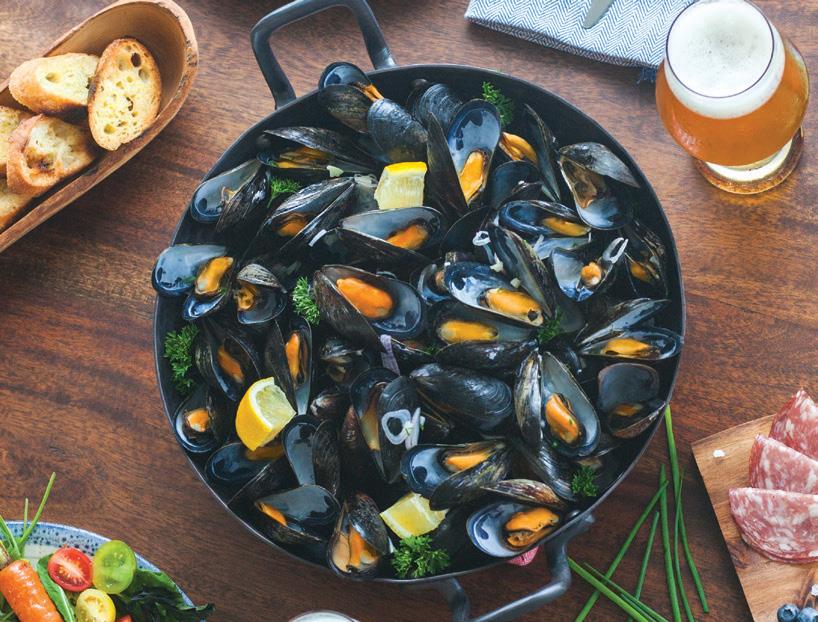
Which will you explore first?
Come Find Your Island, Prince Edward Island.


Book your Prince Edward Island vacation today at ExplorePEI.com





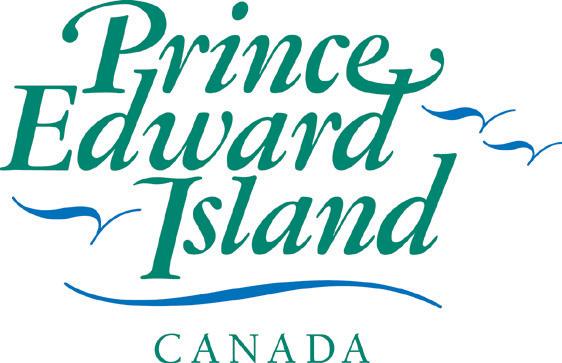

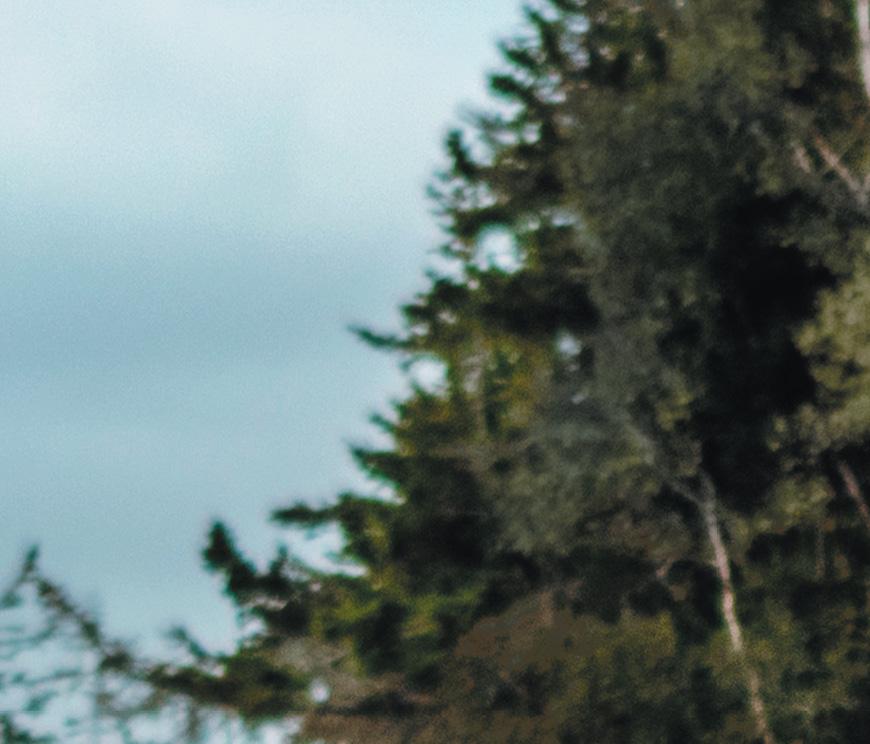



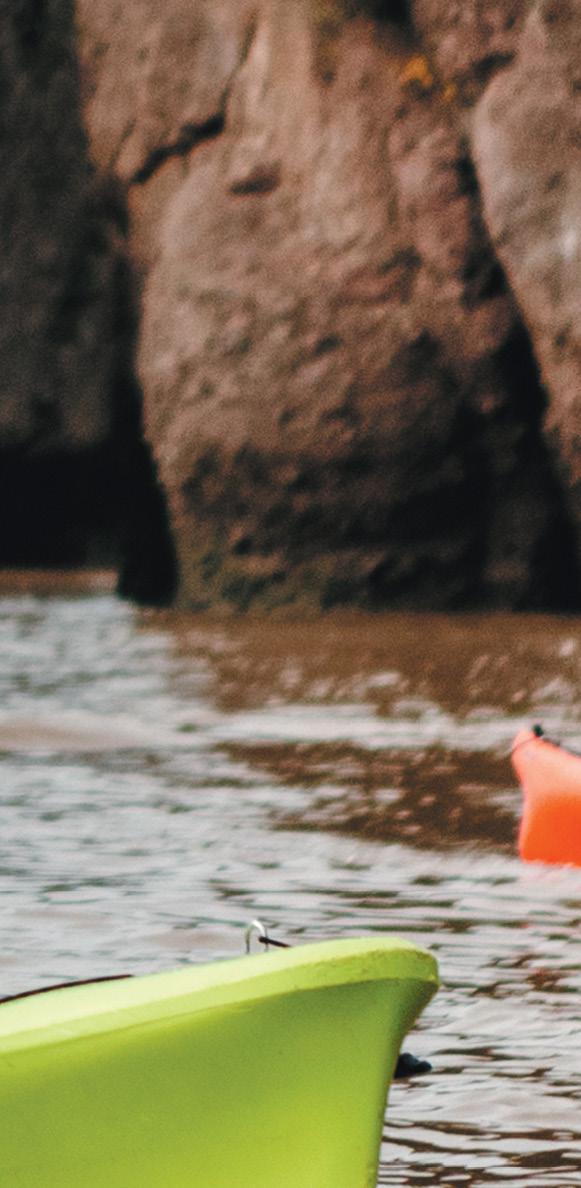


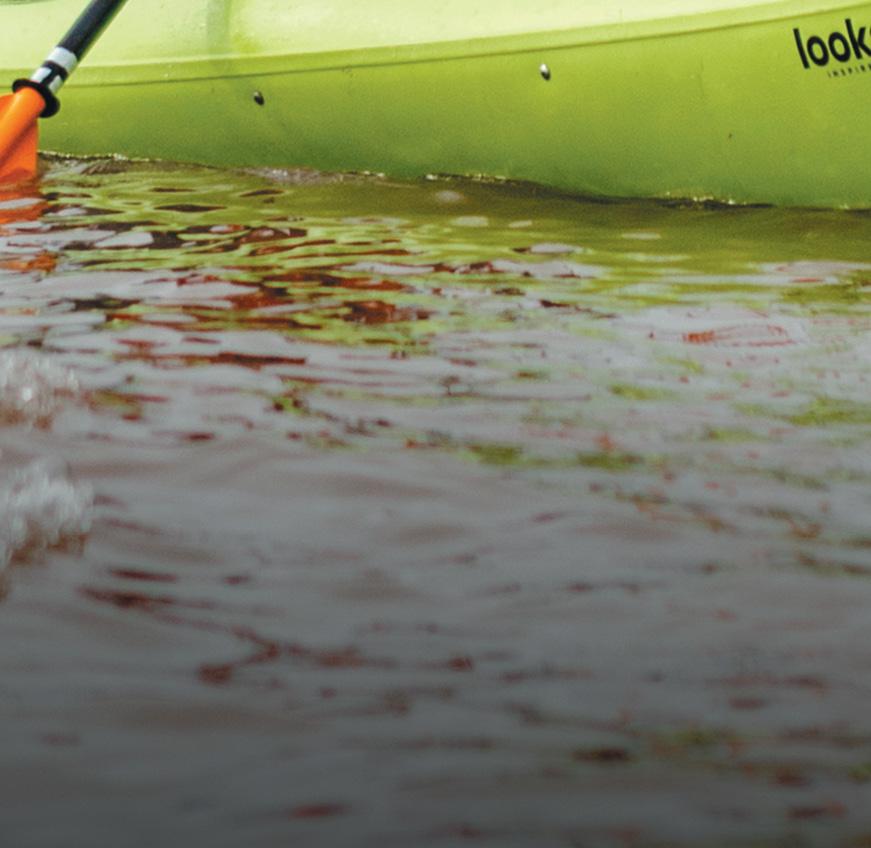




















CHANGE OF SCENERY HEAD OVER FOR A ALWAYS INVITING TourismNewBrunswick.ca HOPEWELL ROCKS PROVINCIAL PARK























































 Top: Canoe inside Metepenagiag Cultural Centre.
Above: The glamping tipi at Metepenagiag Heritage Park.
Top: Canoe inside Metepenagiag Cultural Centre.
Above: The glamping tipi at Metepenagiag Heritage Park.
















 The Door of No Return in the basement.
The Door of No Return in the basement.




 Interpretative panel, Kouchibouguac Lagoon.
Interpretative panel, Kouchibouguac Lagoon.








 Area 506 music and crafters festival at the container village.
Area 506 music and crafters festival at the container village.















 BY SHELLEY CAMERON-MCCARRON
BY SHELLEY CAMERON-MCCARRON






 SUBMITTED
This former lobster boat is now an Airbnb that sleeps six.
Walk with llamas on the beach.
SUBMITTED
This former lobster boat is now an Airbnb that sleeps six.
Walk with llamas on the beach.








 BY CAROL PATTERSON
BY CAROL PATTERSON

 CAROL PATTERSON
CAROL PATTERSON
The ferry shuttles visitors to Bell Island several times a day.
CAROL PATTERSON
CAROL PATTERSON
The ferry shuttles visitors to Bell Island several times a day.
 BY DARCY RHYNO
BY DARCY RHYNO

 Above: Port Union, Newfoundland, by evening. Inset: Sir William Coaker, a driving force for the community’s beginnings.
Above: Port Union, Newfoundland, by evening. Inset: Sir William Coaker, a driving force for the community’s beginnings.



































 STORY AND PHOTOGRAPHY BY DARCY RHYNO
STORY AND PHOTOGRAPHY BY DARCY RHYNO



 A lone horse wanders the shoreline. Ipswich sparrows breed on the island.
A lone horse wanders the shoreline. Ipswich sparrows breed on the island.









 BY DARCY RHYNO
BY DARCY RHYNO





















 Sergeant Andrew Crawley, Halifax Citadel.
The Raise Your Spirits tour, Halifax Citadel.
DARCY RHYNO
Sergeant Andrew Crawley, Halifax Citadel.
The Raise Your Spirits tour, Halifax Citadel.
DARCY RHYNO










 The Salt Banker’s welcoming committee.
The Hawk Beach and the drowned forest of 1,500-year-old trees.
The Salt Banker’s welcoming committee.
The Hawk Beach and the drowned forest of 1,500-year-old trees.




































 STORY AND PHOTOGRAPHY BY DARCY RHYNO
STORY AND PHOTOGRAPHY BY DARCY RHYNO












 STORY AND PHOTOGRAPHY BY DARCY RHYNO
STORY AND PHOTOGRAPHY BY DARCY RHYNO

 Bubble window, The Merlot.
Lobster buoys bear the name of island fishers lost at sea. These buoys grace a lobster trap Christmas tree.
Bubble window, The Merlot.
Lobster buoys bear the name of island fishers lost at sea. These buoys grace a lobster trap Christmas tree.






































 STORY AND PHOTOGRAPHY BY DARCY RHYNO
STORY AND PHOTOGRAPHY BY DARCY RHYNO


 STORY AND PHOTOGRAPHY BY DARCY RHYNO
STORY AND PHOTOGRAPHY BY DARCY RHYNO












































 BY JODI DELONG
BY JODI DELONG





































 Chef Keith Broome (in his Jim Carrey pose) in the kitchen at VEGolution, Saint John.
Chef Keith Broome (in his Jim Carrey pose) in the kitchen at VEGolution, Saint John.





































 PATRICK KOENIG
PATRICK KOENIG















































































































































